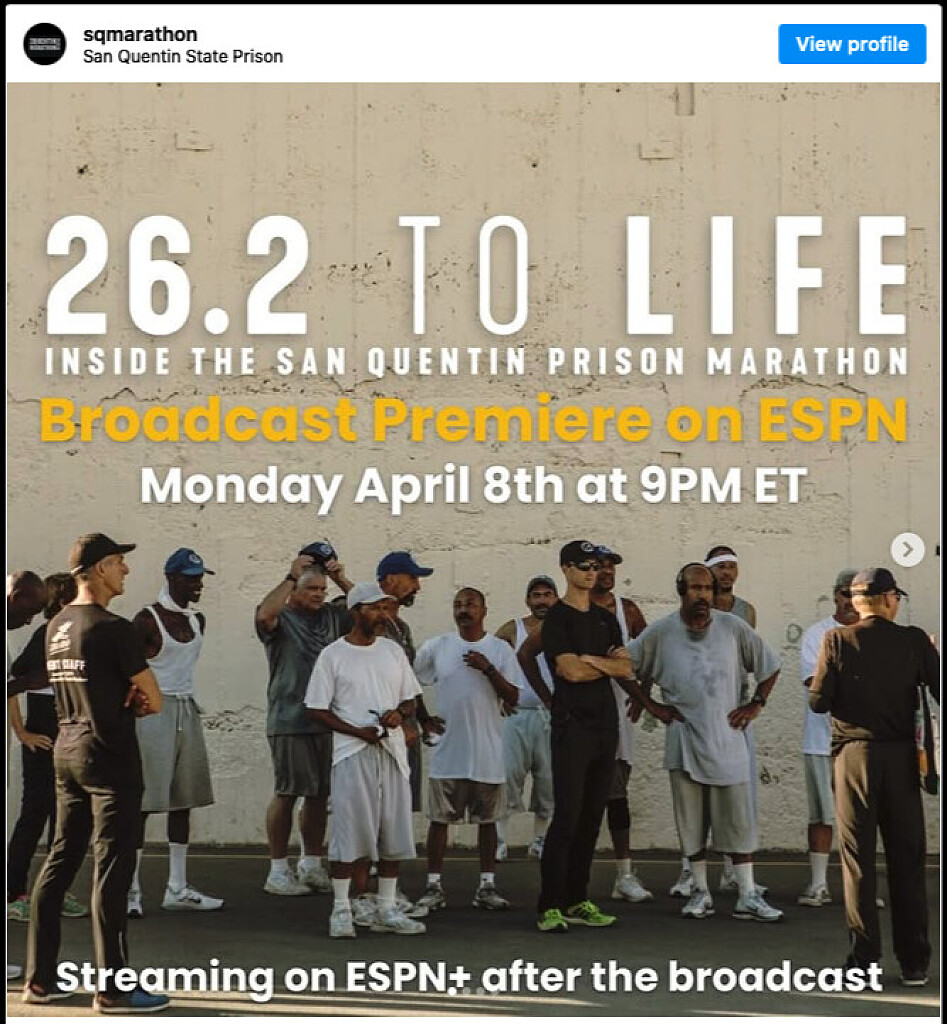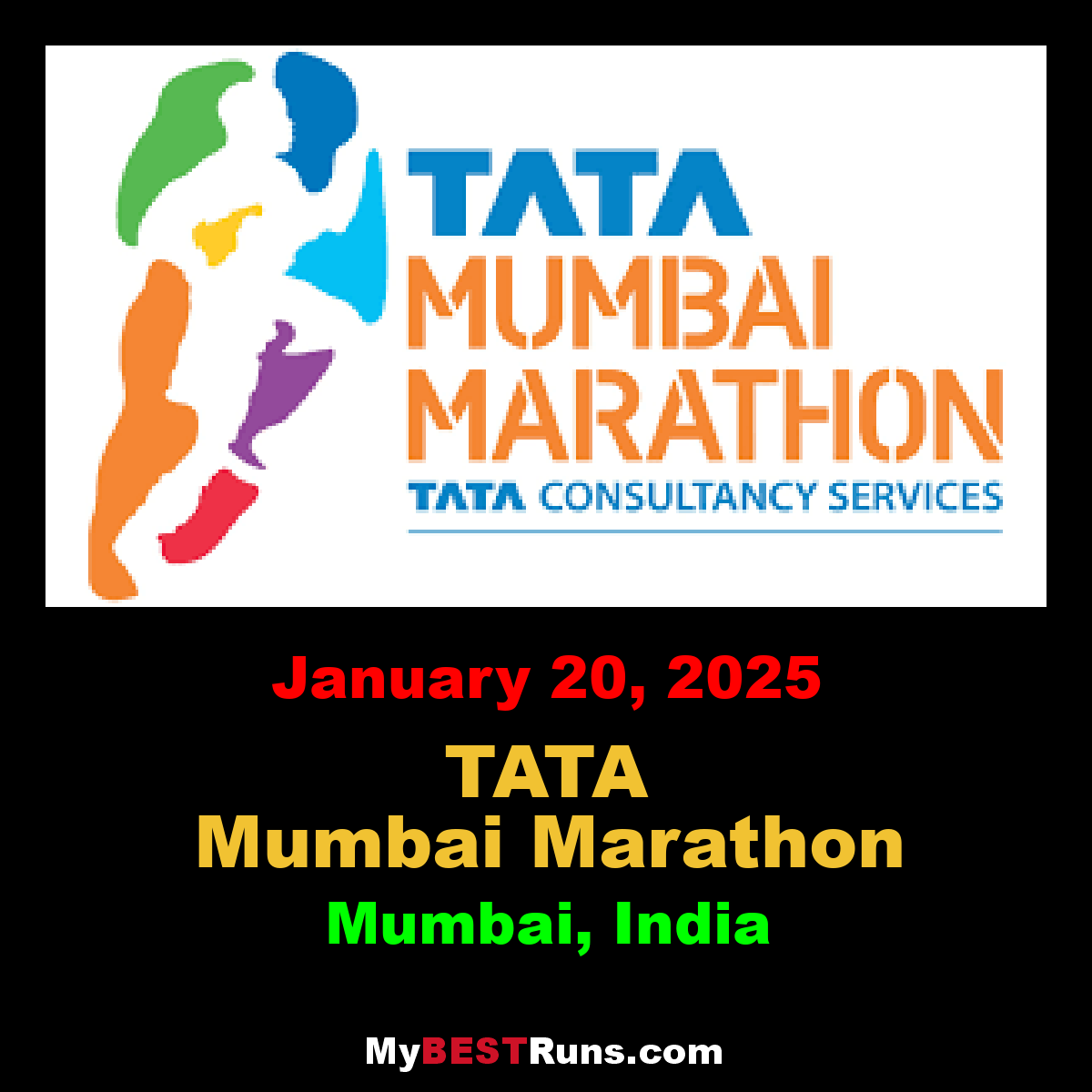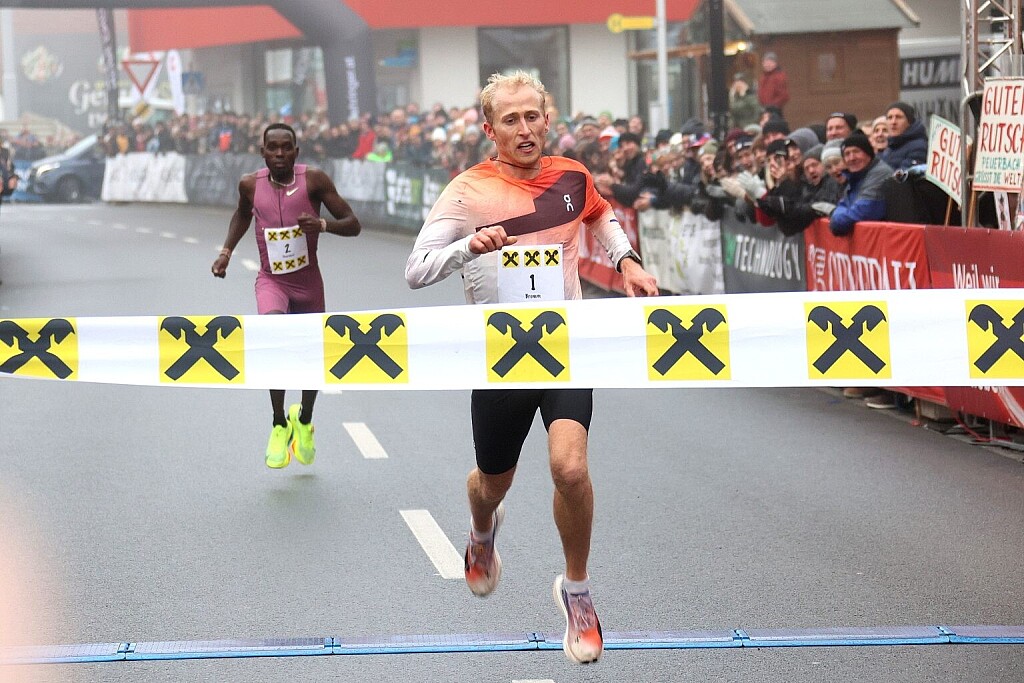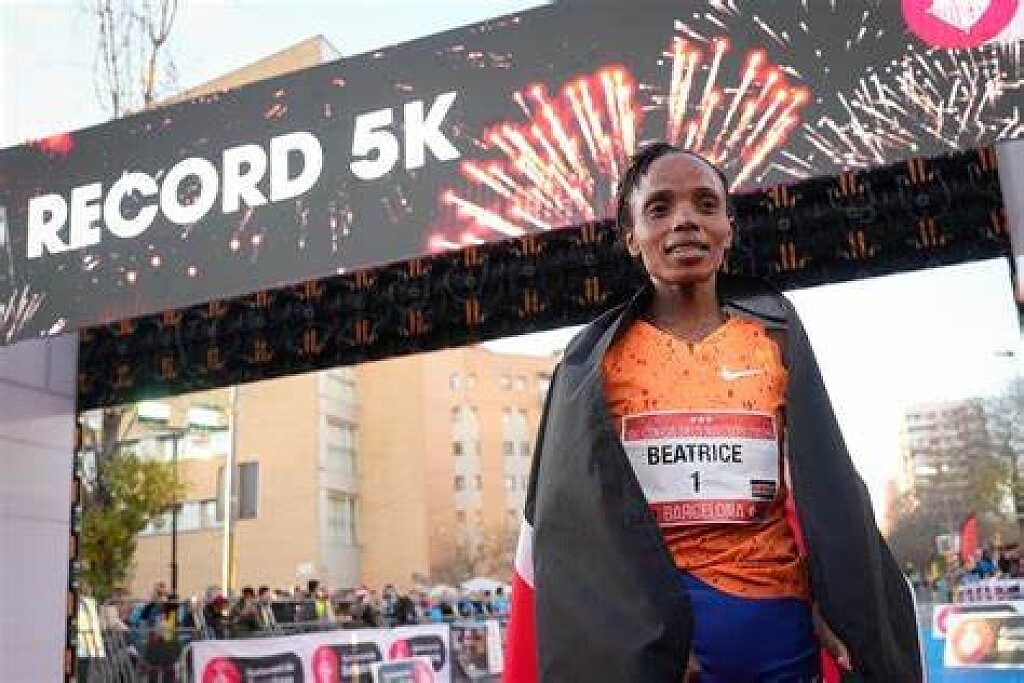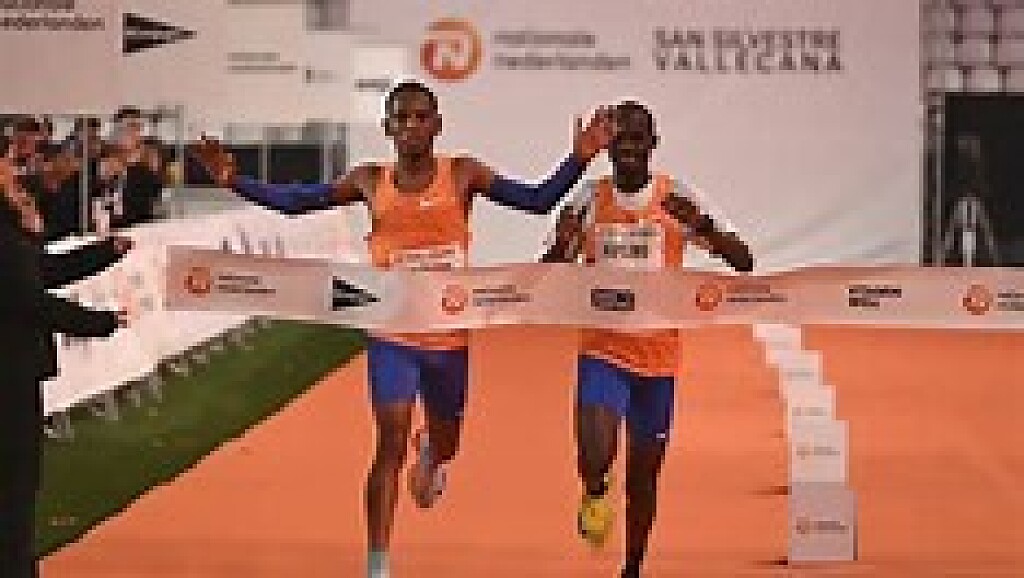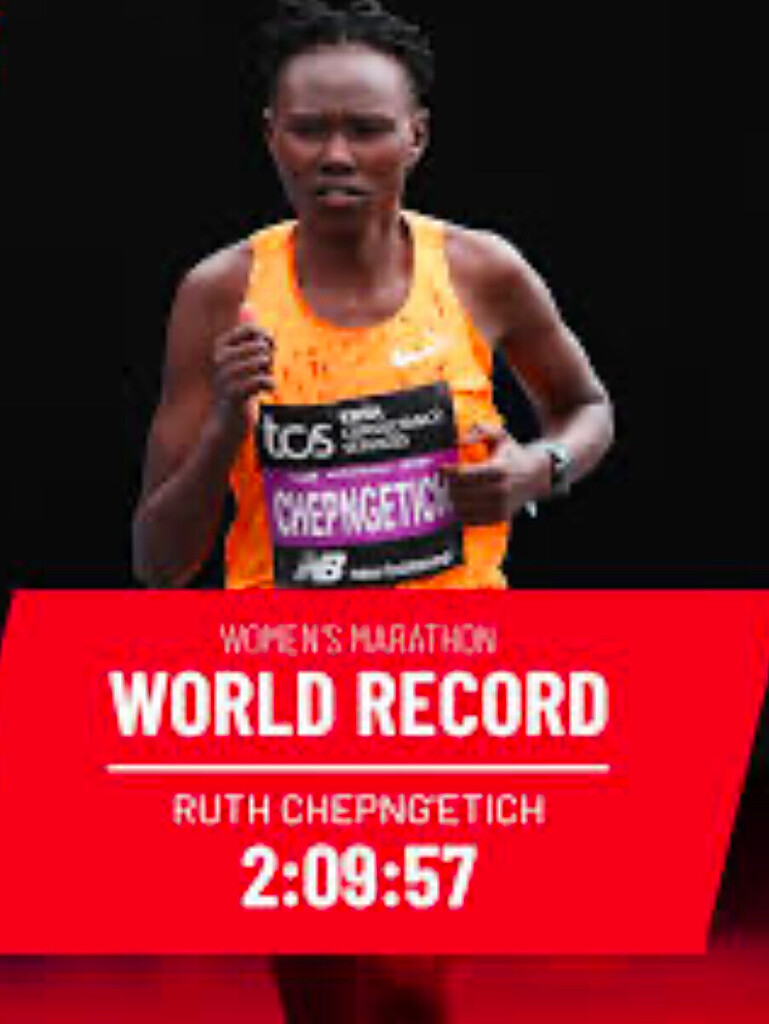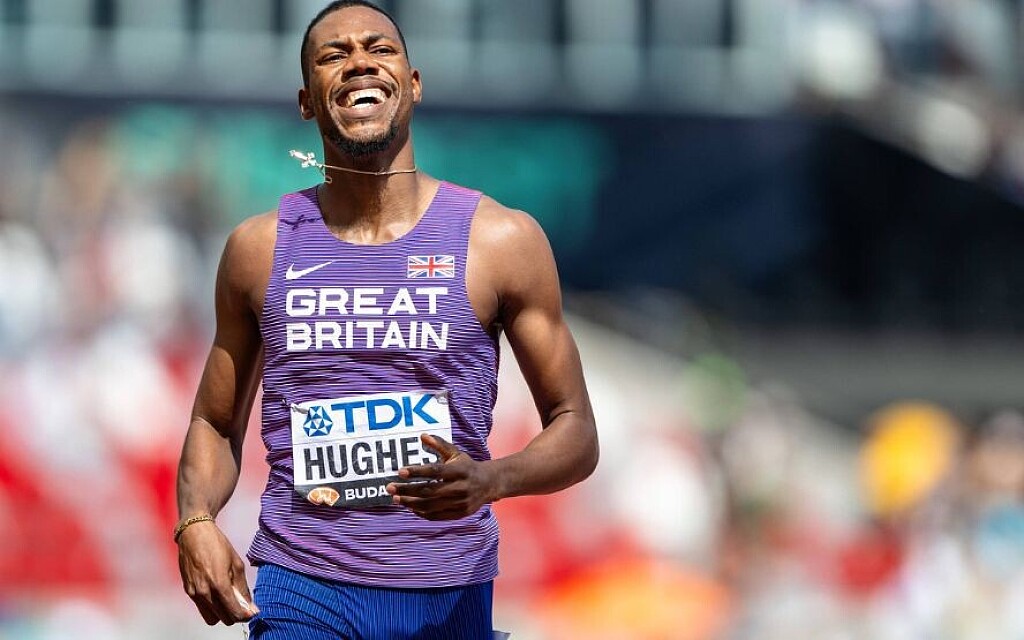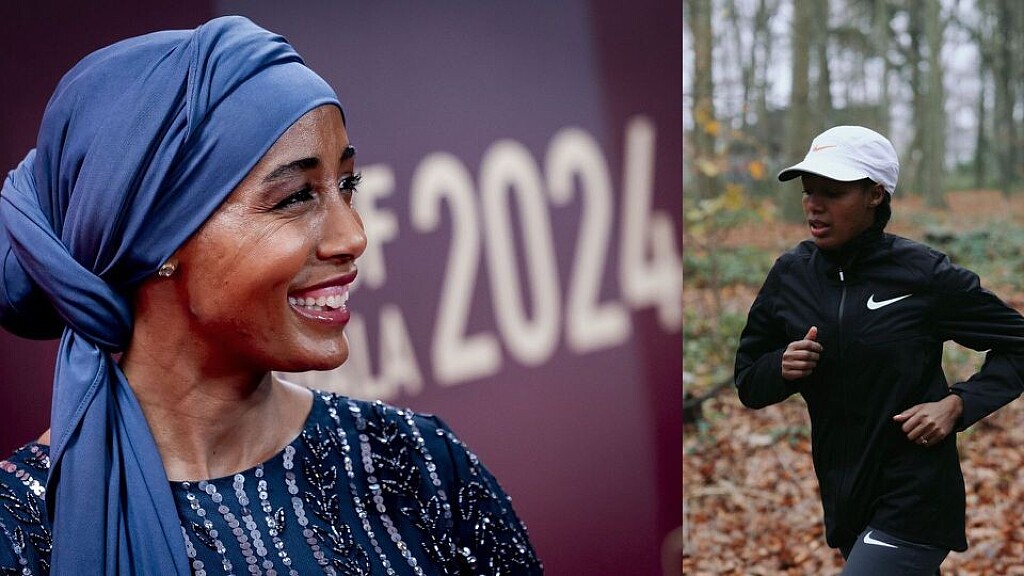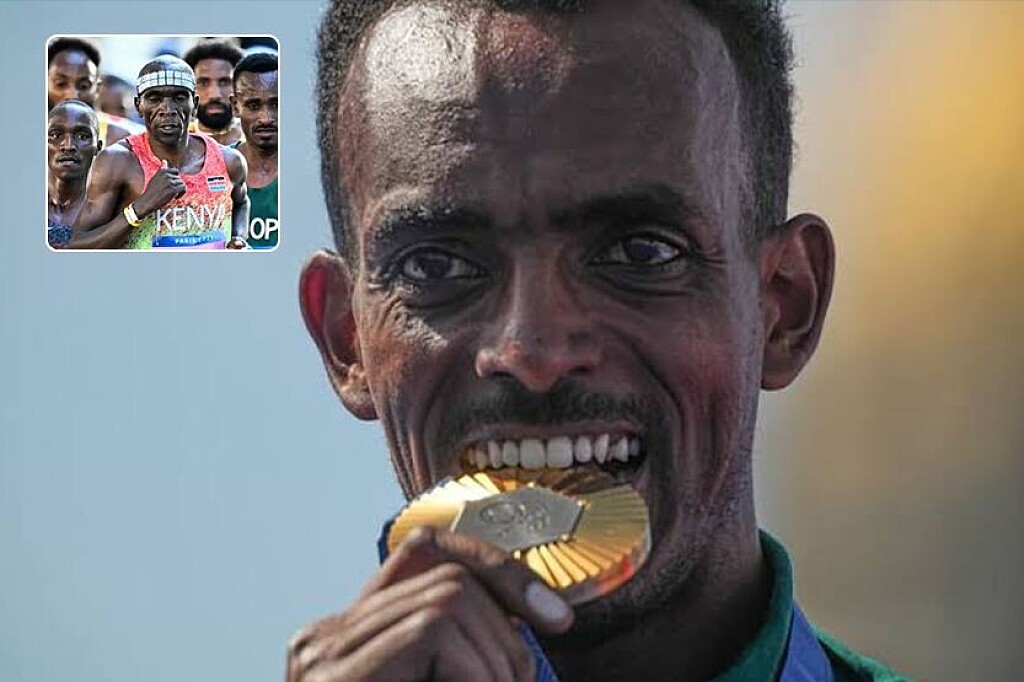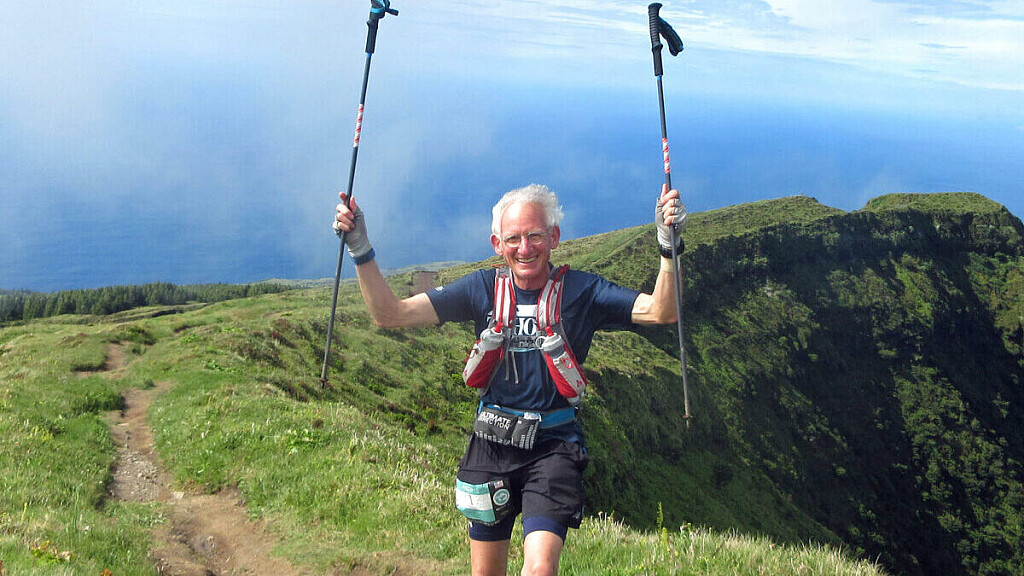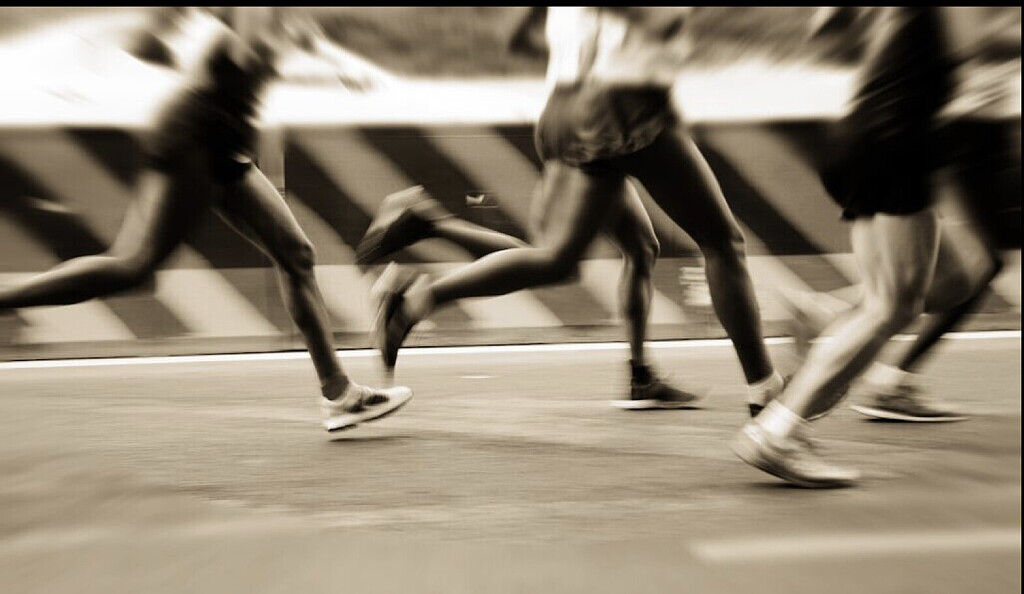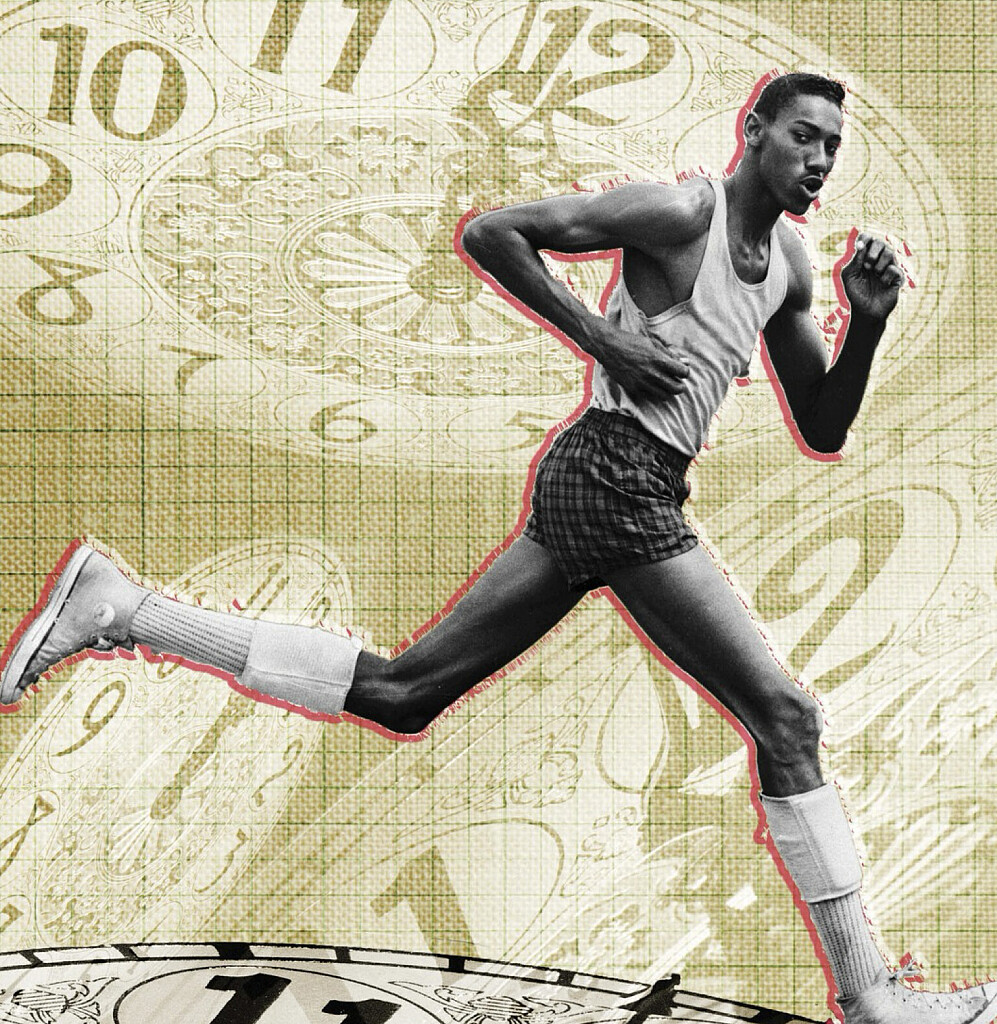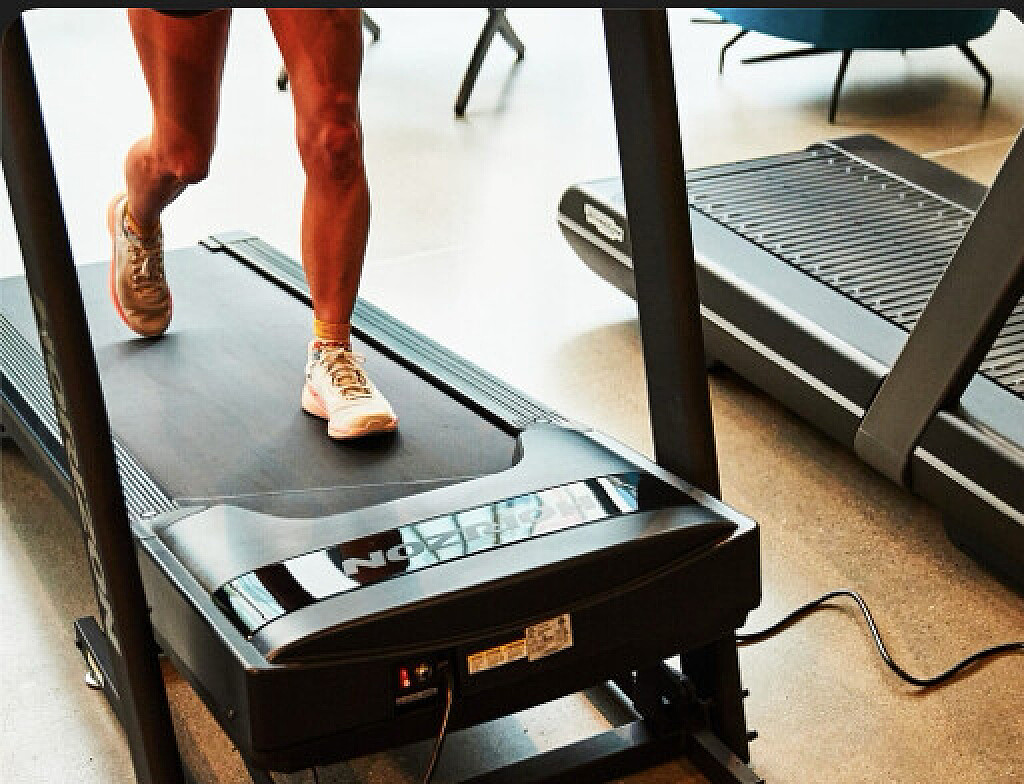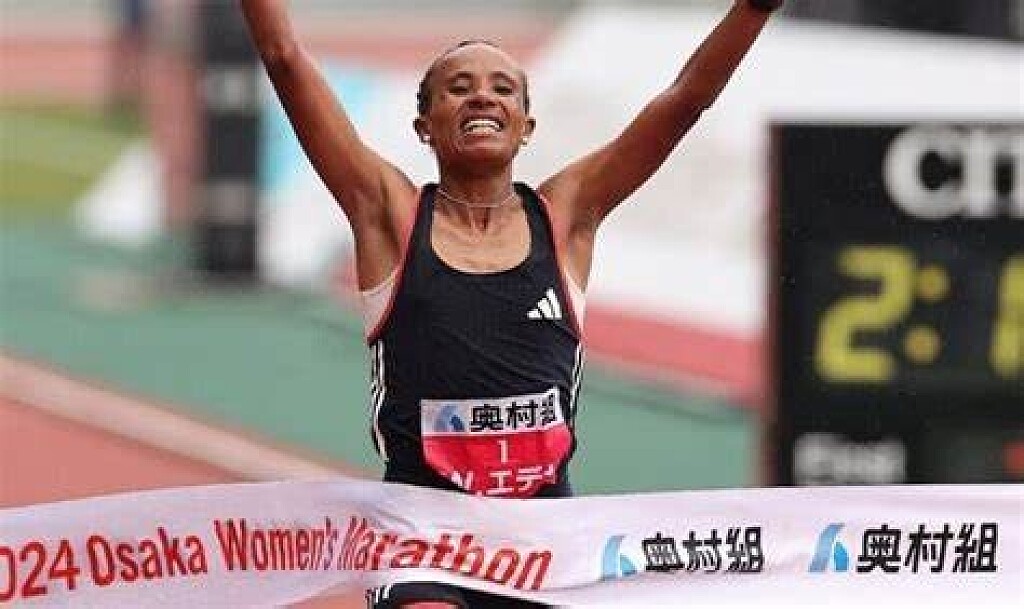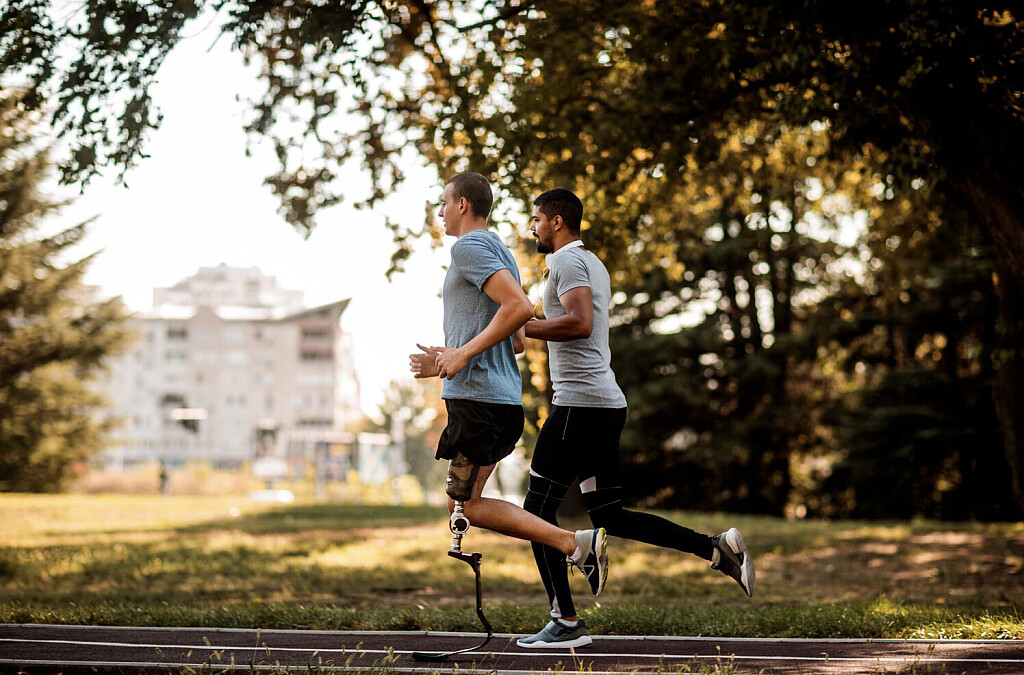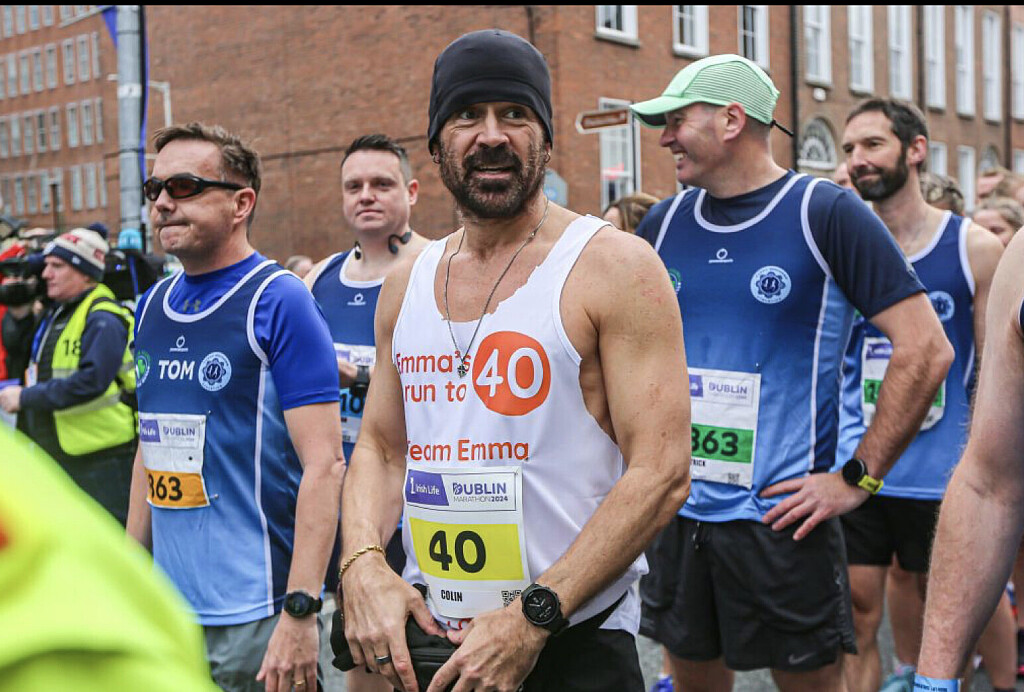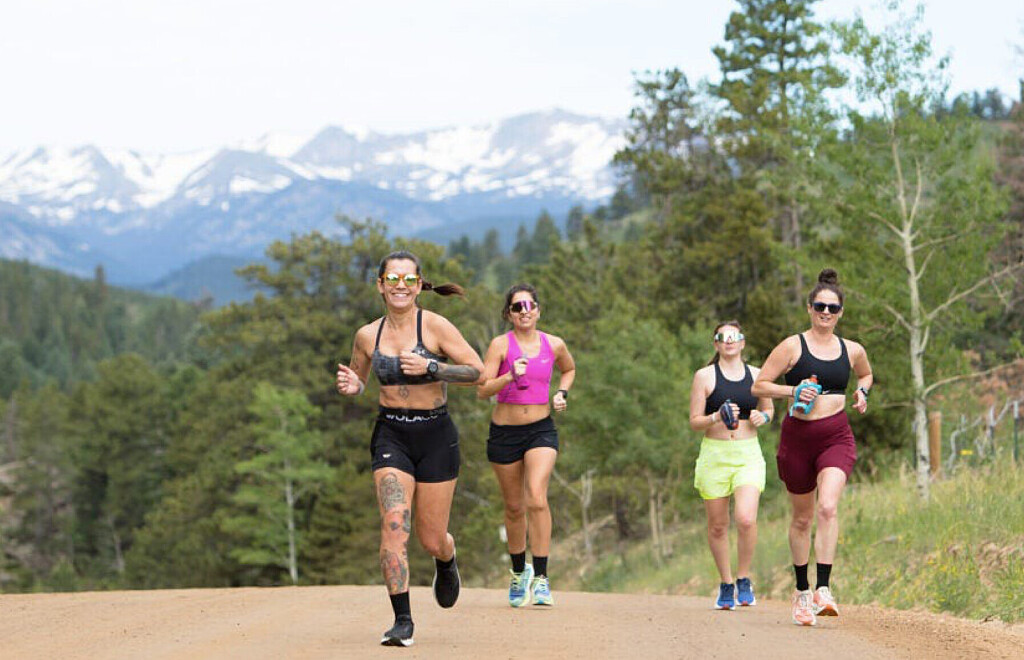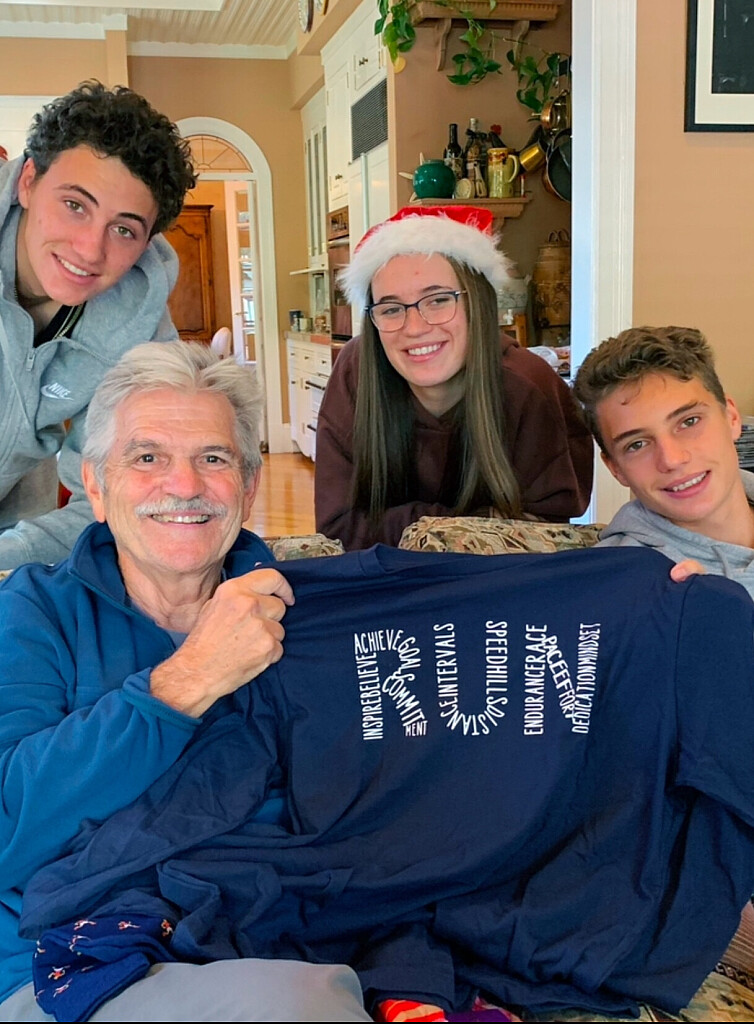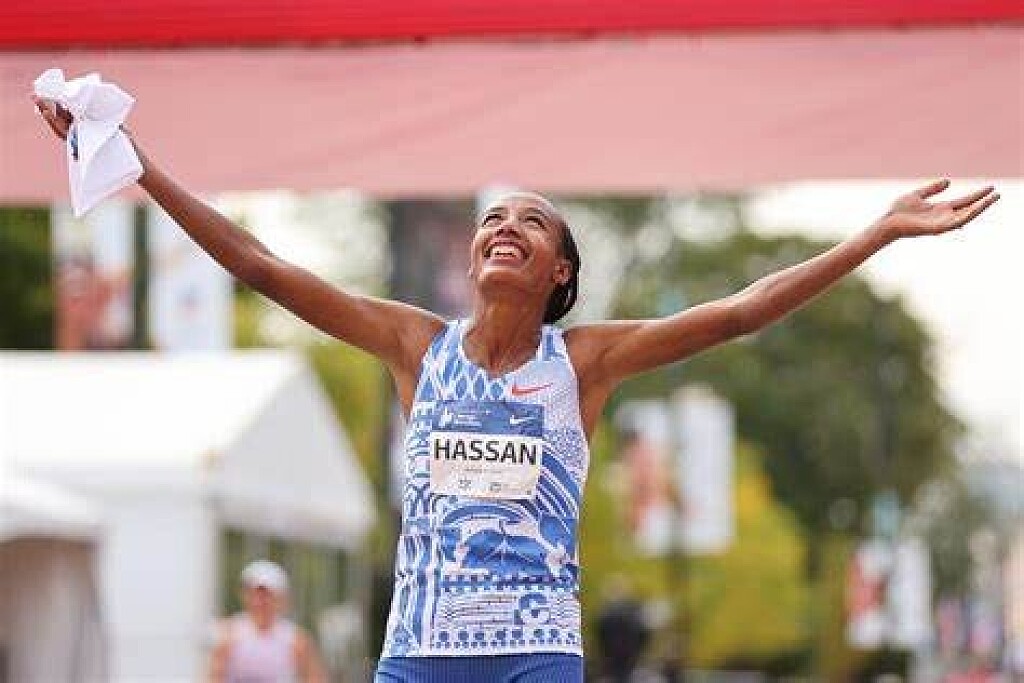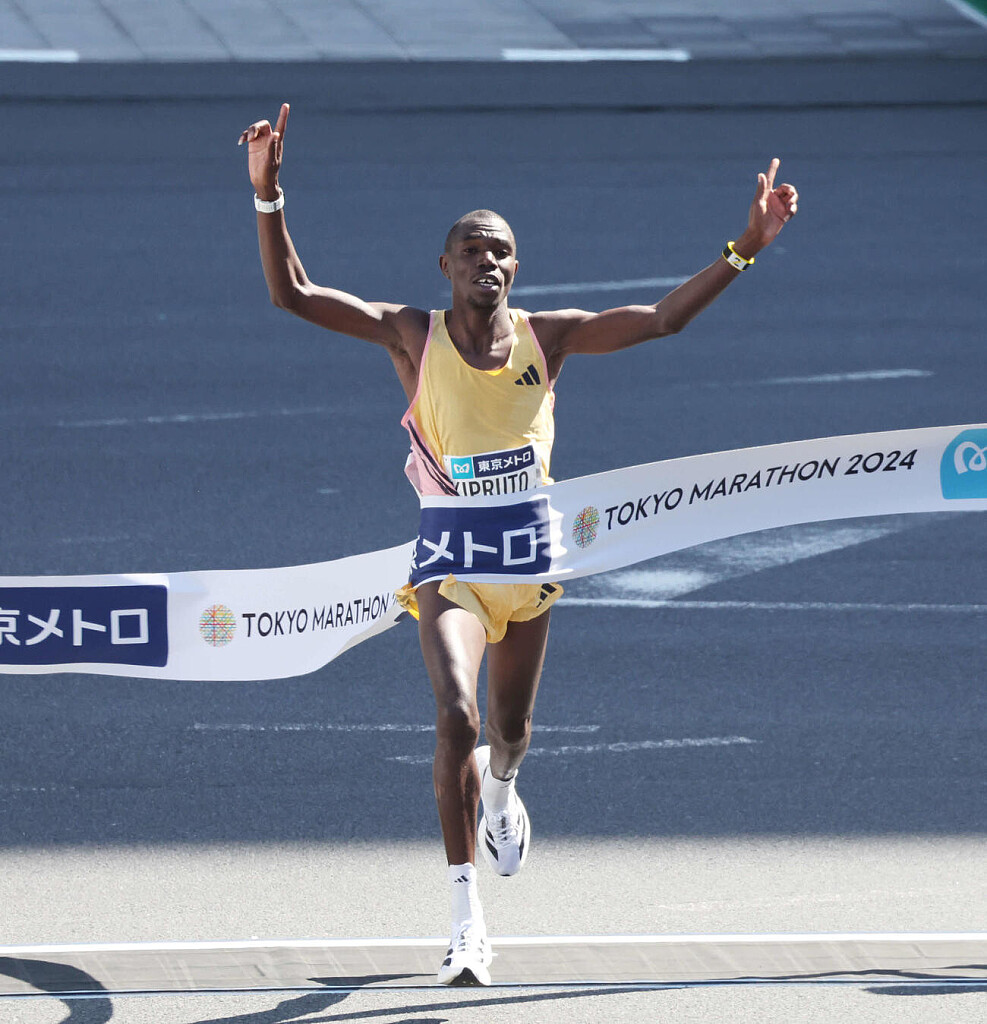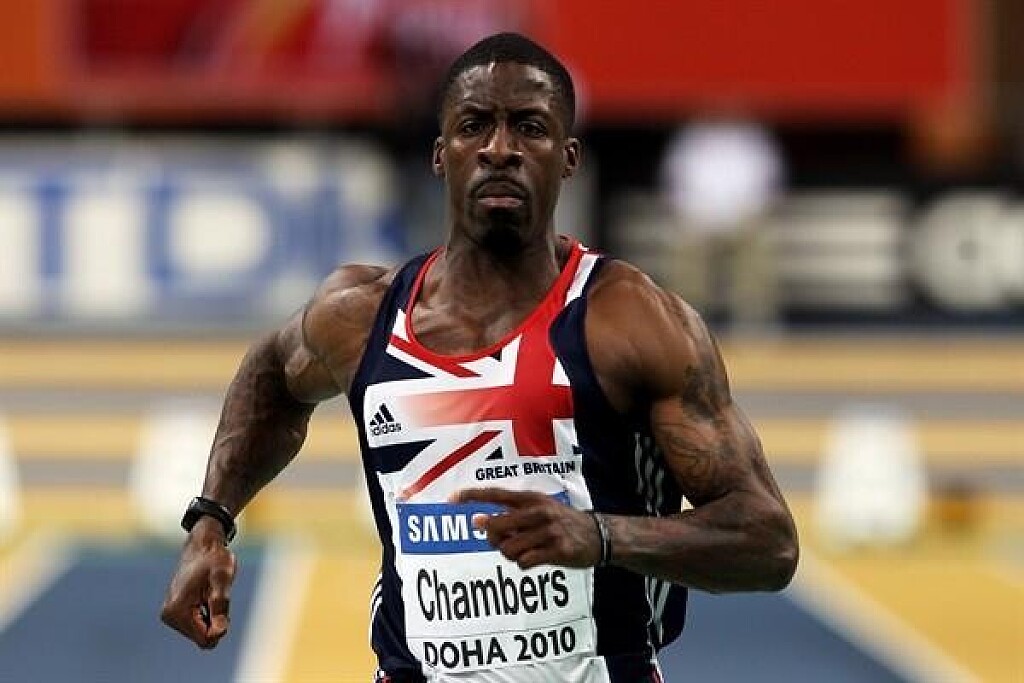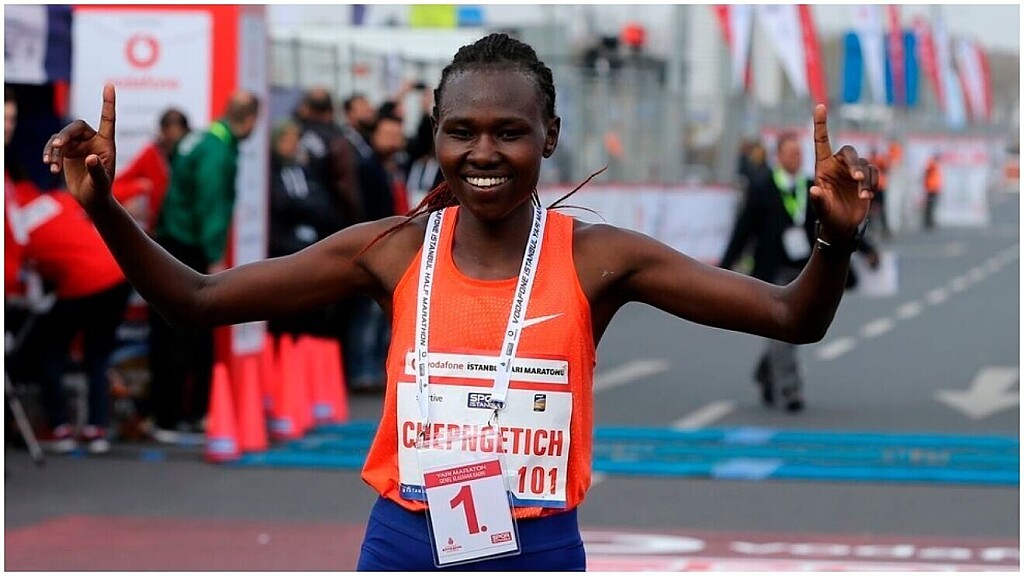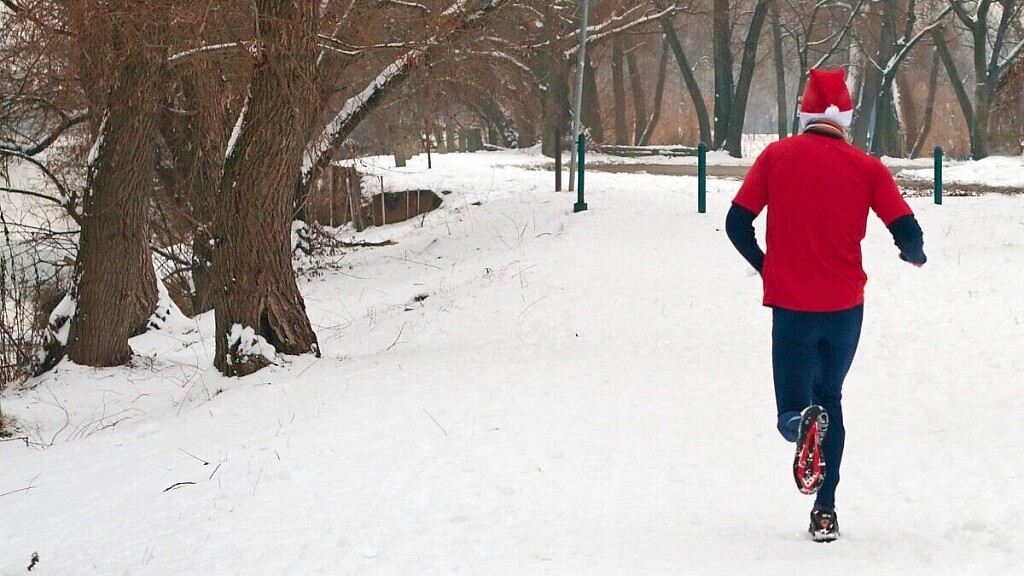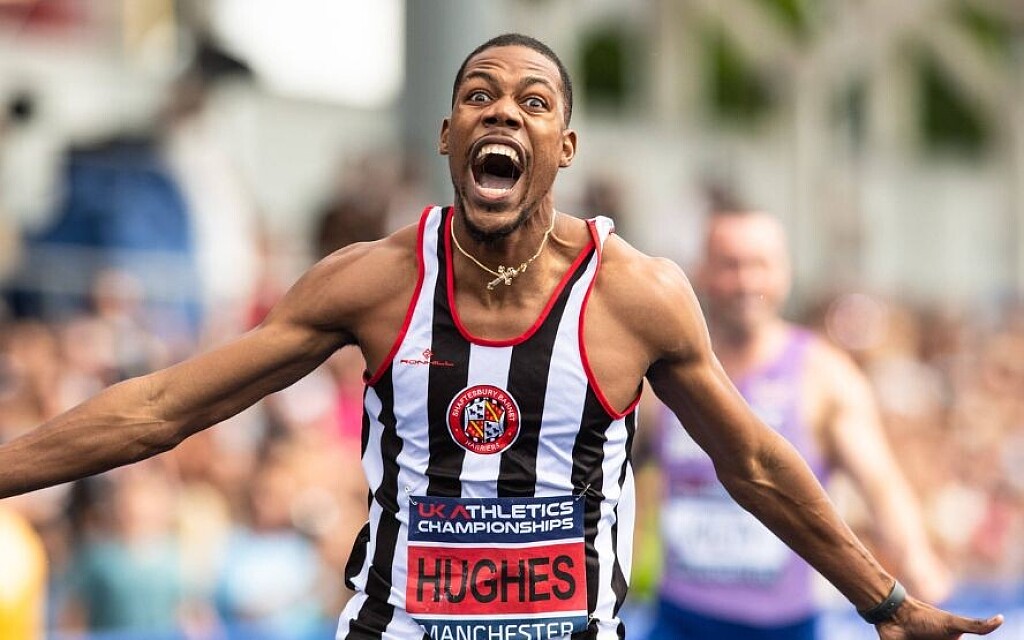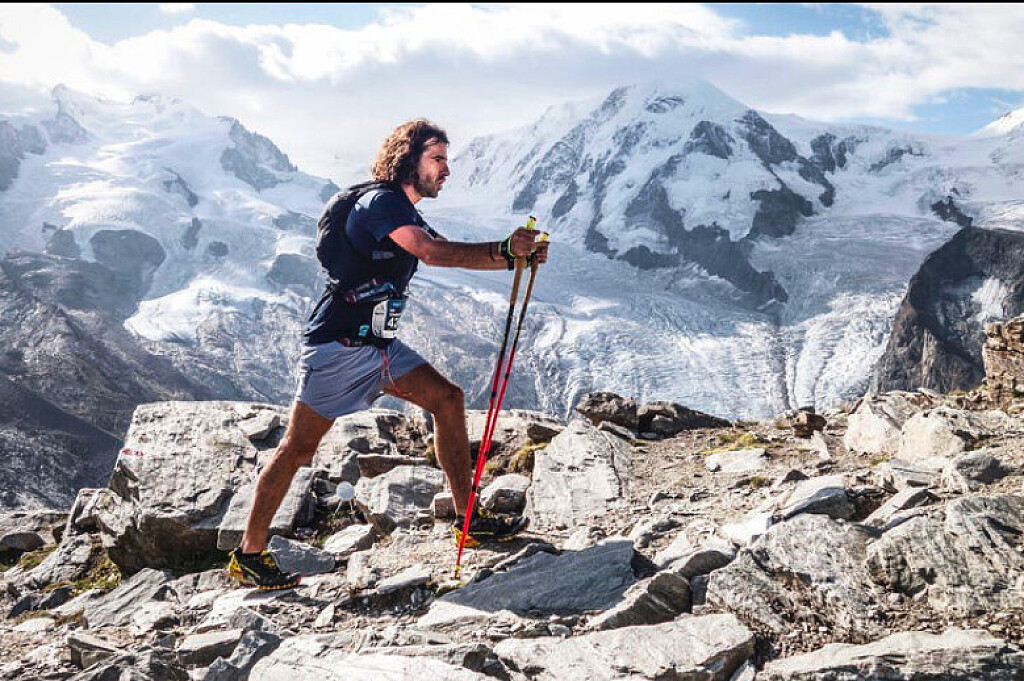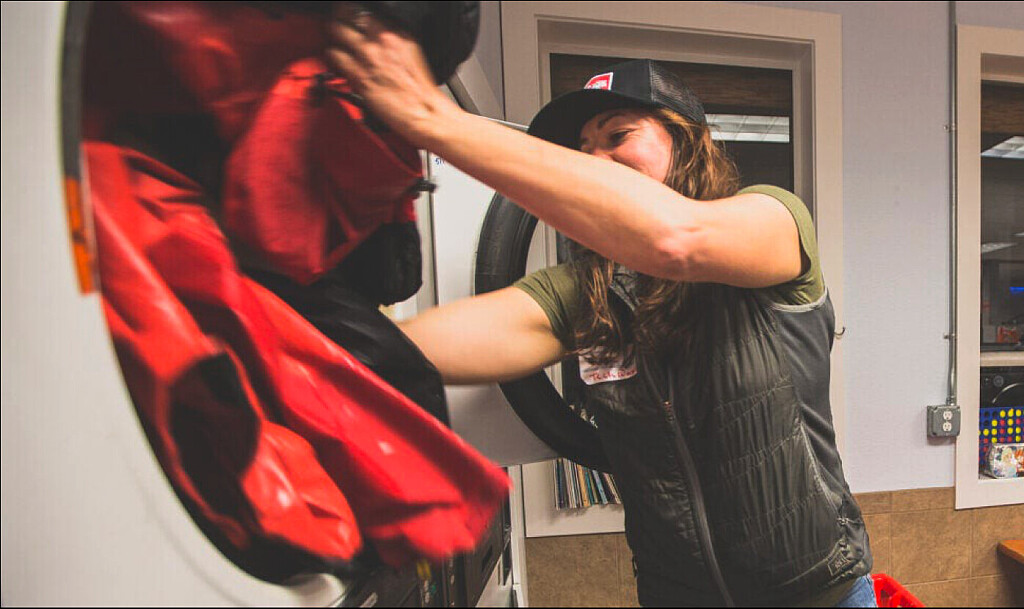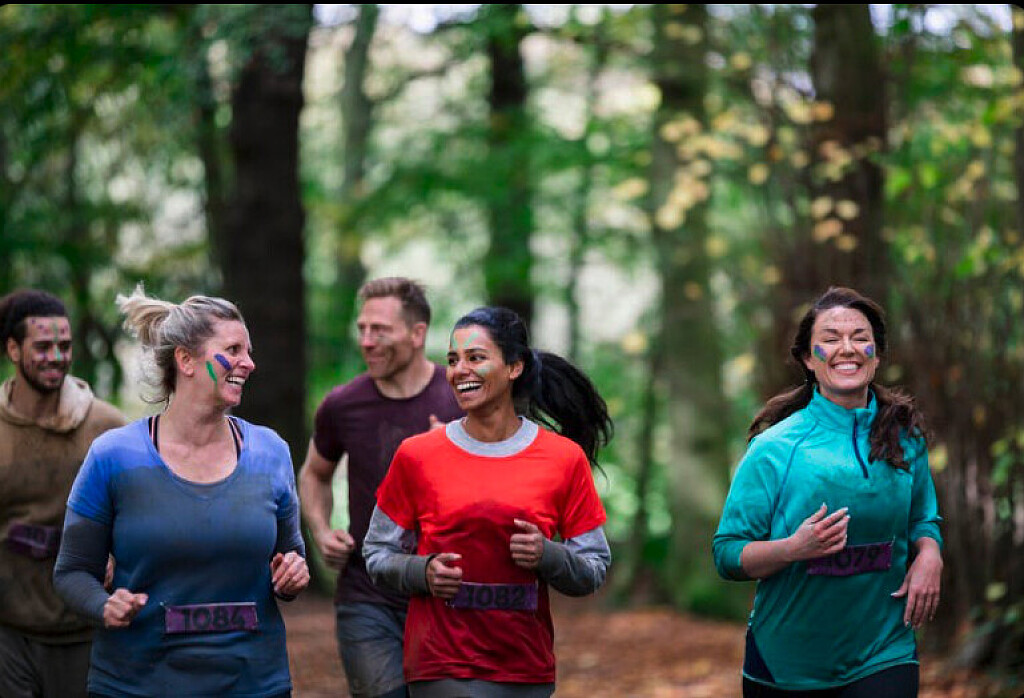Running News Daily
Running News Daily is edited by Bob Anderson. Send your news items to bob@mybestruns.com Advertising opportunities available. Train the Kenyan Way at KATA Kenya and Portugal owned and operated by Bob Anderson. Be sure to catch our movie A Long Run the movie KATA Running Camps and KATA Potato Farms - 31 now open in Kenya! https://kata.ke/
Index to Daily Posts · Sign Up For Updates · Run The World Feed
How Many Steps Should You Actually Take in a Day to Boost Your Health—or Your Fitness?
We explain how to set your daily step goal, based on what you’re looking to achieve.
Because smartphones, watches, and fitness trackers easily track step counts, most of us are aware of roughly how many steps we take every day. Even non-exercisers may try to hit a daily step goal. Via mostly good press, not science, 10,000 steps is a common goal many focus on as a marker of movement success.

While 10,000 is an easy-to-remember number, like any other fitness metric, your daily step goal should likely be personal and based on your specific goals, such as improving general health metrics or losing weight.
To turn your goal into a daily step count, though, you need to remember that exercise recommendations are given in minutes, not steps. Likewise, every person’s stride length and pace is not only specific to them, but highly variable, based on where they are walking and if they are walking alone or in a group.
“The American College of Sports Medicine (ACSM) recommends at least 150 minutes of moderate-intensity aerobic exercise per week, or 60 minutes of vigorous, which can be achieved by walking for many individuals,” Kaitlyn Baird, C.S.C.S, exercise physiologist at the Hospital for Special Surgery in New York City, tells Runner’s World.
As for point number two, according to Harvard, a brisk walker typically takes about 100 steps per minute. Therefore, a 20-minute brisk walk is likely equal to about 2,000 steps.
To help you find the right target, experts explain how to tailor your daily step count for specific health, fitness, and running habits.
Exactly How Many Steps You Need to Take Every Day, Based on Your Goals
If You’re Walking for Health... Aim for 8,000 Steps per Day
Being sedentary, or taking 4,000 steps a day or fewer, according to the NIH, is linked to poor health outcomes, so if you want to improve your overall health, taking anywhere from 7,500 to 10,000 steps daily is a great starting point. This range supports cardiovascular health, and can reduce the risks associated with prolonged sitting, like metabolic syndrome and cognitive or heart disease, Joshua Rieders, DPT, C.S.C.S., area director
Consider turning those breaks into a short workout routine, such as doing jumping jacks or going up and down stairs. Vigorous exercise lasting less than one minute and performed periodically throughout the day can improve cardiorespiratory fitness and other metrics of cardiometabolic health in previously inactive adults, according to a 2022 paper in Exercise and Sport Sciences Reviews.
If You’re Walking for Improve Fitness... Aim for 10,000 Steps a Day
When walking is your primary fitness activity, it’s not just about how many steps you take, but how you do it. ACSM’s fitness recommendation are achievable for most people, says Baird, and you can use walking to reach those goals.
One key of the ACSM guidelines is the variety of intensity levels. Moderate-intensity exercise means you can talk, but not sing, while vigorous means no talking or singing, but a little more huffing and puffing.
Increasing your walking intensity—by picking up the pace, adding inclines, or incorporating intervals—can make a big difference. “Higher-intensity walking (at a faster pace and/or uphill) can provide more significant benefits in less time due to the increased caloric demand, allowing you to meet your goals more efficiently,” says Rieders.
If
If You Run, Don’t Worry about Steps, but Walk for Recovery
Runners who log three to six miles a few times a week likely already exceed 10,000 steps on many days. “Walking should supplement your workout, particularly for individuals who are looking to maintain general health,” Rieders adds.
Still, runners should consider using walking as a form of active recovery both after their runs and on days when they don’t run. “Running would be your primary modality here, and walking could serve to reduce sedentary time and help with recovery,” says Baird. A leisurely walk can ease muscle soreness and prevent the stiffness that often follows higher-impact workouts.
Again, consider breaking up long periods of inactivity with short walks, for the best health results, Rieders says.
Training for a half or full marathon? As mentioned, a mile likely contains anywhere between 2,000 and 3,000 steps, so on your long run days, you are more than hitting the mark. Nevertheless, Rieders suggests taking some walking steps rather than being sedentary for recovery, but don’t worry about the exact number.
Your Best Step Goal—Count Step Breaks and Intensity
Instead of focusing on your daily step count, a more helpful goal
(01/05/2025) ⚡AMPPrison marathon documentary is changing lives behind bars
In 2024, 26.2 to Life, a powerful documentary by filmmaker Christine Yoo, brought the story of San Quentin’s 1,000 Mile Club to audiences worldwide. The film follows incarcerated men training for the San Quentin Marathon, held each year on a quarter-mile loop within the prison yard. Beyond earning critical praise, the documentary inspired change—spurring the creation of new prison running clubs and starting discussions about rehabilitation. Plans for 2025 are already underway, and the impact of 26.2 to Life continues to grow.
Reaching audiences across the world
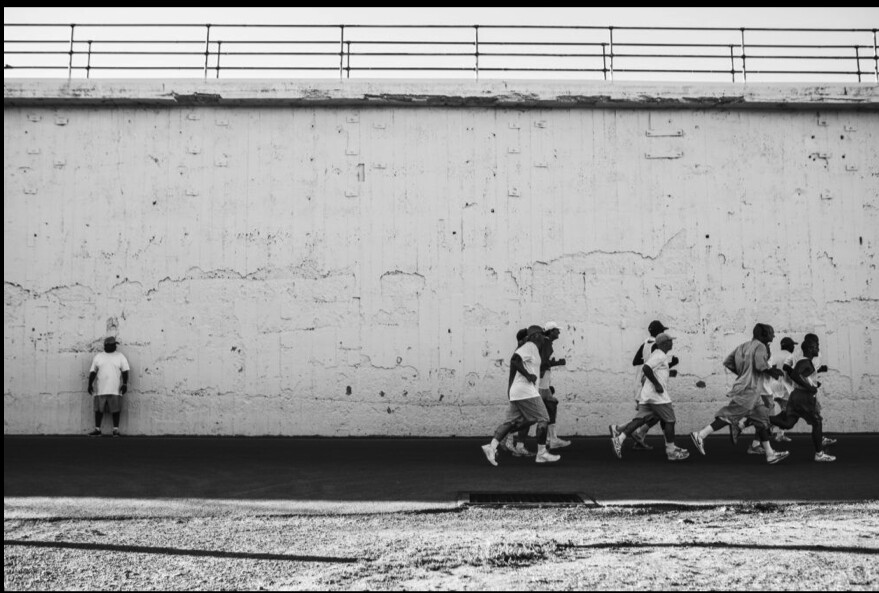
The 1,000 Mile Club evolved after a small group of volunteer coaches was permitted to start a running club in the prison almost 18 years ago, with the idea being that interested inmates could rack up 1,000 miles during their period of incarceration. 26.2 to Life had its broadcast debut on ESPN, bringing the story of the 1,000 Mile Club into living rooms across the U.S. The film is now streaming on ESPN+ and continues to air on ESPN2. Its global reach expanded with in-flight screenings on four different airlines, making the film accessible to more than 300 million passengers.
26.2 to Life has also received critical acclaim, with Best Directing and Best Producing nominations at the Women’s Image Awards. In February, the story will cross international borders with its BBC premiere in the U.K.
Inspiring transformation behind bars
Beyond its cinematic success, 26.2 to Life has created change. This fall, the film was screened at prisons in North Dakota, Oregon, California and Hawaii, offering hope to incarcerated individuals. As one volunteer at Columbia River Correctional Center noted, “Your film offers a powerful message of hope and a vision for possible changes in the penal system.”
The documentary has also inspired new prison running clubs. Seven clubs have been established across the U.S., with six more in the works. To support these efforts, the team developed a free handbook to guide the creation of new clubs, offering practical advice, sample workouts and stories of transformation. You can download a copy of their handbook here.
Looking ahead
The momentum isn’t slowing down. Starting in 2025, 26.2 to Life will become required viewing for all 43,000 employees of the California Department of Corrections and Rehabilitation as part of their annual training. In January, the film will also be showcased at the U.S. 9th Circuit Court of Appeals’ annual conference to foster discussions among judges about rehabilitation and change.
The mission to inspire continues with plans to bring the film to more prisons across the country and to expand the distribution of the 1000 Mile Club Handbook.
(01/05/2025) ⚡AMPAga and Wolde run course records to win in Xiamen
Ruti Aga and Dawit Wolde achieved an Ethiopian double at the C&D Xiamen Marathon, both athletes setting course records to win the World Athletics Platinum Label road race on Sunday (5).
Aga and Wolde were the fastest athletes in their respective fields and Aga won the women’s race in 2:18:46, claiming a dominant victory ahead of her compatriot Gutemi Shone Imana in 2:23:11, while Wolde secured the men’s title in 2:06:06 ahead of Lesotho’s Tebello Ramakongoana, who ran a national record of 2:06:18.
Aga lined up as the Chinese all-comers' record-holder thanks to the PB of 2:18:09 she set in Dongying in 2023. The 30-year-old now owns the two fastest women’s marathon performances ever achieved in China, as she was just 37 seconds off that mark in Xiamen.
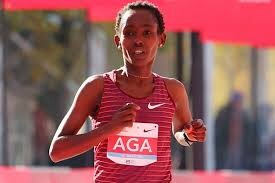
It was a return to winning ways for the 2019 Tokyo Marathon champion, who won the Daegu Marathon last April and then was runner-up in the Sydney Marathon in September.
Her time of 2:18:46 improved the previous course record by more than a minute. That course record of 2:19:52 had been set by Aga’s compatriot Mare Dibaba in 2015, the year in which she became the world marathon champion in Beijing.
Dibaba was also part of the field in Xiamen on Sunday and this time she ran 2:27:49 to finish fifth.
Behind Aga and Shone, Fikrte Wereta Admasu completed an Ethiopian sweep of the podium as she was third in 2:23:15, while Kenya’s Mercy Jerop Kwambai was fourth in 2:23:58.
While Aga was joined only by pacemakers in the final stages of the women’s race, Wolde still had three athletes for company as the men’s race reached the 40km mark.
But he managed to move away from his rivals to eventually claim a 12-second victory. Behind Wolde and Ramakongoana was Ethiopia’s defending champion Asefa Boki Kebebe, third in 2:06:32. His compatriot Chalu Deso Gelmisa was fourth in 2:06:45.
Ramakongoana’s performance took 1:40 off the national record he had set when finishing seventh at the Paris 2024 Olympic Games.
(01/05/2025) ⚡AMPCD XIAMEN INTERNATIONAL MARATHON
The C&D Xiamen International Marathon is an annual marathon race held in January in the coastal city of Xiamen in Fujian province, People’s Republic of China. Every January, the first medal of marathon race around the world is awarded here. The race has become a golden name card of Xiamen, showing its splendor to the whole world.It is one of...
more...Canadian 800m Olympian Madeleine Kelly announces retirement
The three-time national champion looks forward to a new chapter spent with her husband, Jeremy, and their new puppy, Pickle.
Three-time Canadian 800m champion and Tokyo Olympian Madeleine (Maddy) Kelly capped off an incredible 15-year career on Tuesday; the 29-year-old took to Instagram to officially announce her retirement.

Kelly had run professionally for ASICS since 2022 and has written for Canadian Running since 2018. She built an extensive resumé, earning spots on five national teams at World, Commonwealth and Olympic championships, partnering with various brands and joining the RBC Olympians program. Looking back at her experiences as a runner, Kelly says she wouldn’t change a thing.
“I’m so proud of my career and how it turned out,” she told Canadian Running. “I wouldn’t change anything.”

The Pembroke, Ont., native was first coached by Terry Radchenko in 2013, during her first year competing for the University of Toronto (U of T). Radchenko became one of the most influential figures in Kelly’s life, coaching her throughout her post-collegiate career. When asked which people taught her the most, Kelly responded, “Terry is number one.”
One of Kelly’s top-two favourite running memories comes from her time at U of T, when the Blues squad raced to a CIS (now U Sports) cross-country title in Victoria in 2017, Kelly’s final year. “We were really a team of 800m runners going up against some of the best distance squads in Canada,” she says. “And it was the first year running 8K.” (Women previously raced 5K.)
“The weather was horrible,” Kelly continues. “I don’t remember, but my teammate told me I woke up and said, we’re going to win today, and then we did. It was such a cool and special experience.”
Another favourite memory for Kelly is winning her first national title, at the 2019 Canadian Bell Track and Field Championships in Montreal. She clocked 2:02.37, edging out Canadian 800m record holder Melissa Bishop-Nriagu by three hundredths of a second. “That was a big day that really changed how I saw myself in the sport,” Kelly says. She went on to add two more Canadian titles to her collection, in 2022 and 2023, and dipped under the elusive two-minute barrier twice. Her personal best of 1:59.71, which she ran in 2022, stands as the eighth-fastest among Canadian 800m runners.
“Competition and I are in a weird place right now,” Kelly says. “But I still run almost every day. I love running–my relationship with running is in the best place it’s been for a while.” The athlete, now living in Hamilton with her husband, former 1,500m runner Jeremy Rae, keeps herself busy in this new chapter of her life with a new job in marketing, Pilates and their new dachshund puppy, Pickle.
She is also quick to acknowledge her former sponsor, ASICS. “I’m so grateful to the running community and everything running has given me,” Kelly says. “ASICS was amazing. It’s the end of this first chapter–but I’m excited to be a track and field fan now. There are always new people, so I’m excited to continue to follow the event.”
The end of 2024 marked the close of a handful of elite Canadian athletes’ careers. 5,000m Tokyo Olympian and two-time national champion Julie-Anne Staehli, who ran professionally for Team New Balance Boston, also announced her retirement from competition on the final day of 2024. On Instagram, the 31-year-old wrote “I still have so many goals in this sport, but I’m ready to start the next adventure.”
(01/04/2025) ⚡AMPby Cameron Ormond
U.S. Olympic 100m medalist arrested and tased by police in Miami
Fred Kerley was arrested on Thursday night after an altercation with Miami police.
On Thursday night in Miami, two-time Olympic 100m medallist Fred Kerley was arrested following a confrontation with police officers.
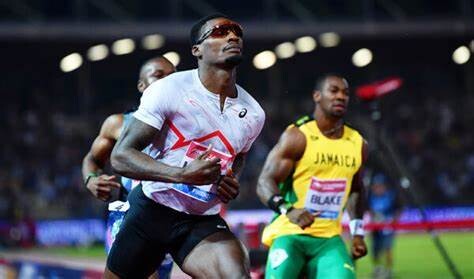
According to 7 News Miami, Kerley approached the scene of an active police investigation on Thursday after 11 p.m. ET, expressing concerns about his vehicle, which was parked nearby. Reports indicate that Kerley became increasingly aggressive and refused to leave when asked by officers. Body cam footage shows officers attempting to sort out the situation when Kerley became argumentative. Moments later, he appeared to push a police officer.
Emergency backup was called, and a stun gun was deployed to subdue Kerley, who was subsequently taken into custody.
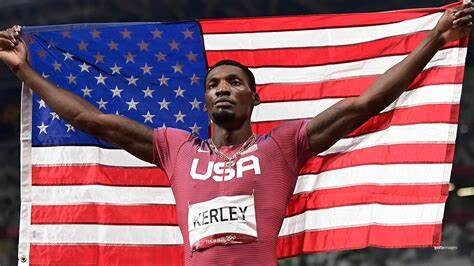
According to a report, the two-time American Olympian appeared in Miami-Dade bond court on Friday facing three charges. The judge found probable cause for the counts of battery on an officer and resisting arrest, but not disorderly conduct. The judge ordered Kerley to be released without having to pay bail, and to sign a written letter to appear in court at a future date.
“Sir, you’re probably smart to stay off Miami Beach,” the judge warned Kerley, according to Miami’s Local 10 News. “Go somewhere else to go to dinner, avoid getting in trouble, because if you get re-arrested, you’re going to be locked up in jail until your trial.”
The 29-year-old from Taylor, Texas, boasts a 100m personal best of 9.76 seconds, making him the third-fastest American sprinter in history. Throughout his career, Kerley has won two Olympic medals and six world championship medals.
(01/04/2025) ⚡AMPby Marley Dickinson
Miniature dachshund runs four-minute mile without training
When you think of dog breeds that can run, the miniature dachshund isn’t the first breed that comes to mind. But that little 20-lb frame is faster than you may think. YouTuber and three-time NCAA steeplechase champion Allie Ostrander put her pet dachshund, Georgie, through a one-mile time trial, and you’ll be shocked by his distance-running abilities.
Ostrander and her partner, Spencer Brown, attached a dog treat to a stick and hung it off the back of a car to keep their dachshund motivated, while Brown held onto the leash as Georgie got his wheels turning.

According to the YouTube clip, Georgie completed the first quarter mile at just under a five-minute mile pace, which Ostrander thought was him going out too fast. But by halfway (800m), the dachshund had sped up, and he held on to finish the mile in 4:47.66. To put that time and pace in perspective, it’s an average speed of over 20 km/h.
Dachshunds, affectionately referred to as wiener dogs, are surprisingly speedy for their size. While they may not be able to match the endurance of larger, more athletic breeds (like a border collie or a vizsla), they are incredibly agile with their short legs and long bodies, reaching speeds of up to 24 kilometres per hour (which adds up, given Georgie’s finishing time).
Georgie was rewarded with the dangling treat and water at the end of his time trial. Maybe if there was a golf cart full of doughnuts or pizza in front of runners at their next mile or 1,500m race, they’d run a personal best, too.
Like the rest of us, Ostrander initially didn’t have high hopes for Georgie, as she was unsure if a miniature dachshund could move its little legs that fast without training. Georgie, however, still had gas in the tank at the finish, while Ostrander and Brown were in the hands-on-knees position after 1.609 km.
It turns out, even if it might not look like it, the next wiener dog you see is likely faster than you.
(01/04/2025) ⚡AMPFlorida man reaches 50-year run streak
Miami’s Robert “Raven” Kraft was streaking long before it was cool, and not in the way that gets you arrested. On Tuesday afternoon at 5th Street Lifeguard Station in Miami’s South Beach neighbourhood, Kraft completed his 18,263rd run, marking an impressive 50-year streak of daily running.
Kraft began his prolific streak on January 1, 1975, when he was 24, and over half a century later, he’s amassed 18,263 total runs and over 234,000 kilometres. That’s roughly equivalent to walking around the world more than five and a half times—quite a feat!
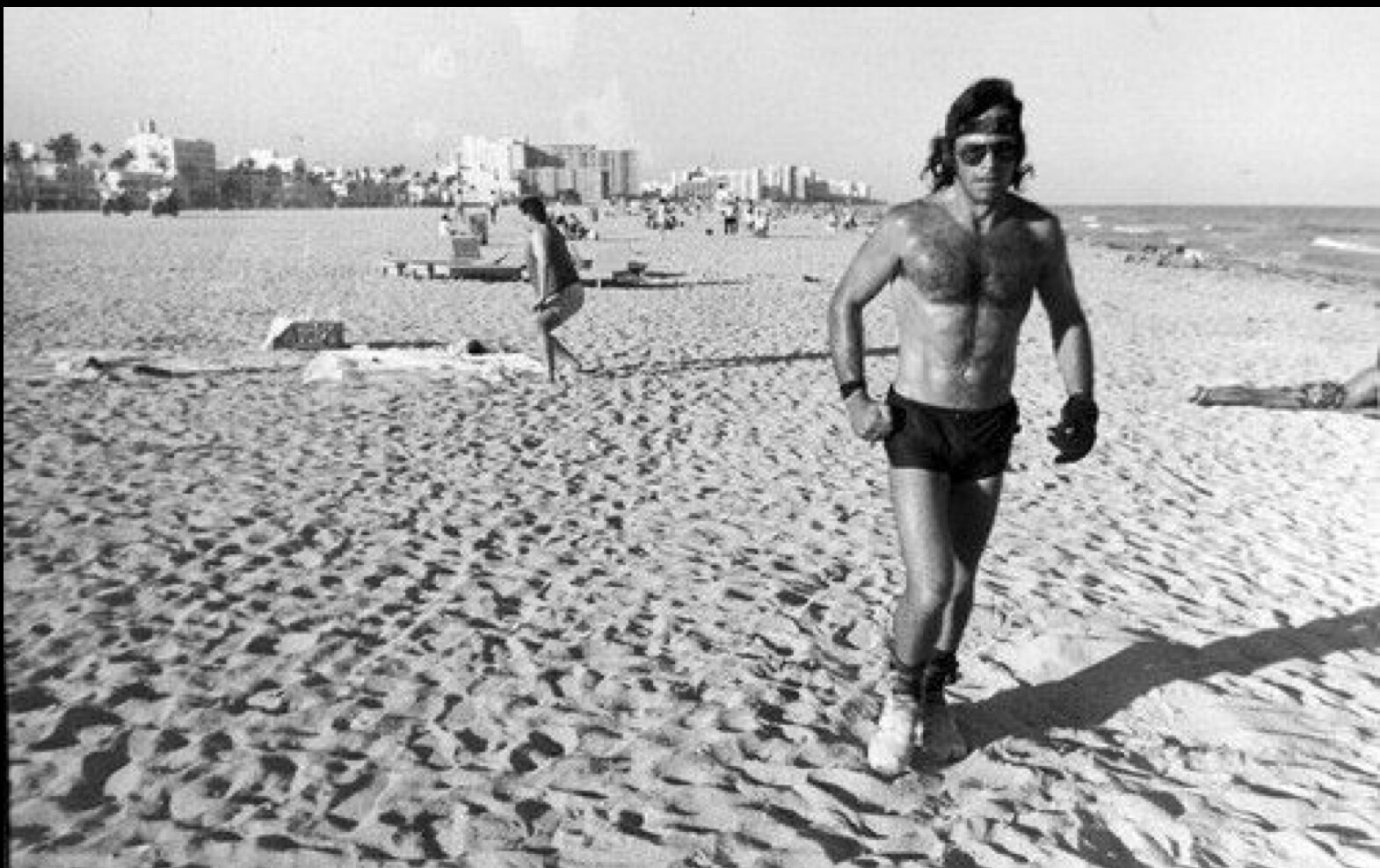
The 74-year-old was joined on Tuesday by hundreds of runners for his daily tradition of running eight miles (12.87 km) along the sands of South Beach. Kraft, who has also been a singer and songwriter for just as long, played a few songs after his anniversary run alongside the Dark Shadows band.
Beyond the streak, Kraft has built a community around his daily runs, called the “Raven Runners.” Unlike most, Kraft’s eight-mile route has never changed. He has reportedly run the exact same route in almost every single run. In an interview with Sports Illustrated, Kraft said he has a list of more than 3,700 runners from around the globe who have joined him for a run over the past 50 years. “The Raven List” reflects that he has been joined by runners from all 50 states, as well as runners from more than 60 countries.
Kraft’s legacy will soon be etched into Miami Beach’s history. On Jan 1, Third Street and Ocean Drive will reportedly be renamed “Robert ‘Raven’ Kraft Way.”
According to the United States Running Streak Association, Kraft has the sixth-longest active run streak. Jon Sutherland of Washington, Utah, holds the world’s longest-running streak with over 55 years (20,000+ days). Toronto’s Rick Rayman has the longest active run streak in Canada, with a total of 16,824 days (46+ years).
(01/04/2025) ⚡AMP5 icky running habits to drop in 2025
The new year often comes with a wave of resolutions and the familiar chorus of “New year, new me.” Sure–sticking to these promises is much easier said than done, but it’s worth a try–especially when some running habits don’t deserve a spot in your 2025 plans. Here are five habits runners should ditch while striding into this fresh year of training.
1. Comparing your stats


Whether you’re racing your training partners during intervals or getting lost in a Strava rabbit hole chasing kudos, it’s time to pump the brakes. Running isn’t always a competition, and continuously pushing the pace can sour relationships with your running buddies. No one enjoys being dipped at the finish line of a workout, especially when they’re expecting a chill session.
Remember, comparing stats–be it heart rate or paces–won’t always reveal who is the better athlete. Everyone’s body and running style is different; the workout warrior might not be as strong on race day. Moreover, constantly comparing yourself to your peers will take a toll on your mental health. Focusing on your own progress can allow running to continue being fun and fulfilling.
2. Running through pain
We’ve all done it–brushing off pain as mere stiffness or a minor tweak. But pushing through is a fast track to injury. Your running buddies don’t want to hear your complaints now, and they’ll want to hear them even less if that tweak turns into a major setback.
Taking a day or two off, or even swapping out running for a bike ride or fast hike (i.e., cross-training) could save you from weeks on the sidelines. Listen to your body and leave running through pain in the past.
3. Not washing hats and headbands
Running hats and headbands, usually lost in the bottom of your bag, often get overlooked on laundry day, leaving you with a smelly accessory you’re too embarrassed to admit hasn’t been washed in weeks. It’s official: this is the year we show our headwear as much love as our shirts and shorts. You can even go as far as investing in a couple of extras to keep the rotation fresh; your scalp–and teammates–will thank you.
4. Forgetting sunscreen
Runners are notorious for skipping sun protection. Studies show that runners, especially marathoners, are at a higher risk for skin cancer, due to prolonged sun exposure. Make sunscreen as essential as your winter gloves and dry socks. Toss a bottle into your running bag so you’re always prepared–2025 isn’t the year for excuses.
5. Skipping strength
Complaining about injuries but skipping the weight room? That’s so last year. While strength isn’t as critical to performance for endurance athletes as it is for sprinters, it’s still a key ingredient for injury prevention–for all runners.
Building muscles that support and stabilize joints will help your body handle the repetitive impact of running. Strength isn’t a huge commitment, either; two to three brief sessions per week is the perfect way to invest in your longevity as a runner.
(01/04/2025) ⚡AMP3 things track and field can learn from professional darts
If you haven’t been glued to the 2025 PDC Darts World Championships over the holidays, you’re missing out. When it comes to niche sports, professional darts has truly hit the bullseye with its audience. Known for its bar-inspired, rowdy atmosphere, the sport has successfully brought the same energy to live events, drawing millions of viewers for each match. While track and field and darts may seem worlds apart—aside from their niche appeal—track could take a few lessons from darts to keep fans engaged and coming back for more.Last year’s Professional Darts Corporation (PDC) world championship final between young British phenom Luke “The Nuke” Littler and world #1 Luke Humphries attracted a staggering five million viewers (a single-match record for the sport.) This year’s final between Littler and Dutch darts legend Michael van Gerwen is expected to smash that record. In comparison, the 2022 World Athletics Championships in Eugene, Ore., attracted 18.7 million viewers on NBC Sports platforms (across the 10 days of competition), which also set records for the highest viewership at a World Athletics Championships since 1988.
Despite the success of each niche sport, I can’t help but notice that track and field still struggles to match the passionate fan engagement seen in darts, and, alcohol aside, there are a few ways it can borrow some inspiration.Showcase more personalities
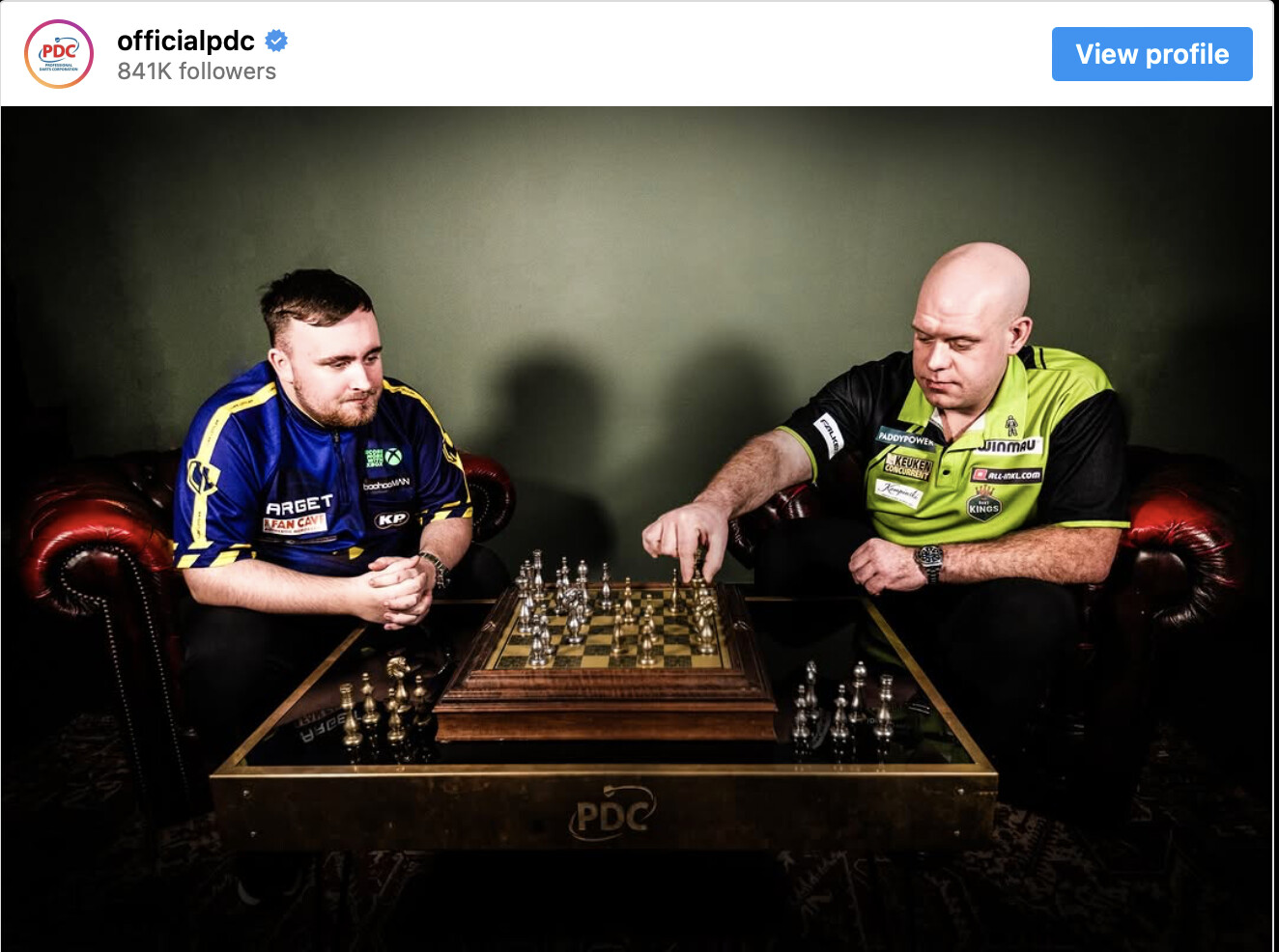
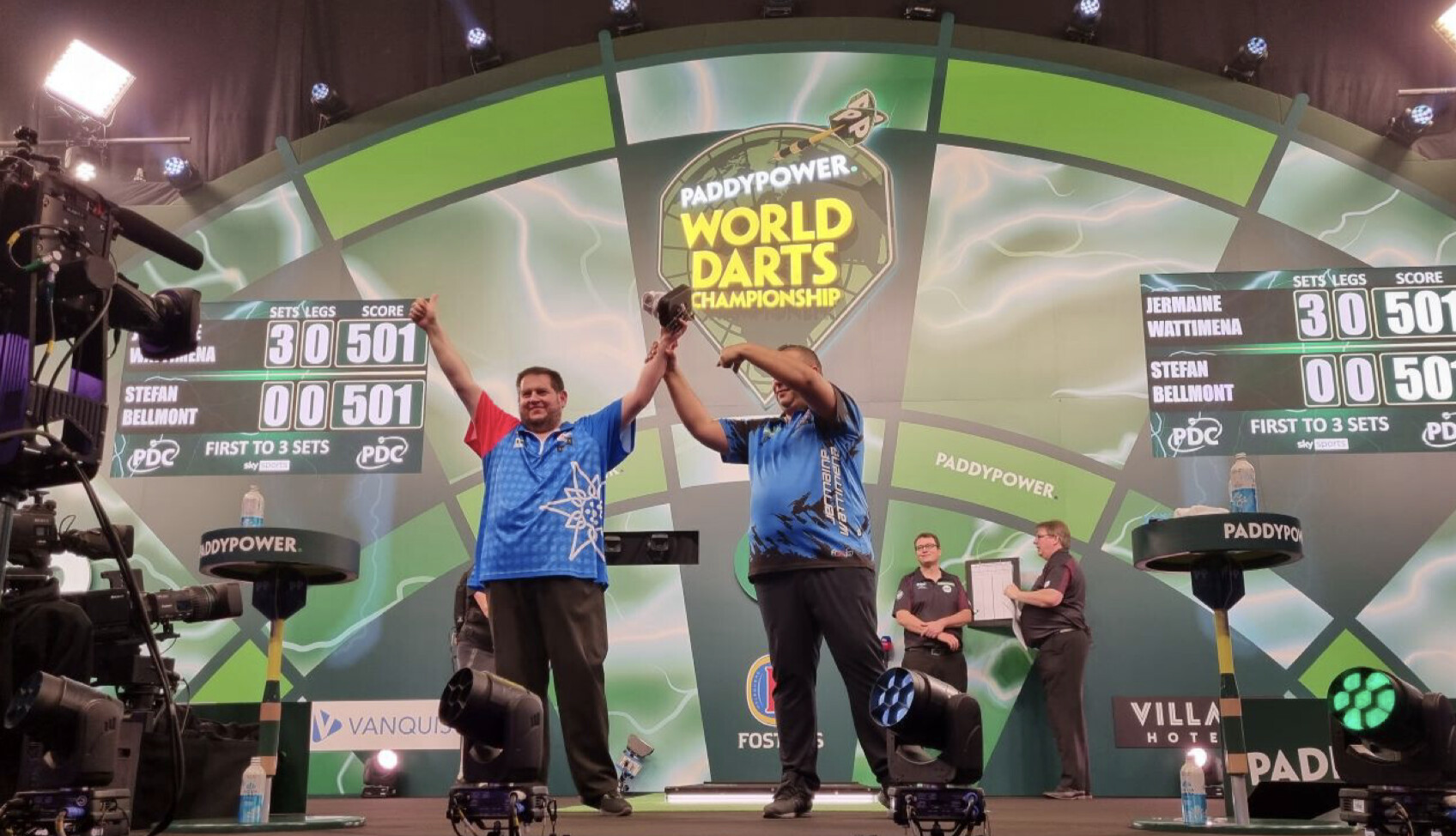
If you haven’t heard of British darts sensation Luke Littler, he’s been making waves both on and off the dartboard. At just 17, Littler already boasts more social media followers than Olympic 100m champion Noah Lyles, and has quickly become a fan favourite at this year’s championships. Why? Because the PDC knows how to market its stars.
The PDC players are frequently featured in viral TikTok trends or behind-the-scenes content that highlights their personalities, not just their talent or 180s. Littler recently celebrated a semi-final win with a subtle soccer-inspired celebration, which the PDC instantly shared via a collaboration with the Instagram account @433 (75 million followers), going viral in less than eight hours. This kind of creative, personality-driven marketing expands the reach of Littler (and darts), bringing in audiences from bigger sports that might not usually watch With so many interesting athletes from around the world, track and field could easily take a page from this playbook, highlighting athletes’ off-track personas—whether through social media, playful interviews or viral cross-sport content.
Walk-out music
I’ll admit one of the most electrifying aspects of darts is the personalized walk-out music for every player. England’s Nathan Aspinall hyped up the crowd with Mr. Brightside by The Killers, while Stephen Bunting led a spirited singalong to his walk-out anthem, Titanium by Sia. The energy was palpable, and the crowd was instantly engaged.Track and field already introduces its athletes before races—so why not take it a step further with walk-out music? A brief five-to-10-second clip as athletes approach the blocks could effortlessly amplify the atmosphere at Diamond League, Grand Slam Track or World Athletics Championships events.Maximize fan engagement
Let’s address the obvious: no, thousands of drunk fans probably wouldn’t mix well with track meets. But that doesn’t mean the sport should shy away from sponsorship activations. One of the best parts of darts is the endless “180” signs handed out to fans to cheer whenever a player scores triple 20. These signs, sponsored by companies, keep the crowd engaged, and you honestly feel like you’re a part of the action.
A Diamond League or Continental Tour track and field meet generally knows which big-name athletes are competing ahead of time and could distribute cheer swag or signs for personal bests, meet records or even world records. These are small touches that can easily build excitement and create a more interactive experience for athletes and fans.Of course, professional darts thrive on its bar-like atmosphere, but the magic isn’t just in the beer—it’s in the engagement that transforms a simple game into a wildly entertaining spectacle. Despite their differences, the goal for every niche sport is the same: to create an unforgettable experience for athletes and fans alike.
(01/04/2025) ⚡AMPGet marathon training underway with this easy distance workout
Spring marathon season is just around the corner, and the new year means it’s officially time to lay the groundwork for the big day. If you’re unsure how to dive into your training, this distance workout is the perfect starting point. It’s approachable, effective and designed to build your confidence as you ramp up for the 42.2 kilometers ahead.
The workout

Three-to-four sets of 1K, 3x 400m with 75 seconds of jogging between reps, and two minutes of rest between sets.
How to nail it
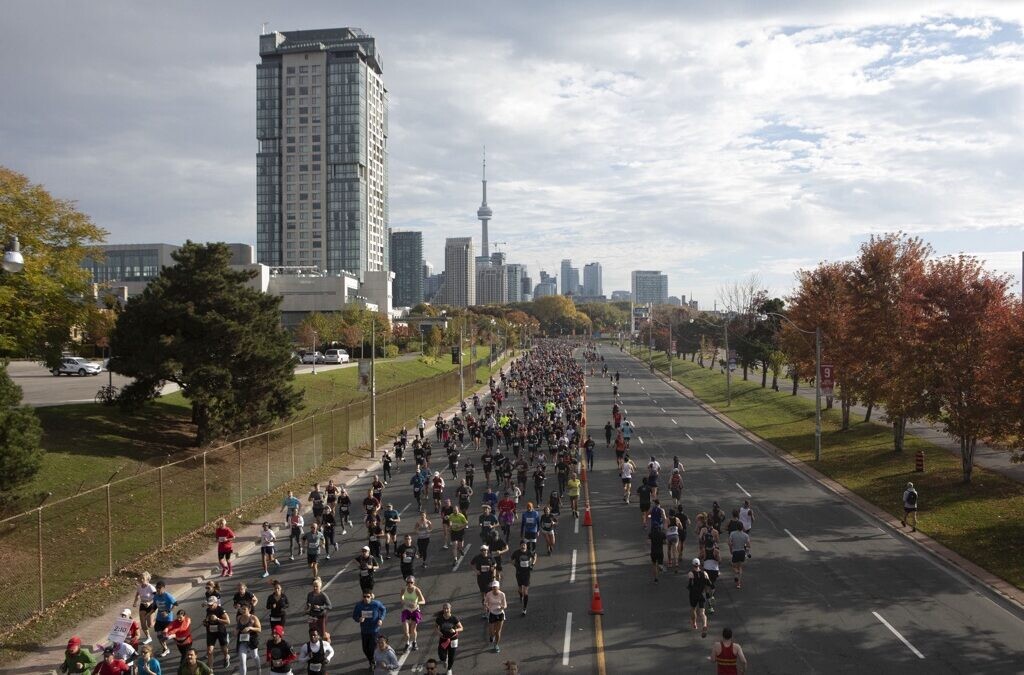
On the 1K reps, aim for your goal marathon pace, focusing on steady, controlled effort. For the 400m repeats, pick up the pace to around your 10K personal best. The key is maintaining control throughout—this workout is about consistency, not exhaustion.
By the third or fourth set, you should still feel strong and capable. If fatigue sets in too early, adjust the 400m pace to ensure you can finish the workout comfortably. This isn’t meant to crush you, but rather to set a solid foundation for the more challenging workouts ahead.
(If you’re more of an interval lover, you can also do a variation of this workout by doing three sets of 5 mins, 3x 90 seconds with the same amount of jog and set rest.)
Remember, the last thing you want is to overtrain during the early weeks of your marathon prep. Starting with a workout like this will help ease you into training while building the stamina and speed you’ll need for the months ahead.
(01/03/2025) ⚡AMPby Marley Dickinson
Ethiopia's Champions Set to Defend Titles at Mumbai Marathon 2025
Ethiopian marathon champions, Hayle Lemi Berhanu and Aberash Minsewo, return to Mumbai Marathon 2025 aiming to retain their titles. With robust competition, the 20th edition promises excitement, especially with Berhanu eyeing a historic hat-trick. The event, a qualifier for World Championships, offers substantial prizes for top finishers and record breakers.
Ethiopia's marathon champions, Hayle Lemi Berhanu and Aberash Minsewo, are set to defend their titles at the Tata Mumbai Marathon 2025, scheduled for January 19.
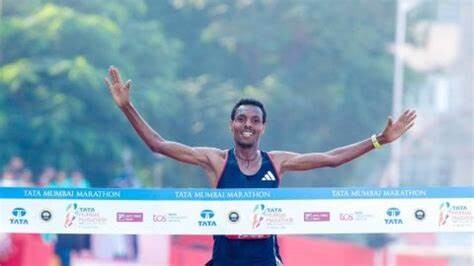
This prestigious World Athletics Gold Label Race sees Berhanu aiming for a historic hat-trick in the men's section following victories in 2023 and 2024.

In its 20-year history, the marathon has seen no male runner achieve a three-peat victory. Kenyan John Kelai had a chance in 2009 but finished third. Despite Ethiopian Mulu Seboka's triple wins, she skipped the 2007 race. This year's event offers podium prizes of up to USD 50,000 and record-breaking rewards of USD 15,000.
The competition is fierce with eleven men and six women boasting personal bests outstripping the course records. Top contenders include Kenyans Philemon Rono and Joyce Tele, and Bahrain's Shitaye Eshete. As the marathon also serves as a World Championships qualifier, the stakes are high for all participants.
(01/03/2025) ⚡AMPby Devdiscourse News Desk
Tata Mumbai Marathon
Distance running epitomizes the power of one’s dreams and the awareness of one’s abilities to realize those dreams. Unlike other competitive sports, it is an intensely personal experience. The Tata Mumbai Marathon is One of the World's Leading Marathons. The event boasts of fundraising platform which is managed by United Way Mumbai, the official philanthropy partner of the event. Over...
more...Try this pro runner’s rust-busting workout for 2025
What better way to hit the ground running in 2025 than with an elite-level workout? A YouTube video posted by Track: All-Access on Tuesday revealed professional Puma runner Taylor Roe‘s first workout of the track season–a hefty session filled with fartlek intervals and mile repeats. Give the workout a go if you’re looking for a speedy way to start off a new year of running.
The workout
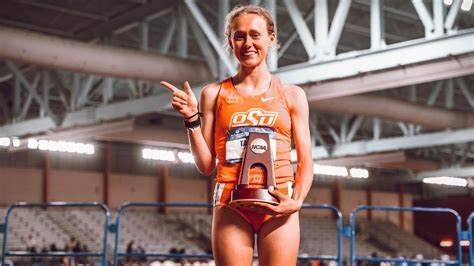
Set 1: 1,600m. Rest: 90 seconds
Set 2: 1,200m fartlek (4 x 200m, 100m jog)

Set 3: 1,600m. Rest: 2 mins
Set 4: 1,200m fartlek (4 x 200m, 100m jog)
Set 5: 1,600m
Total volume on track: 8,800m
Remember to take the session easier than a mid-season workout–be extra gentle while busting off the rust! Complete the mile repeats at around 5K pace, and take on the 200m portion of the fartlek at a solid effort–faster than the mile pace, but much slower than an all-out attempt. Since it’s the only rest portion of this set, take the 100m jog very easy.
“It’s too early to blow people up,” Puma Elite head coach Alistair Cragg said. “We want to keep everyone in it, working together.”
Roe completed the mile intervals in 5:24, 5:22 and 5:20. Her fartlek sets were around 4:08 (34 seconds for 200m, 28 seconds for easy 100m). “I’m clearly not doing well at pacing,” Roe said to the camera mid-workout. “But it’s not as bad as I thought it would be.”
Representing Oklahoma State University, the Washington state native won the NCAA 3,000m title in 2022 with a time of 8:58.95. She took silver in the 2024 NCAA 5,000m in March, finishing runner-up to Olympian Parker Valby. Roe holds 12 NCAA All-American honours from her five-year collegiate career and holds a 5,000m personal best of 15:15.01. The 24-year-old signed with the Puma Elite Running Team in July.
It’s not yet known when the athlete is set to open up her indoor season, but Cragg hinted that it will be won’t be until February. “You’ll blow yourself up,” he said to Roe. “We’re not going anywhere near blowing you up for the next–at least–four weeks.”
(01/03/2025) ⚡AMP
by Cameron Ormond
Florida man reaches 50-year run streak
Miami’s Robert “Raven” Kraft was streaking long before it was cool, and not in the way that gets you arrested. On Tuesday afternoon at 5th Street Lifeguard Station in Miami’s South Beach neighbourhood, Kraft completed his 18,263rd run, marking an impressive 50-year streak of daily running.
Kraft began his prolific streak on January 1, 1975, when he was 24, and over half a century later, he’s amassed 18,263 total runs and over 234,000 kilometres. That’s roughly equivalent to walking around the world more than five and a half times—quite a feat!

The 74-year-old was joined on Tuesday by hundreds of runners for his daily tradition of running eight miles (12.87 km) along the sands of South Beach. Kraft, who has also been a singer and songwriter for just as long, played a few songs after his anniversary run alongside the Dark Shadows band.
Beyond the streak, Kraft has built a community around his daily runs, called the “Raven Runners.” Unlike most, Kraft’s eight-mile route has never changed. He has reportedly run the exact same route in almost every single run. In an interview with Sports Illustrated, Kraft said he has a list of more than 3,700 runners from around the globe who have joined him for a run over the past 50 years. “The Raven List” reflects that he has been joined by runners from all 50 states, as well as runners from more than 60 countries.
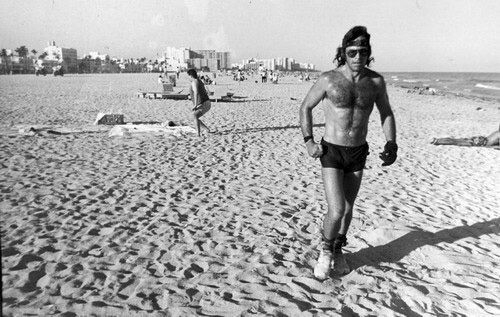
Kraft’s legacy will soon be etched into Miami Beach’s history. On Jan 1, Third Street and Ocean Drive will reportedly be renamed “Robert ‘Raven’ Kraft Way.”
According to the United States Running Streak Association, Kraft has the sixth-longest active run streak. Jon Sutherland of Washington, Utah, holds the world’s longest-running streak with over 55 years (20,000+ days). Toronto’s Rick Rayman has the longest active run streak in Canada, with a total of 16,824 days (46+ years).
(01/03/2025) ⚡AMPby Marley Dickinson
Florian Bremm successfully defends his title at the 42nd Int. Raiffeisen New Year's Eve Run in Peuerbach
A great running festival was offered today to the 5,000 enthusiastic spectators in Peuerbach. At the 42nd Int. Raiffeisen New Year's Eve Run – one of the five largest New Year's Eve runs in Europe – a new record number of participants was set with 1,103 registrations and 1,007 finishers.
The focus of the event was the women's and men's ace race, which was staffed by world-class athletes. And in both competitions, Germany was able to win the title this year: In the men's race, the reigning German 5,000 meter champion Florian BREMM defended his previous year's title in a thrilling final sprint against the Kenyan relay cross world champion Reynold CHERUIYOT, in the women's race, Elena BURKARD was the first European since 2013 to enter the winners' list. Austria took 4th place with Sebastian FREY from Vienna and Lotte SEILER from Styria. "We experienced two extremely exciting races today, the atmosphere was unique again," said OC boss Carsten Eich. The commitment of 120 volunteers from IGLA long life makes the implementation of this sensational event possible in the first place.
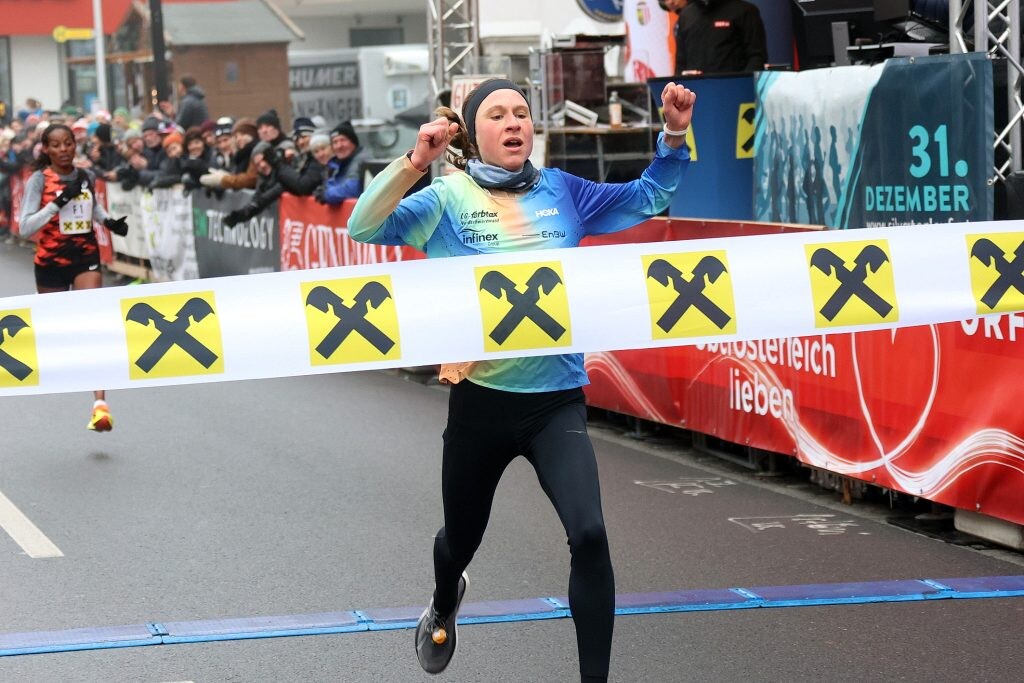
Thrilling men's race with German winner
The run of the aces in the men's race was hard to beat in terms of excitement. The race over 6,800 meters was marked by a duel between the 2024 Cross Country World Champion Reynold CHERUIYOT and last year's German winner Florian BREMM. In the 6th of a total of 8 laps, the Kenyan attacked and looked like the sure winner in the meantime. But step by step, the 24-year-old from LCA Höchstadt/Aisch fought his way back and together the duo ran towards the finish line. On the home straight, Bremm had the better end for herself, as in the previous year, and won after 18:45.28 minutes with a 1.34-second lead. Sebastian Frey from DSG Wien was in 3rd place in the meantime and only had to admit defeat to the German Niklas BUCHHOLZ in the final sprint after 19:13.64 minutes. "The atmosphere in Peuerbach was simply outstanding, the crowd pushed me hard," Frey was very satisfied at the finish.

Elena Burkard wins in the women's aces race
In the women's race over 6 laps or 5,100 meters, the Ethiopian vice world champion over 1,500 meters Axumawit EMBAYE was the clear favorite. And from the beginning she took the lead of the 14-strong field, at the halfway point of the race the Ethiopian already had a seven-second lead over the two German athletes Elena BURKARD and Domenika MAYER. But the longer the race lasted, the closer Burkard got to the favorite and in the last lap the two opponents were on a par. In the last corner, the German attacked irresistibly and celebrated a much-acclaimed victory in Peuerbach after 15:57.41 minutes. This was the first victory by a European woman since 2013. A great performance was offered by Lotte Seiler from Kapfenberg, who secured 4th place in the final sprint against the strong Hungarian Lili Anna Vindics-Toth after 16:40.92.
Record field of participants at the start in nine competitions
With 1,103 registrations and 1,007 finishers, a new record number of participants was set at this year's New Year's Eve Run in Peuerbach, surpassing the record set in 2023 by 25 starters. "That was a wonderful running event in Peuerbach today, the atmosphere was simply great," says Marion Gierlinger from the organizing association IGLA long life. The Int. Raiffeisen New Year's Eve Run Peuerbach with its world-class athletes also offers the largest children's New Year's Eve run in Austria: Almost 500 boys and girls took part in the junior competitions alone, which opened the running day with starts every five minutes. Cheered on by parents and spectators, the stars of tomorrow ran from the sprint over 100 meters to the LONG LIFE mineral water mile over 1,700 meters. The Gebrüder Weiss Volkslauf over 6,800 meters was again a special experience this year, 420 starters in this and the other competitions made Peuerbach the capital of running.
(01/02/2025) ⚡AMPSilvesterlauf Peuerbach
The International Raiffeisen New Year's Eve Run in Peuerbach, Austria, is a celebrated annual event that has been delighting participants and spectators for over four decades. Held every December 31st, this race transforms the town into a hub of athletic excellence and festive entertainment. The event features a variety of races catering to different age groups and skill levels,...
more...Bekele runs course record, Battocletti retains title in Bolzano
Ethiopia’s Telahun Haile Bekele set a course record to win the men’s race, while Italy’s Nadia Battocletti retained her women’s race crown at the BOclassic Alto Adige, a World Athletics Label road race, on Tuesday (31).
Bekele ran 27:59 to become the first athlete to break 28 minutes for this 10km race and home favourite Battocletti clocked 15:31 to repeat her 5km victory from the previous year.

After the start at Waltherplatz, a group of five athletes remained together in the men’s race, with Bekele joined by Italy’s Yeman Crippa, Kenya’s Charles Rotich, South Africa’s Maxime Chaumeton and Morocco’s Soufiyan Bouqantar.
Bouqantar had to let his rivals go on the fourth lap and Chaumeton dropped out on the fifth loop. That left the trio of Bekele, Crippa and Rotich in contention. Bekele then attacked on the penultimate lap and built a lead, which he maintained on the last loop and final sprint. In the end, the 25-year-old Ethiopian set a record time of 27:59, one second faster than the mark by Sabastian Sawe in 2023. Bekele had already finished on the podium once before at the BOclassic Alto Adige as he came second in 2019.

Crippa was runner-up for the third time in a row, finishing just two seconds back. The 19-year-old Rotich completed the podium in 28:08, while Chaumeton finished fourth and two-time BOclassic winner Oscar Chelimo from Uganda finished fifth.
All eyes were on Battocletti in the women’s race. She led from start to finish, although the 20-year-old Aleshign Baweke of Ethiopia could not be shaken off and was only finally beaten on the home straight after an irresistible attack by Battocletti.
Battocletti's winning time was 15:31, four seconds faster than Baweke.
Third place went to Turkiye’s Yasemin Can who stayed on the heels of the leading duo for a long time, but had to let go on the final loop. Federica Del Buono finished in fourth place after a brilliant final lap, while Micol Majori finished in fifth place.
Leading results
Women
1 Nadia Battocletti (ITA) 15:31
2 Aleshign Baweke (ETH) 15:35
3 Yasemin Can (TUR) 16:05
4 Federica Del Buono (ITA) 16:07
5 Micol Majori (ITA) 16:11
Men
1 Telahun Haile Bekele (ETH) 27:59
2 Yeman Crippa (ITA) 28:01
3 Charles Rotich (KEN) 28:08
4 Maxime Chaumeton (RSA) 28:27
5 Oscar Chelimo (UGA) 28:43
(01/02/2025) ⚡AMPby World Athletics
BOclassic Alto Adige 5k
hallenge yourself against the world’s best! The BOclassic Raiffeisen New Year’s Eve Run is a prestigious year-end road race held annually, attracting elite international athletes alongside amateur runners. Known for its competitive field and festive atmosphere, the event provides a rare opportunity to test your speed on the same course as some of the world’s top distance runners. Whether you...
more...Record-breaker's diet: Beatrice Chebet reveals what she eats to fuel her to world records and gold medals
Double Olympics champion Beatrice Chebet is basking in the glory of yet another world record following her heroics in Barcelona but what does she eat to fuel her to success?
Beatrice Chebet is among the athletes who had a fantastic 2024 season when she won two Olympics titles and broke world records.
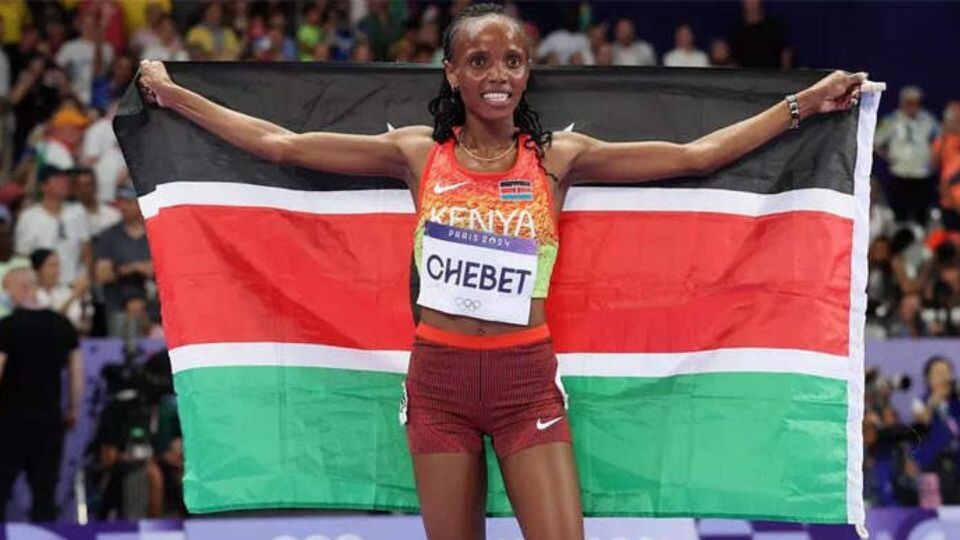
Chebet signed off the year in style as she smashed the 5km world record by running 13:54, to shave 19 seconds off the previous mark, at the Cursa dels Nassos in Barcelona on New Year’s eve.
It was a great way to end a year that was filled with so much success for her, having started by defending her World Cross Country title, before smashing the 10,000m world record at the Prefontaine Classic in May.

Chebet would then go on to win two Olympics gold medals in Paris, claiming the 5,000m and 10,000m titles before adding the Diamond League crown.
Having such a remarkable season needs good preparations and for Chebet what she eats matters a lot because it is what fuels her to success.
The 24-year-old keeps it simple when it comes to diet and sticks to Kenyan delicacies which have served her quite well going by her achievements on the track.
“I like ugali because it has energy and after training, I have to eat it,” Chebet told NTV just days before her record-breaking feat in Barcelona.
“I also love white meat and chapati is also my favourite. Milk is also good, mursik [fermented milk that is a staple for the Kalenjin community] is a good accompaniment for ugali.
“Generally, I eat everything as long as my body does not react to it because at the end of it, I do a lot of training.”
Like most of her Kenyan peers, Chebet sticks to what she knows and grew up eating, resisting the allure of trying out new things.
As she starts 2025, more glory is expected from her with the success of 2024 increasing pressure to do the same, or even better, this year especially at the World Championships in Tokyo, Japan in September.
(01/02/2025) ⚡AMPby Joel Omotto
Aregawi and Kiplimo take top spots, Garcia surprises Chepngetich in Madrid
Ethiopia’s Olympic 10,000m silver medalist Berihu Aregawi and Spain’s European 5000m bronze medalist Marta Garcia claimed respective victories at the San Silvestre Vallecana, a World Athletics Gold Label road race, in Madrid on Tuesday (31) evening.
While Aregawi and Uganda’s two-time world cross country champion Jacob Kiplimo crossed the finish line together without fighting for the win, Garcia became a surprise victor as she clearly defeated Kenya’s world marathon record-holder Chepngetich.
The men's race had been billed as a mouth-watering showdown between Aregawi and Kiplimo, both on the hunt for a second victory following their victories in 2018 (Kiplimo) and 2023 (Aregawi).

The race started with opening kilometers in the 2:40/2:42 region, taking advantage of the early downhill section. By then the lead group featured six athletes: Kiplimo, Aregawi, his fellow Ethiopian Nibret Kinde, France’s Felix Bour and the Spanish duo of Adel Mechaal and last year’s runner-up Aaron Las Heras.
It was shortly before the third kilometer when the Tokyo Olympic 10,000m bronze medalist Kiplimo and Aregawi broke away from the rest of the leading pack with incredible ease to go through that point in 8:01. Kiplimo took on most of the pacing duties but Aregawi remained very close to him throughout. That duo reached halfway in a brisk 13:07 following a frantic 5:06 2km split which suggested the course record of 26:41 was in jeopardy. Way back, Kinde travelled alone in third, 13 seconds in arrears, with Mechaal and Bour another three seconds adrift.

Over the second half of the race the leading pair maintained their blistering rhythm, covering the following kilometers at 2:36 pace to clock 20:58 by the eighth kilometer checkpoint, always with Kiplimo at the helm and Aregawi just behind.
When it became clear that a course record was on the cards, the large crowd assembled got ready for a thrilling sprint finish between the two distance stars. But once inside the Rayo Vallecano stadium, they looked at each other and decided not to battle for the win, instead crossing the finish line virtually even, the victory eventually going to Aregawi in 26:32, the same time as recorded by Kiplimo.
Their performances are not valid for record or ranking purposes since they had the benefit of a downhill circuit – 705m of altitude at the start, a lowest point of 610m at the eighth kilometer and an uphill final two kilometers to conclude at 650m.
The fight for the final podium place proved thrilling as the 34-year-old Mechaal overtook Kinde and Bour inside the closing 400m to take third in 27:39 to Bour’s 27:42 and Kinde’s 27:44.
Garcia prevails over Chepngetich
Held jointly with the men’s race, the women’s contest witnessed an early lead by the overwhelming pre-race favorite Chepngetich. The Kenyan ace had declared on the eve of the event that her target was to erase her compatriot Brigid Kosgei’s course record of 29:54 set in 2018. Yet the 30-year-old never traveled at that kind of rhythm, covering the early stages in around three minute kilometer pace.
The 2019 world marathon champion led by the third kilometer, reached in 9:09, but the in-form Spaniard Garcia – fresh from another win two days before in her native Leon – always seemed a serious threat as she only ran three seconds behind. Chepngetich went through the halfway mark in 15:06 to Garcia’s 15:08, while Paris Olympic 1500m finalist Agueda Marques and Carolina Robles traveled in third and fourth, 12 seconds behind their fellow Spaniard.
It was shortly after reaching the sixth kilometer when Garcia, on the eve of her 27th birthday, managed to catch Chepngetich. The pair shared the lead for one kilometer before the Kenyan could not follow Garcia’s pace. Despite slightly easing her pace over the flat kilometers before facing the uphill section, Garcia managed to build a sizeable advantage over the Kenyan to cover the closing stages being loudly cheered by the home crowd, about to enjoy the first Spanish win since 2008.
At the tape, Garcia was timed at 31:19 to Chepngetich’s 31:32, the world marathon record-holder holding off the late challenge provided by Marques, who was third thanks to a 31:34 performance.
“It’s my first time competing in this circuit and I’m impressed,” said Garcia, who recently completed a four-week training stint in South Africa.
“I didn’t feel tiredness over the closing kilometers because the spectators cheered a lot, it’s amazing. I’ll now focus on the short track season over 3000m.”
Leading results
Women
1 Marta Garcia (ESP) 31:19
2 Ruth Chepngetich (KEN) 31:32
3 Agueda Marques (ESP) 31:34
4 Carolina Robles (ESP) 31:58
5 Carla Gallardo (ESP) 32:10
6 Adawork Aberta (ETH) 32:16
7 Laura Priego (ESP) 32:20
8 Fatima Ouhaddou (ESP) 32:22
9 Risper Gesabwa (MEX) 32:35
10 Tugba Yenigun (TUR) 32:42
Men
1 Berihu Aregawi (ETH) 26:32
2 Jacob Kiplimo (UGA) 26:32
3 Adel Mechaal (ESP) 27:39
4 Felix Bour (FRA) 27:42
5 Nibret Kinde (ETH) 27:44
6 Jesus Ramos (ESP) 28:07
7 Aaron Las Heras (ESP) 28:12
8 Andreu Blanes (ESP) 28:50
9 David Cantero (ESP) 28:56
10 Adrian Ben (ESP) 28:57
(01/02/2025) ⚡AMPby World Athletics
Saint Sylvester Road Race
The Saint Silvester Road Race (Portuguese: Corrida Internacional de São Silvestre) is a long-distance running event, the oldest and most prestigious street race in Brazil. Regarded as the main international event in Latin American athletics, the Brazilian competition is held yearly in the city of São Paulo on December 31. São Paulo's race was originally known as a "marathon", although...
more...The Distance Running Scene in 2024: A Year of Remarkable Achievements
The global distance running scene in 2024 was marked by incredible performances, new records, and innovative approaches to training and competition. From marathons in bustling city streets to ultramarathons through rugged terrains, the year showcased the resilience, determination, and evolution of athletes from all corners of the globe.
The World Marathon Majors—Tokyo, Boston, London, Berlin, Chicago, and New York—continued to be the centerpiece of elite distance running, each event contributing to a year of unprecedented performances and milestones.
Tokyo Marathon witnessed a remarkable performance by Kenya's Ruth Chepngetich, who set a new women's marathon world record with a time of 2:11:24. This achievement sparked discussions about the rapid advancements in women's long-distance running and the influence of technology in the sport.
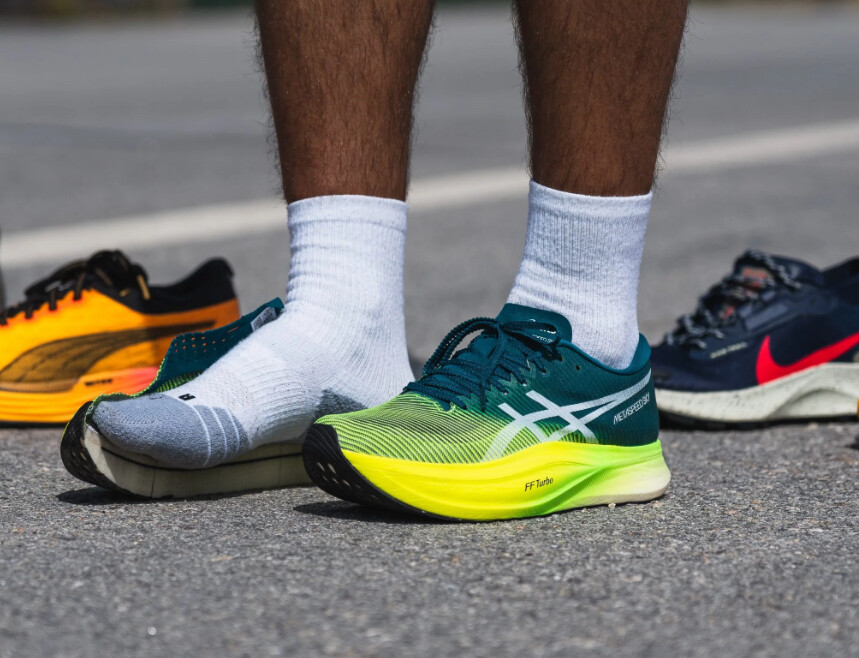
In the Boston Marathon, Ethiopia's Amane Beriso delivered a dominant performance, winning in 2:18:01. On the men's side, Kenya's Evans Chebet defended his title, highlighting Boston's reputation for tactical racing over sheer speed.
London Marathon saw Ethiopia's Tamirat Tola take the men's crown, besting the field with a strong tactical race. Eliud Kipchoge, despite high expectations, did not claim victory, signaling the growing competitiveness at the top of men’s marathoning. On the women's side, Kenya's Peres Jepchirchir triumphed, adding another major victory to her impressive resume.
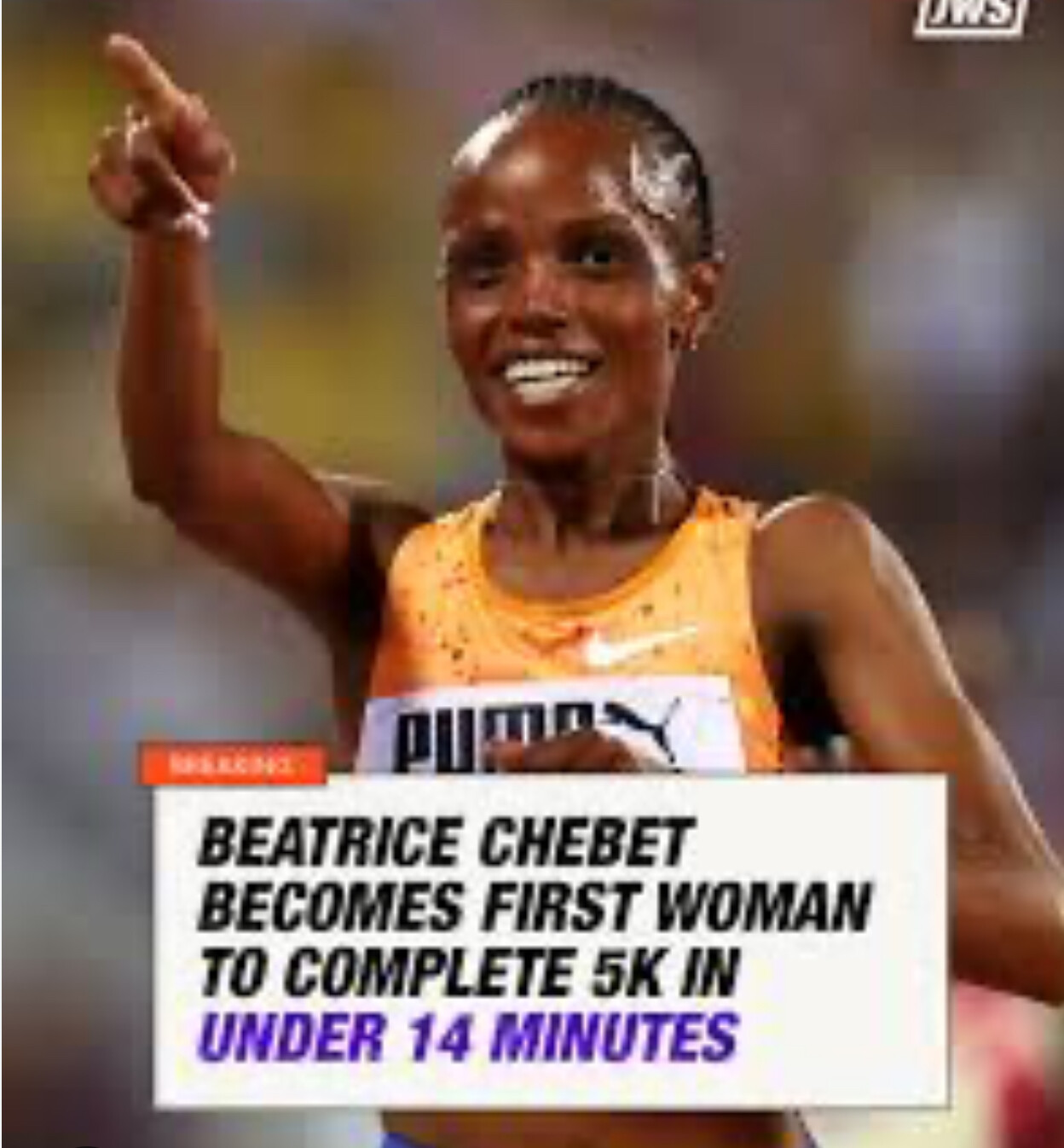
The Berlin Marathon in 2024 showcased yet another extraordinary performance on its fast course, though it was Kelvin Kiptum’s world record from the 2023 Chicago Marathon (2:00:35) that remained untouched. In 2024, Berlin hosted strong fields but no records, leaving Kiptum’s achievement as the defining benchmark for men’s marathoning.
The Chicago Marathon was the highlight of the year, where Kenya's Ruth Chepngetich made history by becoming the first woman to run a marathon in under 2:10. She shattered the previous world record by nearly two minutes, finishing in 2:09:56. This groundbreaking achievement redefined the possibilities in women's distance running and underscored the remarkable progress in 2024.
The New York City Marathon showcased the depth of talent in American distance running, with emerging athletes achieving podium finishes and signaling a resurgence on the global stage.
Each marathon in 2024 was marked by extraordinary performances, with athletes pushing the boundaries of human endurance and setting new benchmarks in the sport.
Olympic Preparations: Paris 2024 Looms Large
With the 2024 Summer Olympics in Paris just around the corner, many athletes used the year to fine-tune their preparations. Qualifying events across the globe witnessed fierce competition as runners vied for spots on their national teams.
Countries like Kenya, Ethiopia, Japan, and the United States showcased their depth, with surprising performances by athletes who emerged as dark horses. Japan’s marathon team, bolstered by its rigorous national selection process, entered the Olympic year as a force to be reckoned with, particularly in the men's race.
Ultramarathons: The Rise of the 100-Mile Phenomenon
The ultramarathon scene continued to grow in popularity, with races like the Western States 100, UTMB (Ultra-Trail du Mont-Blanc), and Leadville 100 drawing record participation and attention.
Courtney Dauwalter, already a legend in the sport, extended her dominance with wins at both UTMB and the Western States 100, solidifying her reputation as the GOAT (Greatest of All Time) in ultrarunning.
On the men’s side, Spain’s Kilian Jornet returned to form after an injury-plagued 2023, capturing his fifth UTMB title. His performance was a masterclass in pacing and strategy, showcasing why he remains a fan favorite.
Notably, ultramarathons saw increased participation from younger runners and athletes transitioning from shorter distances. This shift signaled a growing interest in endurance challenges beyond the marathon.
Track and Road Records: Pushing the Limits
The year 2024 witnessed groundbreaking performances on both track and road, with athletes shattering previous records and setting new benchmarks in distance running.
Beatrice Chebet's Dominance: Kenya's Beatrice Chebet had an exceptional year, marked by multiple world records and championship titles.
10,000m World Record: In May, at the Prefontaine Classic, Chebet broke the women's 10,000m world record, becoming the first woman to run the distance in under 29 minutes, finishing in 28:54.14.
Olympic Triumphs: At the Paris Olympics, Chebet secured gold in both the 5,000m and 10,000m events, showcasing her versatility and dominance across distances.
5km World Record: Capping off her stellar year, on December 31, 2024, Chebet set a new women's 5km world record at the Cursa dels Nassos race in Barcelona, finishing in 13:54. This achievement made her the first woman to complete the 5km distance in under 14 minutes, breaking her previous record by 19 seconds.
Faith Kipyegon's Excellence: Kenya's Faith Kipyegon continued her dominance in middle-distance running by breaking the world records in the 1500m and mile events, further cementing her legacy as one of the greatest athletes in history.
Joshua Cheptegei's 10,000m World Record: Uganda's Joshua Cheptegei reclaimed the men's 10,000m world record with a blistering time of 26:09.32, a testament to his relentless pursuit of excellence.
Half Marathon Records: The half marathon saw an explosion of fast times, with Ethiopia’s Yomif Kejelchabreaking the men's world record, running 57:29 in Valencia. The women's record also fell, with Kenya’s Letesenbet Gidey clocking 1:02:35 in Copenhagen.
These achievements highlight the relentless pursuit of excellence by distance runners worldwide, continually pushing the boundaries of human performance.
The Role of Technology and Science
The impact of technology and sports science on distance running cannot be overstated in 2024. Advances in carbon-plated shoes, fueling strategies, and recovery protocols have continued to push the boundaries of human performance.
The debate over the fairness of super shoes reached new heights, with critics arguing that they provide an unfair advantage. However, proponents emphasized that such innovations are part of the natural evolution of sports equipment.
Data analytics and personalized training plans became the norm for elite runners. Wearable technology, including advanced GPS watches and heart rate monitors, allowed athletes and coaches to fine-tune training like never before.
Grassroots Running and Mass Participation
While elite performances stole the headlines, 2024 was also a banner year for grassroots running and mass participation events. After years of pandemic disruptions, global races saw record numbers of recreational runners.
Events like the Great North Run in the UK and the Marine Corps Marathon in the U.S. celebrated inclusivity, with participants from diverse backgrounds and abilities.
The popularity of running as a mental health outlet and community-building activity grew. Initiatives like parkrunand local running clubs played a pivotal role in introducing more people to the sport.
Diversity and Representation
Diversity and representation became central themes in distance running in 2024. Efforts to make the sport more inclusive saw tangible results:
More women and runners from underrepresented communities participated in major events. Notably, the Abbott World Marathon Majors launched a program to support female marathoners from emerging nations.
Trail and ultrarunning communities embraced initiatives to make races more accessible to runners from diverse cultural and economic backgrounds.
Challenges and Controversies
Despite the many successes, 2024 was not without its challenges:
Doping Scandals: A few high-profile doping cases marred the sport, reigniting calls for stricter testing protocols and greater transparency.
Climate Change: Extreme weather conditions impacted several races, including the Boston Marathon, which experienced unusually warm temperatures. Organizers are increasingly focusing on sustainability and adapting to climate-related challenges.
Looking Ahead to 2025
As the year closes, the focus shifts to 2025, which promises to build on the momentum of 2024. Key storylines include:
The quest for a sub-2-hour marathon in a record-eligible race, with Kelvin Kiptum and Eliud Kipchoge at the forefront.
The continued growth of ultrarunning, with new records likely to fall as more athletes take up the challenge.
The evolution of distance running as a global sport, with greater inclusivity and innovation shaping its future.
Conclusion
The distance running scene in 2024 was a celebration of human potential, resilience, and the unyielding pursuit of greatness. From record-breaking marathons to grueling ultramarathons, the year reminded us of the universal appeal of running. As the sport evolves, it continues to inspire millions worldwide, proving that the spirit of running transcends borders, ages, and abilities.
(01/01/2025) ⚡AMPby Boris
Beatrice Chebet Shatters 5K Road World Record in Barcelona
In a historic display of endurance and speed, Kenyan star Beatrice Chebet broke the women’s 5K road world record today at the Cursa dels Nassos in Barcelona, becoming the first woman in history to complete the distance in under 14 minutes. Chebet blazed across the finish line in a remarkable 13 minutes and 54 seconds, smashing her previous record of 14:13, which she set at the same event last year. This is 4:28 per mile.
A Year of Dominance
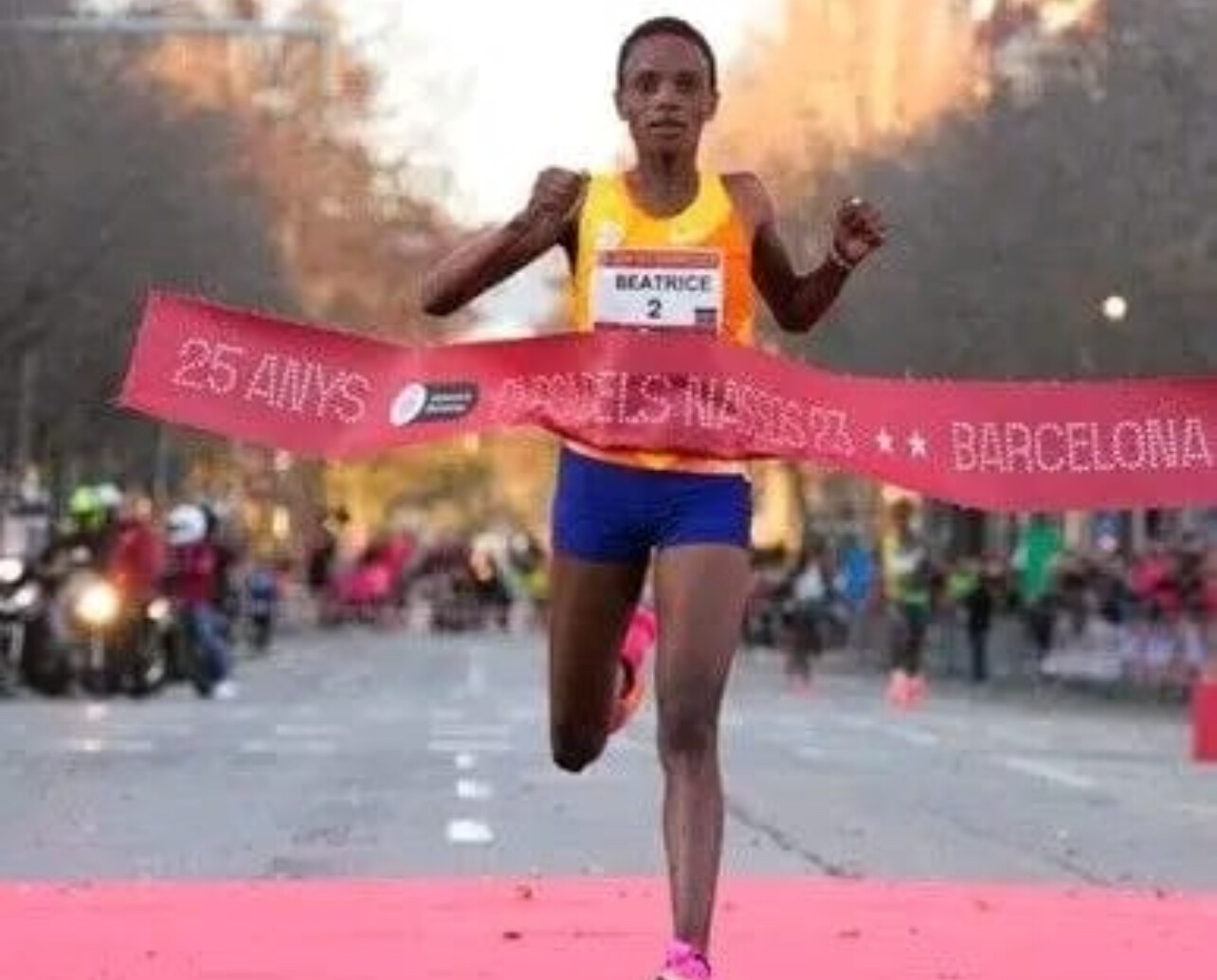
Chebet’s new world record caps off an extraordinary year for the 23-year-old, who dominated the long-distance running scene in 2024. Earlier this year, she achieved a rare double gold at the Paris Olympics, winning the 5,000m and 10,000m events. Her ability to excel on both the track and road has made her one of the most versatile and celebrated athletes of her generation.
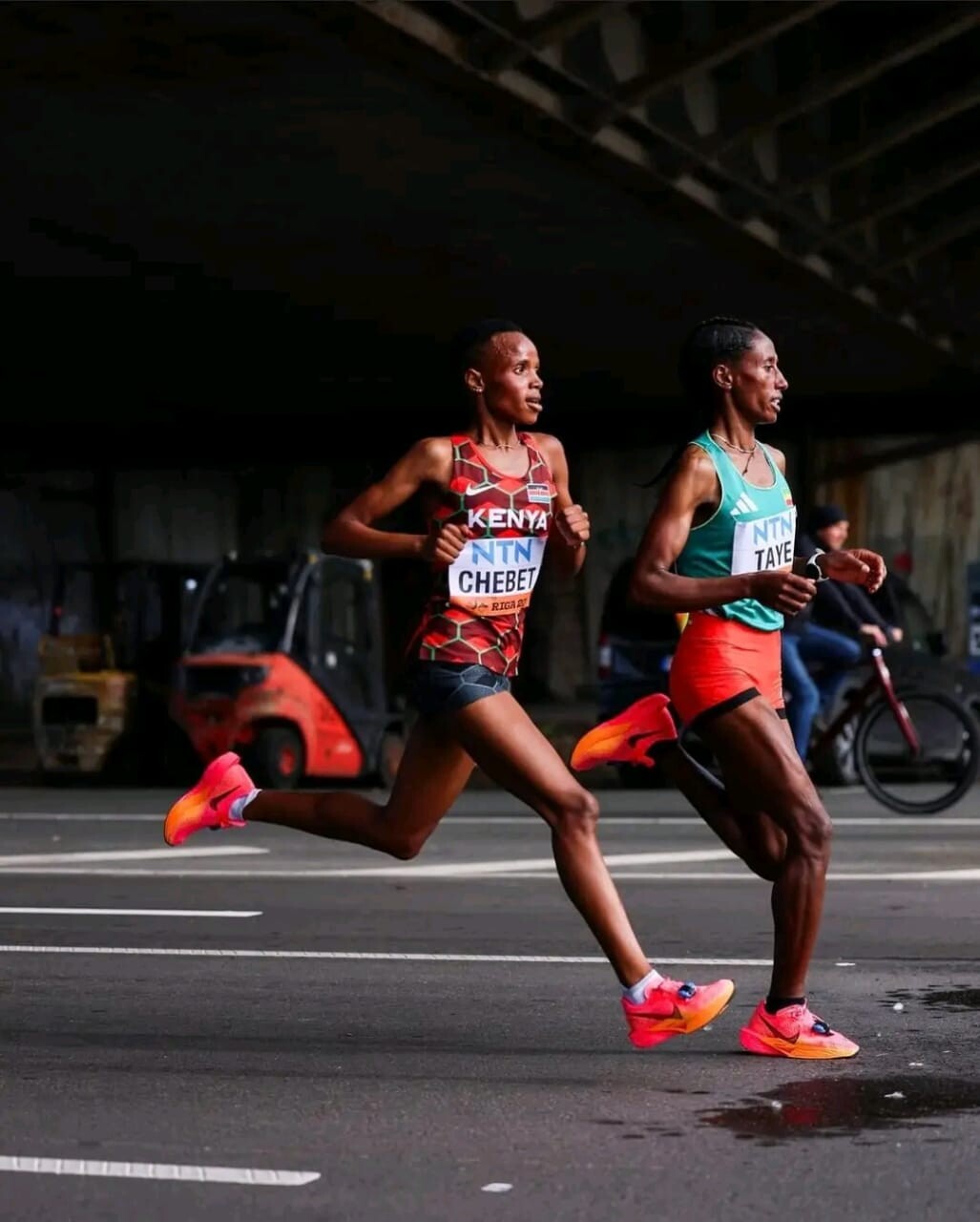
In today’s race, Chebet showcased her tactical brilliance and unparalleled speed, pulling away from the competition early and maintaining a relentless pace throughout. Her achievement further cements her legacy as one of the sport’s all-time greats.
Young Talent on the Rise
Behind Chebet, Ethiopia’s Medina Eisa Kumanda delivered a stellar performance, finishing second in 14:23, a time that set a new world under-20 record. Uganda’s Belinda Chemutai rounded out the podium in 14:36, underscoring the depth of talent in women’s long-distance running.
Chebet’s record-breaking run comes as a fitting end to a year that saw her named World Athletics’ Female Athlete of the Year, a recognition of her consistent excellence across multiple platforms.
A Star with a Bright Future
Born in Kericho County, Kenya, Beatrice Chebet has steadily risen through the ranks since her early days as a promising junior athlete. She first gained international attention in 2018 when she won the World U20 Cross Country Championships. From there, she transitioned seamlessly to senior competition, with her Olympic triumphs and multiple Diamond League victories solidifying her place at the pinnacle of the sport.
Off the track, Chebet is known for her humility and dedication to her training. She often credits her success to the support of her family. She trains in Londiani, Kericho County. She is nicknamed the "smiling assassin".
A Record to Inspire
Chebet’s achievement in Barcelona is not just a personal milestone; it’s an inspiration to young athletes worldwide. By breaking the 14-minute barrier, she has redefined what is possible in women’s distance running, paving the way for future generations to dream bigger and aim higher.
As the athletics world celebrates this historic moment, all eyes will now turn to 2025, where Chebet will undoubtedly aim to build on her incredible legacy.
(12/31/2024) ⚡AMPCursa dels Nassos
Certain local traditions may strike you as funny, bizarre, or downright disturbing. You may know that the Catalans ring in the new year by eating one grape with each chime of the clock at midnight, but did you know about the man with many noses ('home dels nassos')? Folklore has it that there's a man who has as many noses...
more...'I'm hitting numbers I've never hit before'- British sprint star happy with progress after injury ruined his 2024 season
The world 100m bronze medalist has fired warnings to Noah Lyles, Letsile Tebogo and Kishane Thompson.
Great Britain’s fastest man Zharnel Hughes has resumed training and things are looking up as far as getting into the right shape is concerned.
Zharnel Hughes suffered an injury in 2024, a setback that denied him an opportunity to compete more often and he was not ready by the time the Olympic Games were approaching.
The Olympic 100m bronze medalist was eliminated from the semifinal, being forced to continue his hunt for an individual medal from the Olympic Games.
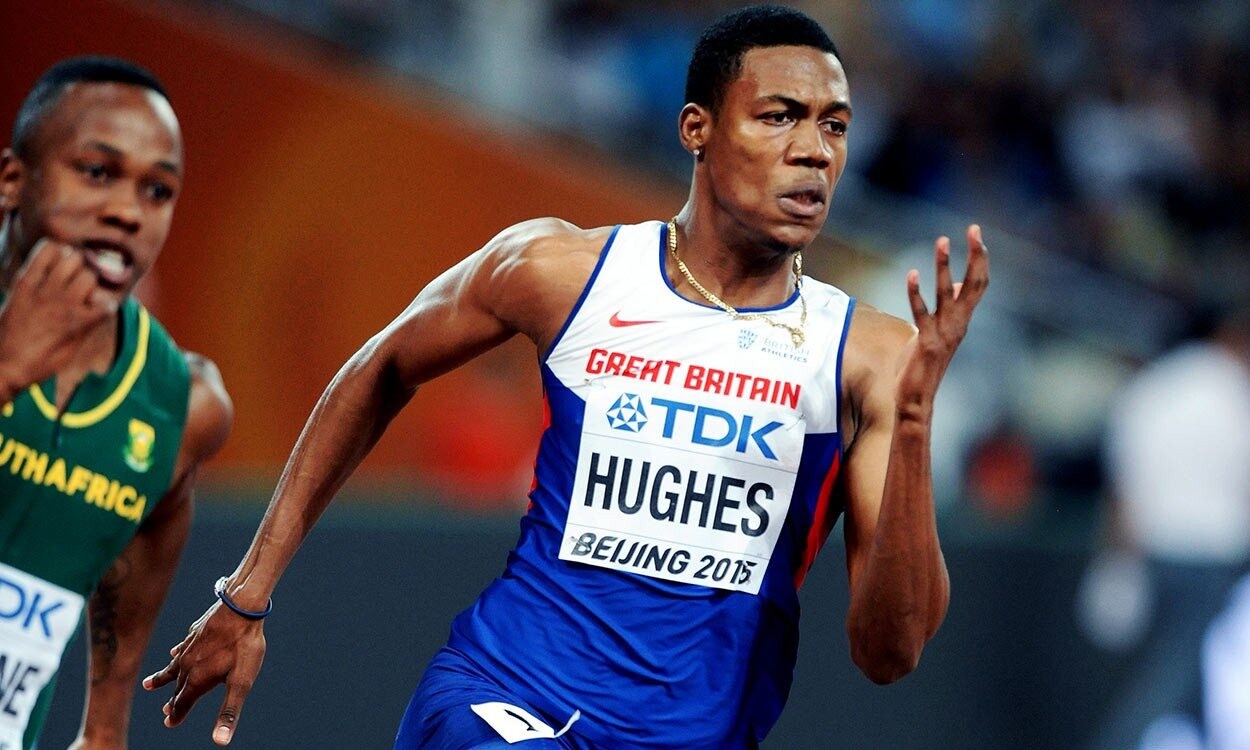
He was fortunate enough not leave the French capital without a medal as he claimed an Olympic bronze medal from the men’s 4x100m relay. However, Hughes was forced to withdraw from the 200m to ensure he does not cause more impact on his injury.
He did not compete after the Olympics and jetted back to Jamaica for treatment. Hughes then started light training immediately after getting a bit better and so far, he admitted that he is hitting new heights.

In an exclusive interview with Athletics Weekly, Hughes predicted that his 2025 season will be much different from 2024, noting that he is much confident now in his abilities and will be looking to stop the likes of Noah Lyles, Letsile Tebogo and Kishane Thompson from continuing their winning ways.
“From there, we have taken it day by day. I have been doing more strength work and have made a change to my strength and conditioning in the gym, and by doing that, I can feel a difference. I am hitting more personal bests in the gym already, I am hitting numbers I have never hit before,” Zharnel Hughes said.
“I am looking forward to seeing how I can execute throughout the season. I am feeling pretty confident with how my body is feeling and I just need to ensure that I am resting and recovering properly. You can do all the training but if you are not recovering properly then it can always hit the fan.”
His major focus will be on getting into shape for the 2025 World Championships in Tokyo, Japan and he hopes to attain that by competing at Michael Johnson’s Grand Slam Track League. Hughes also has eyes on the 100m and 200m national records.
(12/30/2024) ⚡AMPby Abigael Wafula
Sifan Hassan: Why Olympics marathon champion has been busy at work during festive season
Olympics marathon champion Sifan Hassan has given reasons why she has been busy at work during the festive season when most of her peers are on a break.
It may be the festive season but Olympics marathon champion Sifan Hassan has not taken a break as she has maintained her training with eyes on further success in 2025.
Hassan was one of the athletes who had a remarkable 2024 season that yielded three medals at the Paris 2024 Olympics which saw her crowned World Athletics Female Athlete of the Year early in December.

The Dutchwoman participated in 5,000m, 10,000m and marathon, winning bronze in the first two, before she put the icing on the cake with gold in the latter, and it was no surprise when she was named World Athlete of the Year Out of Stadia as well as the overall women’s prize.
It has fueled her desire for more going by her latest sentiments and actions as she has been busy in training during the festive season when most of her peers are on a break.
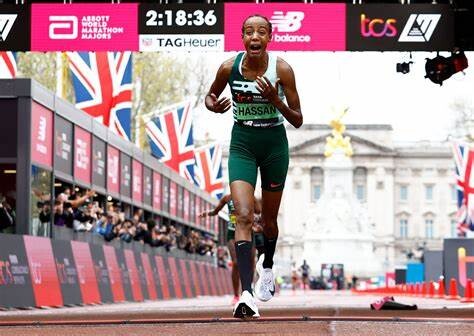
“I love running at this time of year. It always offers an opportunity to reflect on what we’ve achieved, seek inspiration, and set intentions for the year ahead. What are your goals for 2025?” she posed on X.
Hassan must be looking to win a world title in 2025 when the World Championships will take place in Tokyo, Japan and made a vow to try out four races after her decision to go for a treble paid off in Paris.
It will also not be a surprise if she signs up for one of the major city marathons, having claimed London and Chicago titles in 2023 which set the stage for her Olympics heroics in 2024.
(12/30/2024) ⚡AMPby Joel Omotto
'I was thinking about him' - How Eliud Kipchoge fueled Tamirat Tola to Olympic title following late Ethiopian marathon team inclusion
Tamirat Tola on how constantly thinking about Eliud Kipchoge's threat helped him clinch the 2024 Olympic marathon title in Paris following his late inclusion into the Ethiopian team for the games.
Olympic marathon champion Tamirat Tola admits marathoner Eliud Kipchoge was his biggest headache heading into the Paris Olympics and was thinking about him following his late inclusion to the Ethiopian team.
The 2022 world marathon champion had just two weeks to prepare for the Olympics after his late inclusion, thanks to the injury sustained by compatriot Sisay Lema.
Tola, 33, said while he considered other marathoners as worthy opponents, it was Kipchoge he feared the most if his past achievements were anything to go by.
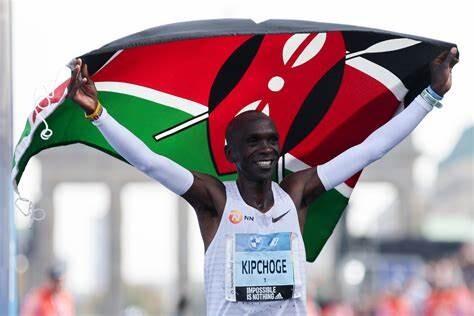
"When I got to Paris, I was thinking about how I could challenge (Eliud) Kipchoge and other athletes. I knew the main contenders. There were lots of talented athletes. But I reminded myself that I had worked hard. And when I got in front in the final kilometres, I knew I could win,” Tola told World Athletics.
Kipchoge is the 2016 and 2020 Olympic marathon champion, and was the world record holder in the marathon from 2018 to 2023, until that record was broken by Kelvin Kiptum at the 2023 Chicago Marathon.
Despite being a late entrant into the Ethiopian team, Tola said he was mentally prepared for the rigorous exercise having trained with his team mates for three months.
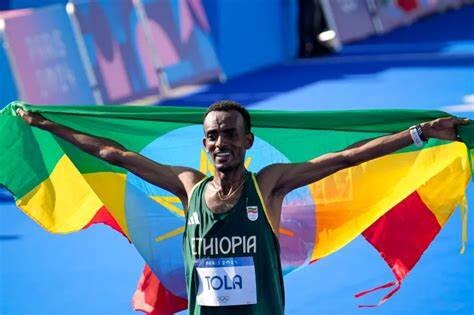
“For three months together with Kenenisa Bekele, Sisay Lemma, Deresa Geleta and I prepared for the national team. At that time my coach said, ‘prepare with them, and if you are not needed for Paris then go to do the New York City marathon’. When I heard the news that I was on the team, I was really excited for the following two weeks," Tola observed.
Tola who is the 2023 New York City marathon champion presumed that he had the blessings of Lemma and this too, gave him confidence to put his best foot forward. "For Sisay, it wasn’t an easy decision because it was for our country. We discussed it with him and he said, ‘It won’t be easy for me to run injured in Paris, so you go."
(12/30/2024) ⚡AMPby Evans Ousuru
Is this Pennsylvania senior the most prolific runner of 2024?
Gene Dykes, 76, racked up an astounding 43 races in 2024, including eight marathons and nine ultras.
At 76 years young, Pennsylvania’s Gene Dykes has made 2024 a year of milestones that most runners of any age would envy. Here’s a closer look at why this runner might just be the most prolific of the year—from breaking records to embracing DNFs (Did Not Finish) with humour, Dykes continues to prove that age is not a barrier.
Races around the globe (and in his backyard)
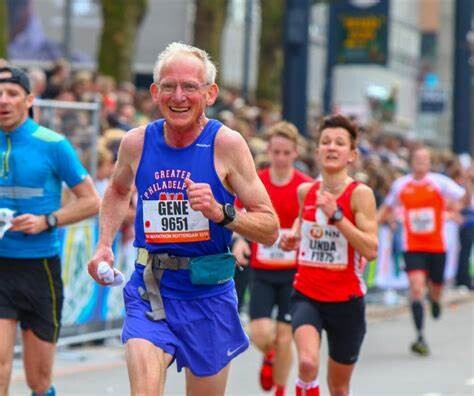
With 43 races completed in 2024, Dykes’s calendar reads like a globetrotter’s dream. He raced in three countries and racked up 19 starts in Pennsylvania alone. From marathons and ultras to shorter races like 5Ks, he tackled every distance imaginable. Dykes says a highlight was completing three stunning trail races in Australia. Dykes’s philosophy of “just run”—no stretching, no weights and no cross-training—clearly works for him.
But it wasn’t all wins. Six DNFs(did not finish), including one at mile 160 of a 200-mile race, remind us that even the most determined, experienced runners face challenges. His attitude? Brush it off and keep running.
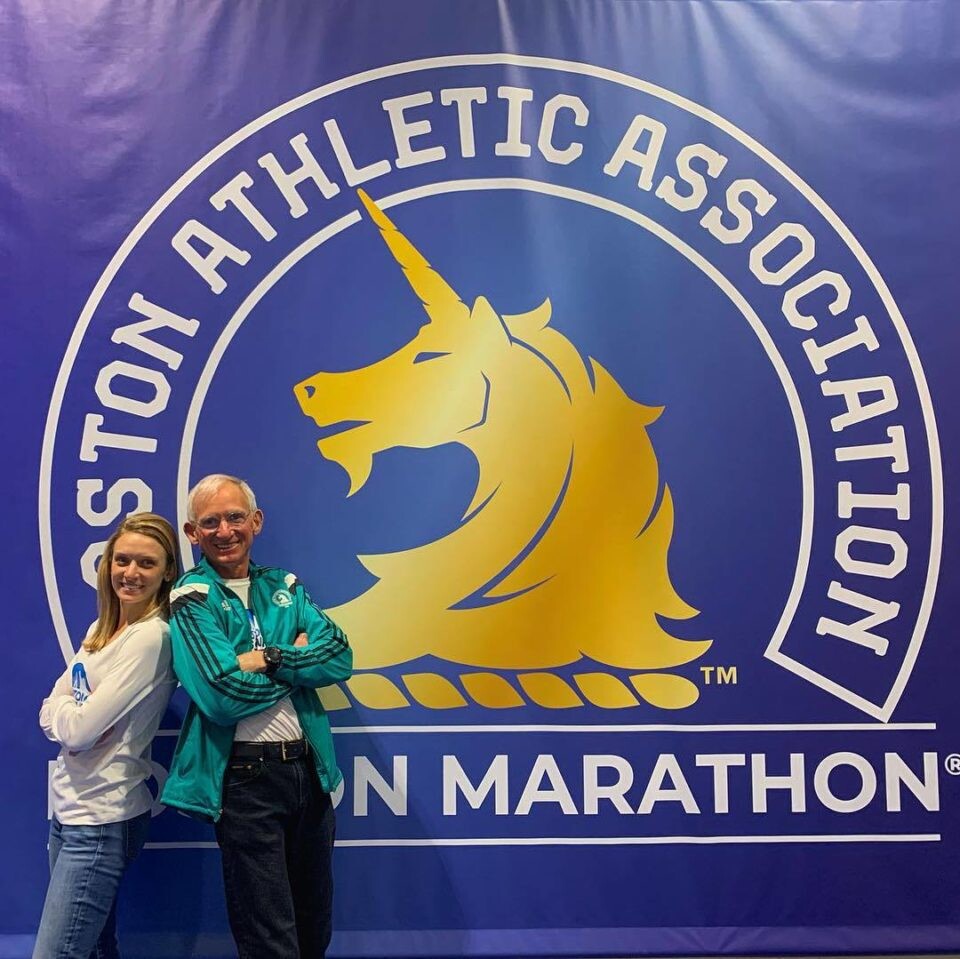
Breaking records and smashing goals
“This past year was all about running as many races as I could,” says Dykes. He compares his 2024 running season to 2018, when he ran 40 races and trained hard in between. “Every race and every training session made me faster,” he explains. “How did it go this year? I ran 43 races and every race and every training session just made me more and more tired. But I had a lot of fun!” Dykes captured five national championship races and three Pan American championship races throughout the year, but he was most pleased with setting the M75 course record at the Boston Marathon.
A family affair and adventure-driven philosophy
Running isn’t just a solo adventure for Dykes, and he says his marathon and ultra finishes with his daughters stand out as one of the highlights of his year. Adventure also motivated some of his races; he undertook a six-day trail running adventure in Newfoundland, covering 87 miles of rugged, breathtaking terrain.
What’s next for this marathon machine?
With 184 marathons and ultras to his name since 2006, including a 2:54:23 marathon PR at age 70, 2024 adds another incredible chapter for Dykes. Next year’s schedule is already packed, from the Tokyo Marathon (where he aims to complete his Marathon Majors clean sweep) to a 300-mile trail race in Arizona. After May, Dykes plans to take a well-deserved sabbatical, gearing up for a future in the M80 age group.
(12/30/2024) ⚡AMPby Keeley Milne
Save or Splurge? How to Decide Which Running Gear is Worth Your Money.
Not every piece of gear is worth it—here’s how to tell.
Running, at its core, is a relatively low-gear sport, but people love to bemoan that it’s increasingly expensive. I agree—paying $120 for a long-sleeve T-shirt or shelling out hundreds for compression boots seems bonkers to me.

I’ve been running for 10 years now, and for most of that time, I’ve been a broke student or frugal post-grad. I enjoy the competitive element of running, so I typically invest only in pieces that affect my performance. While shopping, I commonly ask myself: Will this make me a better runner, or would it just be nice to have?
Here’s my hard-earned wisdom—from head to toe—about where to splurge and where to save a few bucks.
Hats → Save
I rarely buy hats. And if I do, I buy them for cheap. Caps are a utility to me, and as long as they keep my face shaded and head ventilated, I don’t care too much about appearances. Plus, I sweat regardless, so the fancy ones that claim to be extra breathable seem pointless to me. Each time I go to a major marathon for work, I feel like I come home with at least one new cap. They’re a common freebie at brand events and expo booths.
Shirts → Save
This is another place where I save dough. I don’t obsess over fancy features like UV protection or worry if the material is ultra-breathable. I just wear sunscreen and go shirtless on a hot day.
I still have tech tees that my mom bought me in high school at the outlet mall, and some of my favorite tops have been clearance-rack finds at Marshalls. And you know those “free” shirts you get for signing up for a race? I wear them! Even if they’re ugly. Finally, I’m not afraid to wear cotton—it gets a bad rap, but there’s something poetic about sweat stains proving that you put in some effort.
Shorts → It Depends
For split shorts, I buy them cheap. For half tights, I splurge.
All I’m looking for in split shorts is a loose fit, a comfortable liner, and a little pocket for my house key. I like my short shorts short, so you’ll rarely see me wearing anything longer than a 5-inch inseam. My old Baleaf 3-inch and Nike Challenger 2-inch split shorts have served me well over the years.
Since half tights mean more material on my skin, investing in higher-quality fabrics is worth it. Plus, premium versions tend to have more-secure pockets. I used to hate running with my phone because I didn’t like carrying it, but I got a pair of Janji 8-inch trail half tights that have plenty of pockets and lock my phone into place. They’re worth the $82 to me.
Socks → Save
This might be my hottest take yet, but I like cotton socks. There, I said it! Some of my favorite cheap socks come in a six-pack from Dick’s Sporting Goods. My feet sweat a lot, and I’ve found that socks that are mostly made of cotton help mop up the perspiration better than pricier, “sweat-wicking” polyester (ironic, I know). I will say, I do have some running-specific socks that I enjoy. I usually wear Near Earth crew socks during races (which are a steep $24 per pair). They look sleeker than my white cotton Nike crews, and they match my race-day outfit better since they’re logo-less.
Trainers → Splurge
I believe that trainers are the single most important investment in a running wardrobe. However, shoes are freakin’ expensive nowadays, and if you run a lot, the money adds up. While I don’t recommend buying used shoes, I often scour the internet for last year’s models. Shoe tech has gotten so good in recent years that the difference between the 2023 version of a popular trainer and the 2024 pair isn’t much, and yet saves you a decent amount of money. I scored a new pair of the New Balance 1080 v12, which debuted in the spring of 2022, for under $100
Racing shoes → Splurge
Most marathoning super shoes are north of $200, and while I certainly notice a performance improvement—they’re a nonnegotiable at the elite level now—I’m sparing with how often I lace them up. I do a lot of my workouts in trainers or in old racing shoes that are nearing the end of their lifespan so I can save my good pair for key workouts and races. Lately, my Puma Deviate Elite 3s ($230) have been my weapon of choice. On race weekends, I try to avoid wearing them on shakeout runs, walking around the city, or even on my warmup jog before my race, if I can help it. Many carbon-plated shoes start to degrade around 200 miles, so every mile counts.
Sunglasses → Save
Good news: High-quality sunglasses can be pretty affordable! Sunglasses are easy to forget in a hotel room or sit on in your car (I would know), so I’ve never splurged on a fancy pair. Goodr has been leading the charge, with polarized options starting at only $25. I have three pairs.
Watches → Save
In high school, I bought a bare-bones Garmin Forerunner 10 for around $100, which I wore until the strap broke and I got frustrated with the glacially slow GPS signal. In college, I upgraded to the Forerunner 35 ($150). It served me well, but again, it was slow and lacked some basic features, like a lap button.
Now I have a Forerunner 955—close to the top-of-the-line at $500—that one of our gear editors passed along to me after he got a new watch. I like it better than my first two, but I’m not sure I would shell out my own money for one. I really only need the basics, not the fancy features like ground contact time or suggested workouts. One day, I dream of running with only a simple digital stopwatch, but I can’t will myself to leave the world of GPS yet.
Gloves → Save
Pennsylvania’s Lehigh Valley, where I live, can get cold, but I’ve found that cheap gloves do the trick. I’ve had a $30 pair of Nike basics from a sporting goods store that have done the job for close to a decade. Sometimes, if it’s abnormally cold, I’ll layer two pairs of thin gloves, thus eliminating the need for an expensive ultra-insulated pair.
Outerwear → It Depends
Soft layers, like pullovers, hoodies, and long sleeves, don’t need to be fancy. I cherish my college sweatshirts. But shell layers—rain jackets, windbreakers, insulated jackets—are worth the investment. The difference between being wet and shivering versus dry and comfortable is enough to make me pay a little extra. My Lululemon Fast and Free jacket ($148) is lightweight and totally worth it.
(12/29/2024) ⚡AMP4 ways to make your New Year's running resolution stick
Have you made the resolution to incorporate running into your life, but are worried you won’t be able to make the habit stick? Here are three ways to ensure you can sustain your New Year’s resolution for a lifetime.
Make it the default
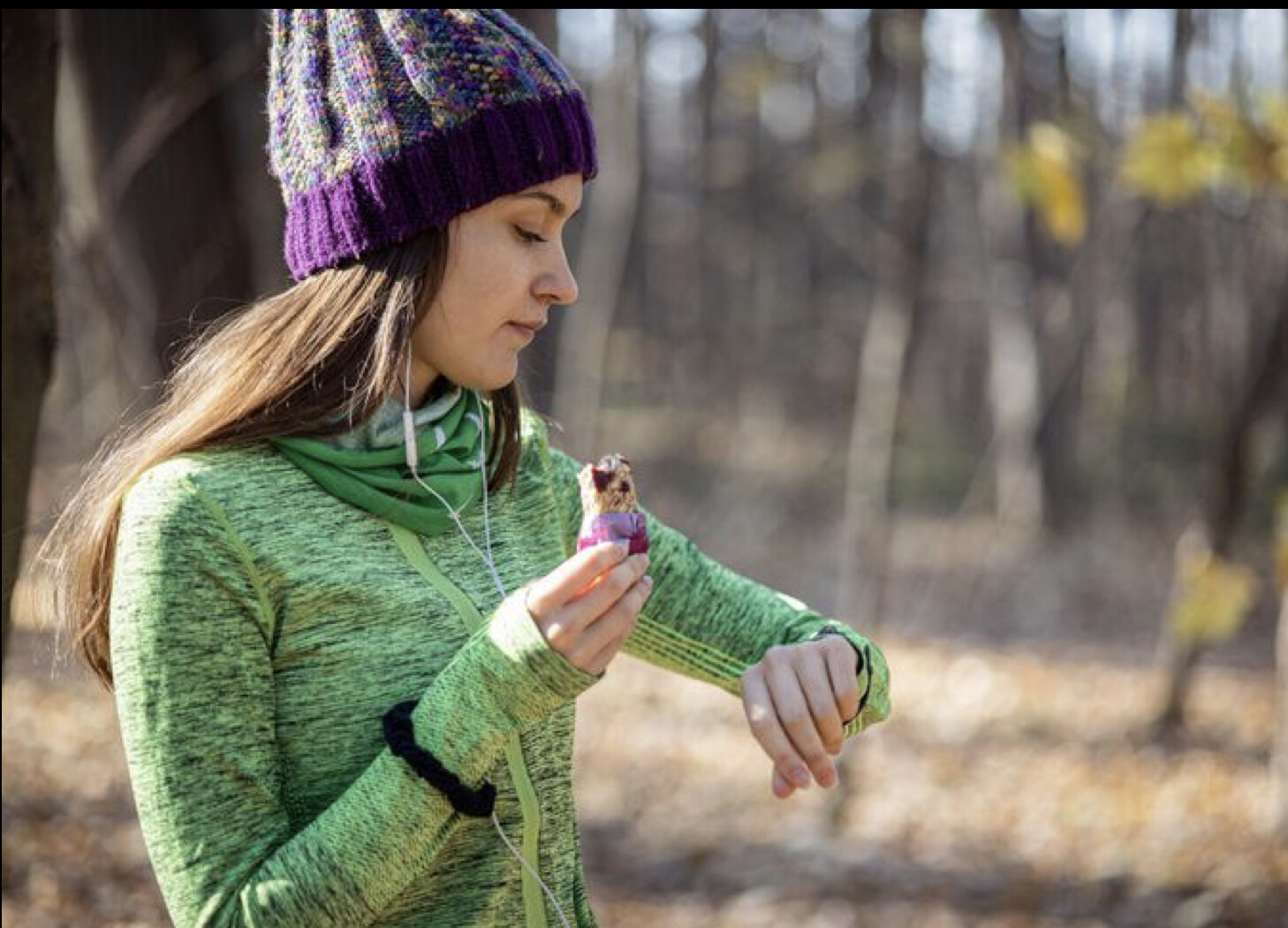

If you plan to run first thing in the morning, lay out your running kit (top, tights, socks, shoes, belt, reflective vest or headlamp and jacket, if applicable), plus a small snack, such as a tangerine or a couple of crackers with nut butter and a few sips of water, before you go to bed. That way, there’s nothing to do in the morning but suit up, wolf down your snack and get out the door. It can also help to add your runs to your daily calendar, just like anything else you are scheduling for the coming week. There may be days when you have to shift things around, but most of the time, scheduling your run will lend it importance, and you’ll be less likely to skip it.
Make it social
When you’re trying to establish a base of fitness, company definitely makes it easier, so look for a running club or learn-to-run program in your area. On your non-club days, consider listening to music, an audiobook or podcast to take your mind off the physical effort of running while you slowly build your fitness. Linking your routine (going for a run) to your reward (listening) can also help with motivation (i.e., saving that new album or podcast episode for your next run) and can be a great way to get yourself outside, even when you aren’t feeling it. For safety, keep the volume low, or opt for just one earbud.
Keep the pace easy
If you’re getting into running for the first time, keep the pace very easy and comfortable; many people give up because they think they have to run fast. You don’t! You want to be able to carry on a conversation while jogging; later, when you’ve built a base of fitness, you can add some faster workouts to your training. You can also adopt and run/walk system, where you alternate jogging for three minutes (or five minutes, or whatever feels doable) and then walking for one minute. No one but you has to know how fast or how slow you go.
If you’ve run in the past but are just rebuilding the habit, it’s still a good idea to start slowly and make at least 80 per cent of your runs easy-paced; it will take a few weeks to rebuild your fitness if you’ve taken a long break.
Get racing
There’s nothing quite like a goal to make a habit stick. And there is something very satisfying about signing up for, training for and completing a race. (Keep it short, for your first few races; a 5K is a lot more manageable than a marathon.) You have the initial excitement of putting a date on the calendar, and you could even invite friends to join you (or at least cheer you on). At many races, they’ll print your name on your bib, and even announce your name as you cross the finish line, which is very motivating! Training toward your goal and running a few times a week are great ways to stay consistent.
(12/29/2024) ⚡AMPMove or Die: SCIENTISTS CRUNCHED THE NUMBERS TO COME UP WITH THE SINGLE BEST PREDICTOR OF HOW LONG YOU’LL LIVE—AND CAME UP WITH A SURPRISINGLY LOW-TECH ANSWER
TO PREDICT your longevity, you have two main options. You can rely on the routine tests and measurements your doctor likes to order for you, such as blood pressure, cholesterol levels, weight, and so on. Or you can go down a biohacking rabbit hole the way tech millionaire turned longevity guru Bryan Johnson did. Johnson’s obsessive self-measurement protocol involves tracking more than a hundred biomarkers, ranging from the telomere length in blood cells to the speed of his urine stream (which, at 25 milliliters per second, he reports, is in the 90th percentile of 40-year-olds).
Or perhaps there is a simpler option. The goal of self-measurement is to scrutinize which factors truly predict longevity, so that you can try to change them before it’s too late. A new study from biostatisticians at the University of Colorado, Johns Hopkins University, and several other institutions crunched data from the long-running National Health and Nutrition Examination Survey (NHANES), comparing the predictive power of 15 potential longevity markers. The winner—a better predictor than having diabetes or heart disease, receiving a cancer diagnosis, or even how old you are—was the amount of physical activity you perform in a typical day, as measured by a wrist tracker. Forget pee speed. The message to remember is: move or die.

It’s hardly revolutionary to suggest that exercise is good for you, of course. But the fact that people continue to latch on to ever more esoteric minutiae suggests that we continue to undersell its benefits. That might be a data problem, at least in part. It’s famously hard to quantify how much you move in a given day, and early epidemiological studies tended to rely on surveys in which people were asked to estimate how much they exercised. Later studies used cumbersome hip-mounted accelerometers that were seldom worn around the clock. The new study, published in Medicine and Science in Sports and Exercise, draws on NHANES data from subjects recruited between 2011 and 2014, the first wave of the study to employ convenient wrist-worn accelerometers that stay on all day and night.
Sure enough, it turns out that better data yields better predictions. The study zeroed in on 3,600 subjects between the ages of 50 and 80, and tracked them to see who died in the years following their baseline measurements. In addition to physical activity, the subjects were assessed for 14 of the best-known traditional risk factors for mortality: basic demographic information (age, gender, body mass index, race or ethnicity, educational level), lifestyle habits (alcohol consumption, smoking), preexisting medical conditions (diabetes, heart disease, congestive heart failure, stroke, cancer, mobility problems), and self-reported overall health.
Take a moment to let that sink in: how much and how vigorously you move are more important than how old you are as a predictor of how many years you’ve got left.
The best predictors? Physical activity, followed by age, mobility problems, self-assessed health, diabetes, and smoking. Take a moment to let that sink in: how much and how vigorously you move are more important than how old you are as a predictor of the years you’ve got left.
These results don’t arrive out of nowhere. Back in 2016, the American Heart Association issued a scientific statement calling for cardiorespiratory fitness, which is what VO2 max tests measure, to be considered a vital sign that doctors assess during routine checkups. The accumulated evidence, according to the AHA, indicates that low VO2 max is a potentially stronger predictor of mortality than usual suspects like smoking, cholesterol, and high blood pressure. But there’s a key difference between the two data points: VO2 max is about 50 percent determined by your genes, whereas how much you move is more or less up to you.
All this suggests that the hype about wearable fitness trackers over the past decade or so might be justified. Wrist-worn accelerometers like Apple Watches, Fitbits, and Whoop bands, according to the new data, are tracking the single most powerful predictor of your future health. There’s a caveat, though, according to Erjia Cui, a University of Minnesota biostatistics professor and the joint lead author of the study. Consumer wearables generally spit out some sort of proprietary activity score instead of providing raw data, so it isn’t clear whether those activity scores have the same predictive value as Cui’s analysis. Still, the results suggest that tracking your total movement throughout the day, rather than just formal workouts, might be a powerful health check.
The inevitable question, then, is how much movement, and of what type, we need in order to live as long as possible. What’s the target we should be aiming for? Cui and his colleagues track the raw acceleration data in increments of a hundredth of a second, which doesn’t translate very well to the screen of your smartwatch. The challenge remains about how to translate that flood of data into simple advice regarding how many minutes of daily exercise you need, how hard that exercise needs to be, and how much you should move around when not exercising.
To be honest, though, I’m not sure the quest to determine an exact formula for how much we should move is all that different from the belief that measuring your urine speed will give you actionable insights about your rate of aging. Metrics do matter, and keeping tabs on biomarkers backed by actual science, like blood pressure, makes sense. But it’s worth remembering that the measurement is not the object; the map is not the road. What’s exciting about Cui’s data is how it reshuffles our priorities, shifting the focus from all the little things our wearable tech now tracks to the one big thing that really works—and which is also a worthwhile goal for its own sake. Want to live forever? Open the door, step outside, and get moving.
(12/29/2024) ⚡AMPTake the “You vs. The Year 2025” Running Challenge
This challenge can help you meet your fitness and running goals this year.Are you ready to take on 2025? If so, then lace up your running shoes, and let’s get started!
With the new year on the horizon, it’s a good time to set new running goals and a start following realistic plan to meet them. But we all know that New Year’s resolutions aren’t the way to go. They often create unrealistic pressure and guilt-ridden fear of failure. Also, let’s face it, most New Year’s resolutions are broken or forgotten before the end of January. But that doesn’t mean you shouldn’t be eager to achieve your fitness and running goals in 2025.

You vs the Year 2025
What else is there? Here’s a novel challenge that can keep you motivated all year long with built-in steps to success and unlimited opportunities to restart if your running fervor hits a roadblock and stalls out. It’s called You vs. The Year 2025, a challenge to run (or walk) 1,025 kilometers between January 1 and December 31. That’s roughly 637 miles or about 12 miles per week and 365 days of dedication to your fitness and your goals. (That might be a great place to start, but if you want a higher goal, you can make your own adaptation to the program and shoot for 2,025 KM or 1,025 miles or 2,025 miles—or any goal you choose.)To keep you motivated and celebrate your hard work, all participants who complete the challenge will be entered to win the ultimate race weekend package from Brooks, including a race entry stipend for you and a friend, a Brooks eGift card, and $2,000 to use toward travel and lodging.
You can log up to two runs or walks per day, and any kilometers from other challenges throughout the year will count toward your You vs.The Year 2025 total.
Let’s make 2025 your year—one kilometer at a time. Get started today and keep your momentum going all year long.RULESYou must complete 1,025 KM to complete the challenge
Run, Walk, Hike, Indoor Run, and Treadmill workouts are eligible
Workouts must be at least 5 minutes long
A maximum of 2 workouts per day will count toward the challenge
PRIZESParticipants who complete the challenge will earn an exclusive Challenge Completion Badge to showcase their achievement and be entered to win the ultimate race weekend package from Brooks, including a race entry stipend for you and a friend, a Brooks eGift card, and $2,000 to use toward travel and lodging.
(12/29/2024) ⚡AMPOsaka International Women's Marathon Elite Fields announced
The elite field for the Jan. 26 Osaka International Women's Marathon is out, and it's a really short list, especially given Osaka International's World Athletics platinum label status. There's last year's winner Workenesh Edesa, 3rd-placer Mizuki Matsuda, 7th-placer Natsumi Matsushita, 9th-placer Madoka Nakano and 12th-placer Kana Kobayashi, top Japanese Paris Olympic marathon placer Yuka Suzuki, veteran Kenyan-born Israeli Lonah Chemtai Salpeter, the debuting Nanaka Izawa, and that's about it.
Workenesh outran Honami Maeda last year, both going under 2:19 and Workenesh getting the win in 2:18:51. She has to be viewed as the favorite. Salpeter has run as fast as 2:17:45 before, but she hasn't run under 2:25 in the marathon or under 1:10 in the half marathon since 2022, so there's not much reason to think she's going to be competitive in a faster race here. Matsuda and Suzuki both ran PBs in their last marathons, Matsuda a 2:20:42 in Berlin this fall and Suzuki a 2:24:02 while finishing 6th in the Paris Olympics. Kobayashi and Izawa are interesting, Kobayashi having run 2:29:44 last year as a non-track team student at Waseda University and then winning Hofu at the beginning of December in a 2:24:59 CR, and Izawa fresh off a great 1:08:25 PB at the Sanyo Ladies Half Marathon this month.
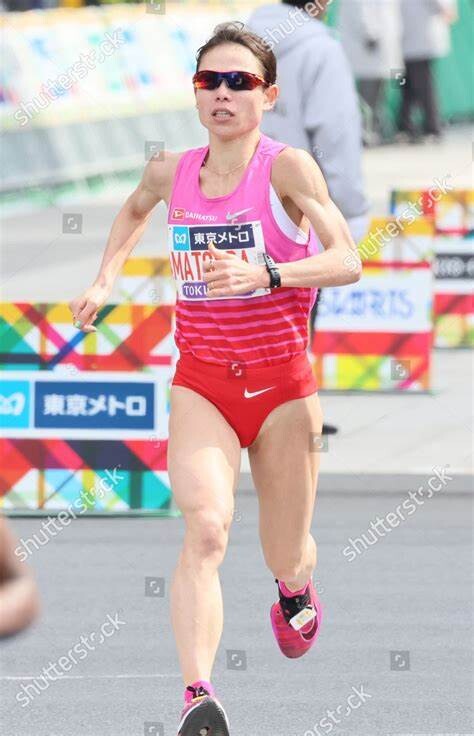
The Osaka Half Marathon is also happening in parallel with the marathon, and the fields there are decently competitive as always. Yuka Ando won the women's race in Osaka last year in a 1:08:18 PB and is back this time, facing sub-70 runner Sakiho Tsutsui, Mongolian NR holder Khishigsaikhan Galbadrakh and more. 1:00:41 Ethiopian Gebrie Erikhun leads a domestic men's field that includes Japan-based Patrick Mathenge Wambui and a million 61-minute Japanese men.
44th Osaka International Women's Marathon
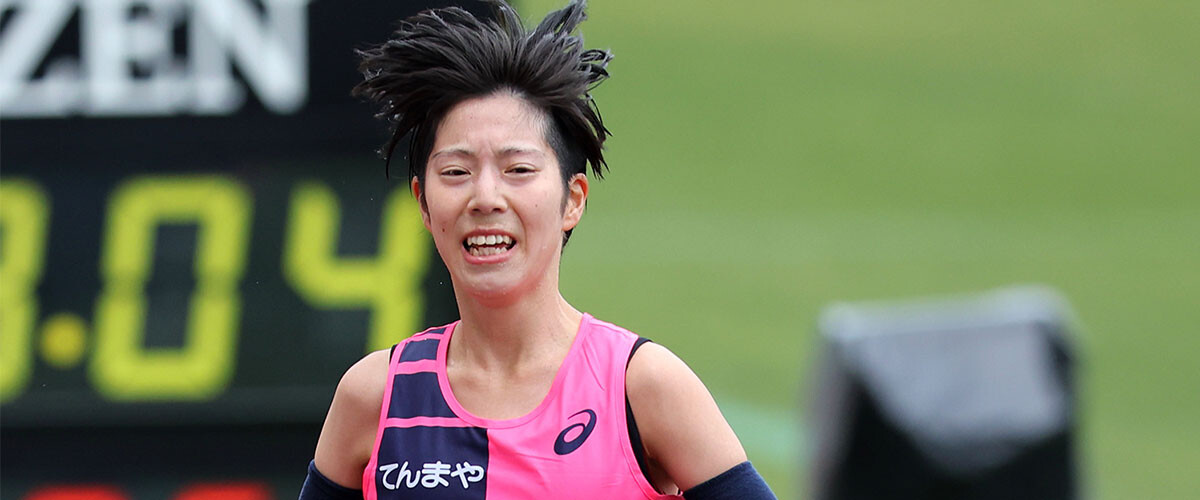
Elite Field Highlights
Lonah Chemtai Salpeter (Israel) - 2:18:45 (Nagoya 2022)
Workenesh Edesa (Ethiopia) - 2:18:51 (Osaka Women's 2024)
Mizuki Matsuda (Daihatsu) - 2:20:42 (Berlin 2024)
Natsumi Matsushita (Tenmaya) - 2:23:05 (Osaka Women's 2022)
Yuka Suzuki (Daiichi Seimei) - 2:24:02 (Paris Olympics 2024)
Kana Kobayashi (Otsuka Seiyaku) - 2:24:59 (Hofu 2024)
Yumi Yoshikawa (Chiba T&F Assoc.) - 2:25:20 (Osaka Women's 2023)
Chiharu Suzuki (Hitachi) - 2:25:59 (Osaka Women's 2023)
Madoka Nakano (Iwatani Sangyo) - 2:26:50 (Osaka Women's 2024)
Mao Kiyota (Suzuki) - 2:29:20 (Nagoya 2023)
Ayano Ikeuchi (Denso) - 2:32:26 (Seoul 2024)
Ayano Ikemitsu (Kagoshima Ginko) - 2:33:29 (Nagoya 2023)
Debut
Nanaka Izawa (Starts) - 1:08:25 (Sanyo Half 2024)
Rio Einaga (Osaka Gakuin Univ.) - 1:11:03 (National University Half 2023)
Kurumi Yoda (Osaka Gakuin Univ.) - 1:12:46 (Kansai University Half 2024)
Nanako Miwa (Kansai Gaikokugo Univ.) - 1:14:37 (Kansai University Half 2023)
(12/28/2024) ⚡AMPby Brett Larner
Osaka International Womens Marathon
The Osaka International Ladies Marathon is an annual marathon road race for women over the classic distance of 42.195 kilometres which is held on the 4th or 5th Sunday of January in the city of Osaka, Japan, and hosted by Japan Association of Athletics Federations, Kansai Telecasting Corporation, the Sankei Shimbun, Sankei Sports, Radio Osaka and Osaka City. The first...
more...Four ways to make your New Year’s running resolution stick
Have you made the resolution to incorporate running into your life, but are worried you won’t be able to make the habit stick? Here are three ways to ensure you can sustain your New Year’s resolution for a lifetime.
1.- Make it the default
If you plan to run first thing in the morning, lay out your running kit (top, tights, socks, shoes, belt, reflective vest or headlamp and jacket, if applicable), plus a small snack, such as a tangerine or a couple of crackers with nut butter and a few sips of water, before you go to bed. That way, there’s nothing to do in the morning but suit up, wolf down your snack and get out the door. It can also help to add your runs to your daily calendar, just like anything else you are scheduling for the coming week. There may be days when you have to shift things around, but most of the time, scheduling your run will lend it importance, and you’ll be less likely to skip it.
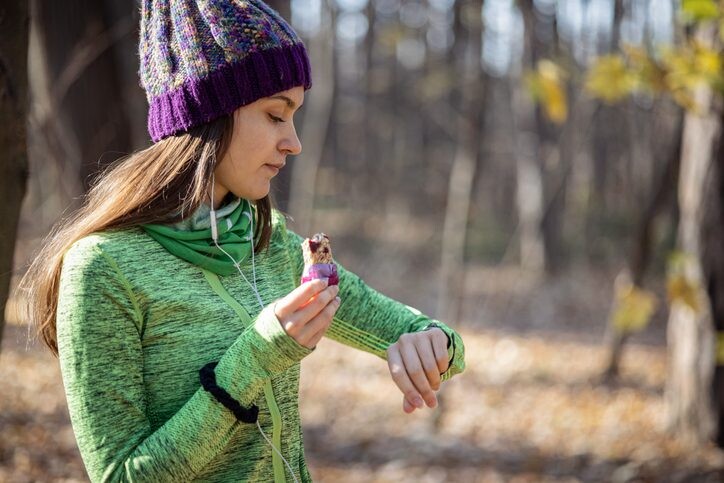
2.- Make it social
When you’re trying to establish a base of fitness, company definitely makes it easier, so look for a running club or learn-to-run program in your area. On your non-club days, consider listening to music, an audiobook or podcast to take your mind off the physical effort of running while you slowly build your fitness. Linking your routine (going for a run) to your reward (listening) can also help with motivation (i.e., saving that new album or podcast episode for your next run) and can be a great way to get yourself outside, even when you aren’t feeling it. For safety, keep the volume low, or opt for just one earbud.

3.- Keep the pace easy
If you’re getting into running for the first time, keep the pace very easy and comfortable; many people give up because they think they have to run fast. You don’t! You want to be able to carry on a conversation while jogging; later, when you’ve built a base of fitness, you can add some faster workouts to your training. You can also adopt and run/walk system, where you alternate jogging for three minutes (or five minutes, or whatever feels doable) and then walking for one minute. No one but you has to know how fast or how slow you go.
If you’ve run in the past but are just rebuilding the habit, it’s still a good idea to start slowly and make at least 80 per cent of your runs easy-paced; it will take a few weeks to rebuild your fitness if you’ve taken a long break.
4.- Get racing
There’s nothing quite like a goal to make a habit stick. And there is something very satisfying about signing up for, training for and completing a race. (Keep it short, for your first few races; a 5K is a lot more manageable than a marathon.) You have the initial excitement of putting a date on the calendar, and you could even invite friends to join you (or at least cheer you on). At many races, they’ll print your name on your bib, and even announce your name as you cross the finish line, which is very motivating! Training toward your goal and running a few times a week are great ways to stay consistent.
(12/28/2024) ⚡AMPby Lauren Charlton
What’s Your Why? Our Readers Share Their Biggest Motivators for Getting Out There to Run
We asked runners what motivates them to get out and hit the road—their answers may inspire you.
Why do you run? If you’ve never thought about it before, ask yourself now.


Being intentional about the reason why you run is a crucial part of maintaining motivation, especially if you’re just starting your running journey. Most of us know the research-backed benefits of running, but what is going to be that thing that gets you out the door when you don’t even feel like moving?
While your reason should be unique and personal to you, here’s some inspiration from our dedicated Runner’s World+ members and social audiences on Instagram and Facebook to keep in mind when considering what your why is.
For Myself
“Running is my ‘me time.’ It is time for me to simply run, listen to music, and enjoy the outdoors. It allows me to begin each day with a sense of accomplishment, and along the way I plan my to-do list, calculate finances, and solve problems. I do my best thinking when I am running. It also keeps me focused on my health and I always have at least one half marathon or marathon to train for.”—Jill Pompi (RW+ member)
“Because it’s the only thing in my life that’s just mine.”—April Thomson
“As a mom of three littles, running is my ‘me time.’ Time to fill my own cup; time to work toward a personal goal; time to show my kids that I enjoy movement simply because it helps me be happy, healthy, and strong!”—Marlena Shaw (RW+ member)
“It’s my time—no one asking me for anything. It’s me vs. me. Love the feeling after a long run.”—Spullins JB
“Running is just for me, and I run so I can be my best self. I don’t mean physically. Sure, I love how strong my legs feel when I cross a finish line or that good burn after a long run. But my best self is found when I hit the pavement and process whatever is going on in my life. I have two young kids (ages 3 and 14 months), and I am constantly being poked, pulled, and called. When I lace up my running shoes, the stress melts away and I am a better mother because of it.”—Melissa Hofstrand (RW+ member)
“To escape from reality for a brief moment and enjoy my ME time.”—Yuri Aguilar
“Sometimes to relax, regroup, and shake out anything bothering me… but usually to start my day off just right!”—Erin Carey Ryan
For My Health
“My health, specifically my heart.”—Kati Johnson (RW+ member)
“To maintain my health and challenge myself to reach new running goals.”—Gwen Jacobson (RW+ member)
“To fight bad genetics and hear my grandkids say, ‘Whoa, Grandma!’”—Michele (RW+ member)
“My asthma kept me from doing exercise for so many years. I’m running because I can finally do something I never thought possible.”—Patricia McHugh (RW+ member)
“To save my life. I am type 2 diabetic by way of having PCOS. By the time I was diagnosed with PCOS, I had developed full-blown diabetes. I run now to train for a half marathon I crazily signed up for and to get in shape for my first century ride next year. I will run and bike towards a cure.”—Stephanie Gold (RW+ member)
“I exercise and stay active so that I can be mobile and independent as long as possible as I get older. I choose running because it gives me such a great sense of accomplishment.”—Lisa Bartlett
“I run because last year I got Pulmonary embolisms in my lungs and now I want to improve my health and my lungs and spread awareness!”—Jennifer Cole
“Manage stress and support in quitting smoking.”—Aude Carlson (RW+ member)
“Keeps my AFib under control.”—Todd W. Peterson
“I want to be able to walk well into my old age. I have family members who have significantly lost mobility due to their unwillingness to exercise.”—Amy Watkins (RW+ member)
“To control my type 2 diabetes! It works!”—Mike Shamus
For Someone Else
“I started running after witnessing my mom complete a marathon and was overcome with emotion when she finished. I began running the very next year and completed a half marathon with my mom and have been running ever since. Running does so many things for me. It’s my escape, it keeps me centered, helps me to focus, a confidence builder but more importantly allows me to follow in the footsteps of my mom and continue to honor her. I wear a shirt with a picture of her running our last race together so that she’s running with me. I love to run!”—Chantal (RW+ member)
“My daughter.”—Jesse Sturnfield (RW+ member)
“To keep my sanity. Also, I wanna show my kids if they work hard, don’t give up, and find a love for something, they can accomplish anything in life. When they’re tired, stressed, unhappy, just to channel in and get the work done. They’ve been there when I run my marathons and have shown support and encouragement, and I’ll do the same for them. My daughter joined cross country this year and wants to join again next year. My son is wanting to join as well.”—Angela Yawea
“Because my dad ran. I lost him six years ago and clearing his flat I found his medal from Reading Half Marathon in 1988. Holding it inspired me to change. I have my dad’s and my medal from the same race together.”—Stumpy Taylor
For My Mental Health
“To keep my sanity!”—Libby Meyer (RW+ member)
“It’s my therapy.”—Allie Haight
“Running is my ultimate stressbuster! As a middle-aged tech leader, husband, and father to two preteens, running generates all the right endorphins and energy to ensure I’m on top of my game—all of my games!”—Annu Kristipati (RW+ member)
“Cheaper than therapy.”—Louie J. Frucci
“Running helps me dealing with my anxiety, my mental health, but especially this past year with grief. I lost my dad last year and couldn’t work out for two months. I was able to go back to working out thanks to running. Then I signed up for my first marathon. That was on the one-year anniversary of my dad’s passing. Running is my way to feel my dad close and be able to connect with him.”—Fadela (RW+ member)
“Because it has the power to mute my anxiety and self-doubt.”—Nicholas Kuiper
“Running makes me happy. It reduces my stress and anxiety and improves my mental health. It keeps my cardiovascular system strong.”—Suzanne Reisman (RW+ member)
“To stay calm in the chaos.”—Christine Starkweather
To Feel Powerful & Free
“Because it makes me feel powerful and healthy (sometimes only once it’s over).”—Laura (RW+ member)
“To be a real-life video game character.”—Erin Fan (RW+ member)
“Feels like I’m flying. Powerful and free.”—Tenaya Hergert
“I run because I want to be healthier in my 50s than I was in my 30s! And, also, running makes me feel powerful.”—Laura (RW+ member)
“Running gives me a voice.”—Becky Westcott Capazz
“It makes me feel strong and confident, that I can handle everything else in my day.”—Rebecca Eisenbacher (RW+ member)
“To feel free, manage anxiety, accomplish increasing mileage.”—Barbara Saunders (RW+ member)
“Total freedom. Slap your shoes on and be free.”—coach_shasonta
For Connection
“Running makes me feel strong and is my way of meditating. I also love that I’ve been able to connect with people and make so many new friends through running. I enjoy seeing my fitness progression.”—Gisele Carig (RW+ member)
“For my mental health and human connection with friends.”—lizpowers76
“Refreshes the spirit. BTW: I can no longer run; I train and enter races as a walker. Have made many new friends who accept me for just being there.”—Lewis Silverman
“I have many reasons. I connect with my running partners on some runs. I connect with God on others. I find a sense of accomplishment. I like to test what my body can tolerate.”—Tim Thomas (RW+ member)
“When I’m alone, I run to quiet my mind. It is meditative and rejuvenating. I also run to be social. The running community is the best.”—Andy Romanelli (RW+ member)
“Makes 77 feel young and hanging around with younger runners is a whole lot of fun. Not to mention I’ve been loving going for a run for more than 46 years.”—Barbara Ann Morrissey
Because I Love Racing
“I want to improve my 5K time.”—Courtney Danko-Searcy (RW+ member)
“The feeling I have on race day, within the first mile, that all the training is paying off.”—Mark Hopkins (RW+ member)
“My husband and I started running about six years when my son, who was about 12 at the time, had run over 25 5Ks. It took about a year until we were ready for our first 5K. We love running and training together. Running helps me at the end of a long teaching day, and it just feels so good after! We have since ran many 5Ks, some 10Ks, and two half marathons!”—Suzy Wintjen (RW+ member)
“It’s at the end of Ironman.”—Cheryl Turpin
“First, I began to improve my health, then I got hooked. Fifteen years later I am chasing my Six Star Medal.”—Jorge Mitey (RW+ member)
“It’s something I’ve always done since fifth grade. I got into racing 25 years ago. I love the challenge running gives me to constantly improve and get back out there whenever I’ve been injured or ill; and next month will one year since starting my first running streak! Most of all, I run because I love how it makes me feel. It has gotten me through the worst times in my life. Whenever I’m having a bad day, whether I’ve already gone running or not, I go running. It always calms me and makes feel better.”—Elle Escochea Grunert
So That I Can Indulge
“Because I love carbo loading.” —Bud Bjanuar
“I run so I can eat whatever I want and still be in shape!”—Christi Webb (RW+ member)
“I run to eat poutine.”—Robin Bosse
“So I can drink beer!”—Kathy Davis Ward
“Because I am a chocoholic.”—Chantal Englebert
“Faster than walking and I like tacos.”—Shelly Pedergnana
“I run to eat crispy pata.”—Arrin Villareal
To Get Outside
“Fitness and peace of mind. Also, a great way to explore neighborhoods and the outdoors.”—Sue Padden
“The feel of being outside with my dog. Watching him enjoy the run lets me enjoy the run.”—Stan (RW+ member)
“It’s my time with nature. It’s for me to clear my head and think.”—Assa Burton
“Running is my sanctuary. It’s where I can clear my mind, letting go of stress and finding clarity with each step. The rhythm of my feet hitting the ground is a meditative escape, helping me to focus and recharge. Physically, running keeps me in peak condition, building strength and endurance while boosting my overall health. But what I love most is being outside, feeling the fresh air, and soaking in the beauty of nature. Whether it’s a sunlit trail or a quiet street at dawn, running connects me to the world around me in a way nothing else can.”—Adam Scolatti (RW+ member)
Because I Can
“This is my ‘stock’ answer. I do because I can and I can because I do.”—Chip Kidd
“Because I’m not ready to give up yet.”—Martha Rhine (RW+ member)
“Because I was completely disabled, not able to move, stand, walk, talk, or do anything... stuck in the hospital for 13 weeks. When I was discharged and started to walk a little, I needed something to help me get some kind of life back. Running was it.”—Rob Snavely
“Because I’m 70, and not dead yet.”—Michele Glover
“Because I can. One day I won’t be able to and it’s not today.”—Mike Bravo
“Because one day I’ll be old and everything will hurt, and it’s the one thing in my life that lately makes me happy. When you’re running you forget everything. If you’re still thinking of debt, sadness, breakups, you’re not trying hard enough. Every day you have to push yourself.”—Miryam Hernandez
“Because I still can… at 73.”—Joanne Gile Michaelsen
“Forty-five years, why stop now? Never regret going for a run.”—Leslie Kitching
“Sixty-one years old. Been running since I was 15. Because a day without running is like a day without brushing your teeth.”—Sharon Graeber Hall
To Prove it to Myself or Someone Else
“To prove I can. And prove my mind is more powerful than my body.”—Colton James
“Because I still can, and everyone tells me I can’t!”—Lloyd K Leverett
“To tell people I did.”—Chris S. Charlett
“I’m 55. Basketball days are over. The need to compete is still there, and even if that means competing with myself, running allows me to do that.”—Shawn Davis
Because I Hate How I Feel When I Don’t
“I don’t know, but recently I injured my knee, and I was sad I couldn’t run. Thank god, it healed itself. I think running gives me inner peace.”—Jose Murga
“Because I hate the way my brain itches when I don’t.”—Joe Baron
“Because it’s better than smacking my family upside the head from being over stimulated. [It] helps my mental health.”—heatherbrubaker19
“I don’t like it until it’s over.”—Laurie Stinson Fuller
“So that I am tolerable to my husband!”—Dimitra Zakas
“It’s either that or sending my work computer flying out the window like a frisbee on the regular.”—Ayla Amon
“It feels so good when I stop.”—Sarah Wiley
(12/28/2024) ⚡AMPColin Farrell Ran the Most Memorable Celebrity Marathon of 2024—but Not the Fastest
See which stars ran 26.2 miles and set PRs this year.
After a dip in participation levels due to the COVID-19 pandemic, marathons are finally seeing an upswing in popularity. This year, you had a better chance of getting into Yale University (5 percent) than having your name selected in the New York City Marathon lottery (4 percent).
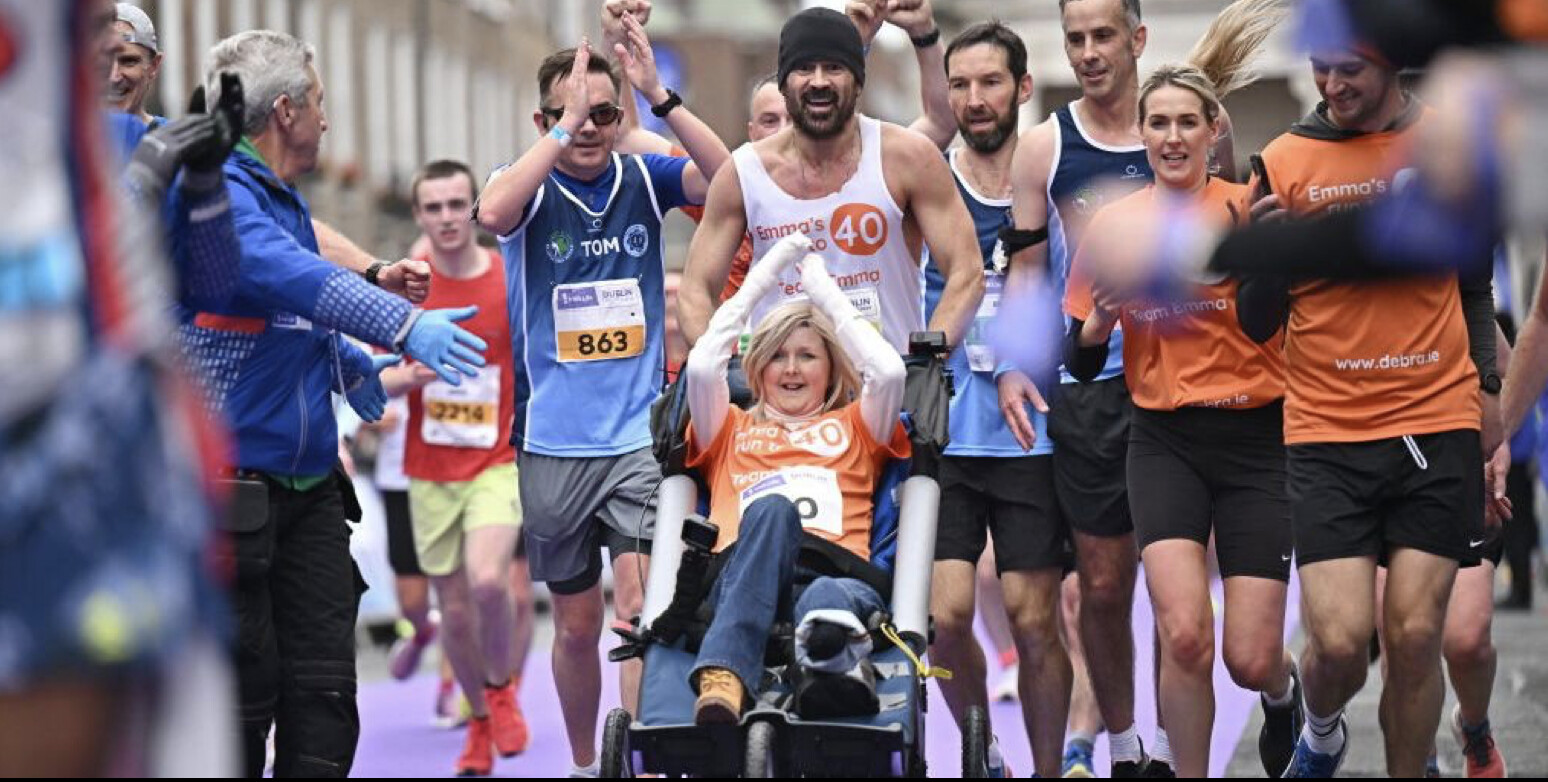
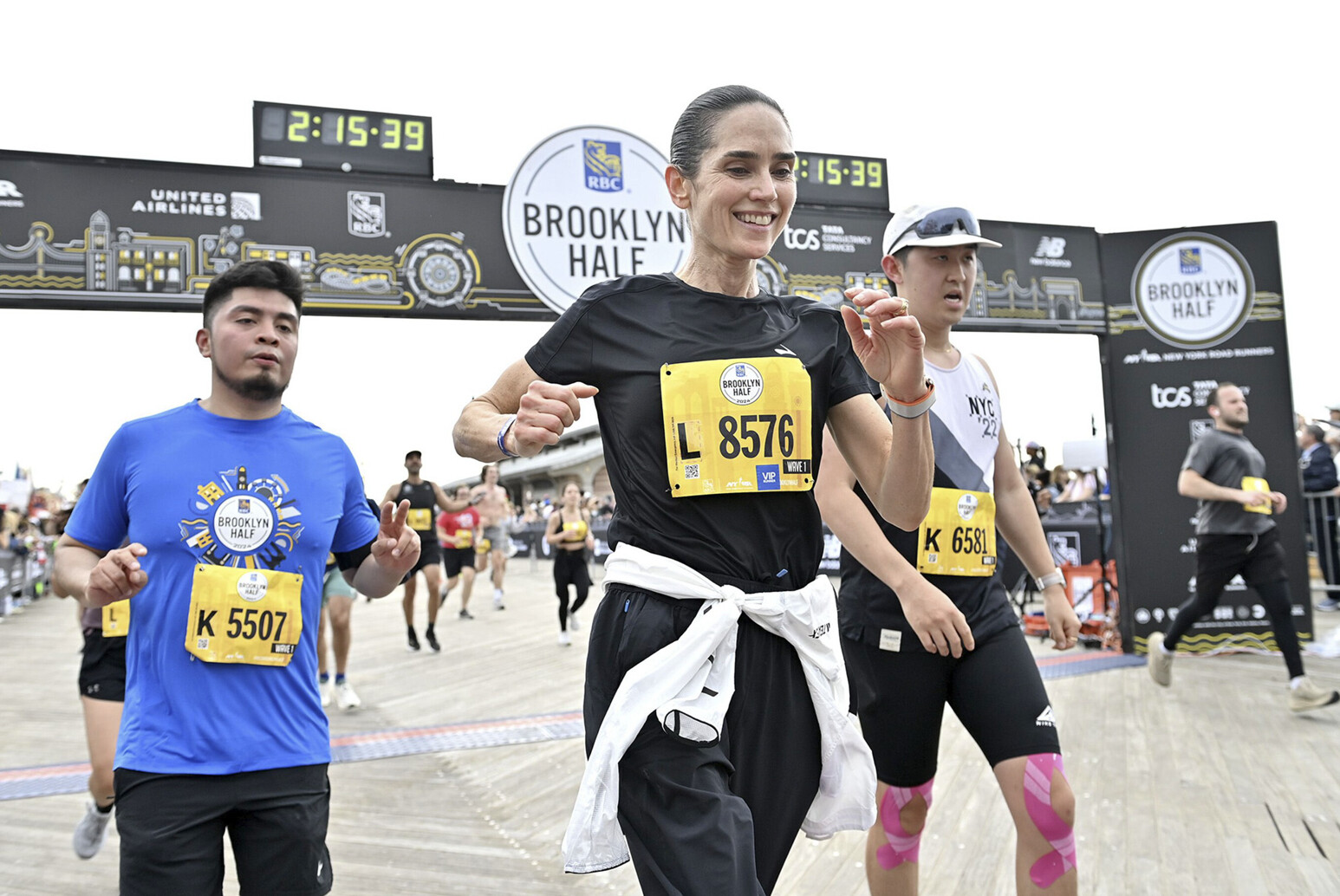
While certain big shots prefer to stick to 5Ks or half marathons—or just like running to blow off some steam, like Kendrick Lamar—we’ve spotted stars in the crowds of some of the world’s largest races. The NYC Marathon, especially, is a popular destination for VIPs, with many celebrities choosing to raise money for charities.
Here are some of the top marathon times—and most inspiring stories—from celebs in 2024.
Colin Farrell, 4:06:45
This wasn’t Farrell’s first marathon—he ran 3:53:14 at the 2021 Brisbane Marathon—but it sure was the most memorable. At October’s Dublin Marathon, the Irish actor finished in 4:06:45. But the time wasn’t important. Farrell, during the last 2.5 miles of the race, pushed his friend, Emma Fogarty, in a wheelchair. Fogarty has epidermolysis bullosa, a rare genetic skin condition, which can cause painful skin blistering. The pair raised nearly $1 million for Debra Ireland, a charity that helps fund research for the disorder.
Jennifer Connelly, 3:45:47
The actress, who won an Academy Award for portraying Alicia Nash in A Beautiful Mind, took on her first marathon on the streets of New York City in November. While she admitted she was nervous before the race, the Top Gun: Maverick alum looked like she had a blast, posing with other celebrity runners and thanking the famously boisterous New York crowd in a post-race Instagram post. She raised money for the cancer research organization Fred’s Team MSK.
Chelsea Clinton, 3:45:51
Just behind Connelly in New York was the former first daughter. Clinton was low-key about running the five boroughs. She didn’t publicly announce her participation; instead, she told the world after the race, posting a photo with her mother, Hillary, who met her at the finish line. Clinton ran with her friend, Jen, in support of the nonprofit Every Mother Counts.
Casey Neistat, 2:57:48
One of the most moving videos of the year was Neistat’s 12-minute documentary, “Sisyphus and the Impossible Dream.” In the video, Neistat, who has grown a massive following on YouTube since joining in 2010, chronicles his quest to break 3:00 in the marathon—ultimately a 17-year journey. He finally achieved his goal in December 2023 at the Tucson Marathon, where he ran 2:57:34. Before this year’s NYC Marathon, Neistat semi-jokingly asked his fans to refrain from waving to save him some precious seconds. It apparently worked; he nearly PR’d, running 2:57:48.
Matt James, 3:00:41
Matt James has worn a lot of hats: Wake Forest football player, Bachelor star, and now chronic marathoner. The 33-year-old is a regular at the World Majors. This year, he nabbed a personal best of 3:00:41 at April’s London Marathon and followed it up with a 3:29:26 at the New York City Marathon. He told Runner’s World his dream marathon partner would be Gordon Ramsay, who owns an impressive 3:30:37 PR himself. “After the marathon, you’re guaranteed a fire meal,” James said.
Phoebe Robinson, 5:53:19
The comedian and writer started running in March 2023 and bookended her 2024 with the Boston Marathon (5:53:19) and NYC Marathon (6:06:52). After Boston, Robinson posted on Instagram a thought that most people have after completing their first 26.2:
“I CAN. F***ING. DO. ANYTHING.”
Nev Schulman, untimed
Like Matt James, Schulman is a regular on the marathon circuit. He owns a PR of 2:58:54 from 2018, but lately, the host of MTV’s Catfish has focused on giving back to the running community.
At Boston in the spring, Schulman was a guide for blind para-athlete Francesco Magisano, who finished in 4:29:43. But in August, Schulman broke his neck after a truck hit him while he was biking. Incredibly, Schulman recovered in time to guide Magisano at the New York City Marathon, where Magisano crossed the finish in 4:02:31. (Since Schulman was a guide, he’s not listed in the official results.)
(12/28/2024) ⚡AMP5 Things Most Marathoners Shouldn’t Worry About
Marathon training can be overwhelming, but some things just aren't worth the stress
With the abundance of marathon training advice available today, figuring out how best to prepare can seem as daunting as the race itself. There are training plans for every ability level, books dedicated exclusively to the subject of marathon nutrition, and accessories for problems you probably didn’t know existed. For someone with limited time to dedicate to the inherently absurd pursuit of racing 26.2 miles, the question may arise: How much of this stuff do I really need to worry about?

Of course, the answer depends on your goals. Anyone looking to qualify for the Olympic Trials will be fine-tuning their training down to the last detail. But for the average marathon runners, it’s easy to miss the forest for the trees.
To help cut through some of the clutter and distill those aspects of marathon training that matter most, we consulted Mario Fraioli, a former collegiate All-American and head coach of the digital coaching service Ekiden. (He also writes a weekly newsletter called the Morning Shakeout.) Fraioli has coached several elite-level athletes, but we picked his brain about what the rest us should be most focused on.
There’s No Magic Marathon Diet
One reason long runs are indispensable to marathon training is that they give you a chance to practice taking in food and drink in a race scenario. When it comes to nutrition-related aspects of marathon prep, figuring out what will work for you in a race is more crucial than worrying about things like “carbo-loading” or trying to find a perfect marathoner’s diet.
Of course, a healthy diet will bolster your chances of racing well, and you’ll need to eat more as you burn more calories, but what constitutes a healthy diet for the average runner doesn’t dramatically differ from a healthy diet in general.
Ingesting gels during the late stages of a race, on other hand, poses a unique challenge that you should prepare for.
“In marathoning, fueling is the X-factor for a lot of people,” Fraioli says, noting that it’s essential to figure out beforehand how your body responds to taking on food after two hours of running. Then there’s the mechanics of it—things like learning to squeeze a plastic cup so you can drink its contents midstride without sending most of it straight up your nose.
“Drinking on the run is something a lot of people, even top pros, struggle with, because they don’t practice it,” Fraioli says.
You Don’t Have to Hit the Track
For most advanced marathon runners, training includes a combination of long runs at or near race pace, as well as short, fast interval workouts. If you can’t fit both into your schedule, it’s best to prioritize the former.
In recent years, fitness media has heralded the benefits of high-intensity interval training, or HIIT, often with the purpose of explaining how the short, fast repetitions can also benefit those preparing for long races. There’s no question that HIIT is a great way to build fitness quickly, but this shouldn’t obscure the fact that, ultimately, long runs are the closest simulation of what you’ll face in a marathon.
The bottom line is that while you can still achieve a very good result in the marathon without incorporating short intervals into your training, missing your long runs will lead to race-day disaster. (Case in point: 60-year-old 2:45 marathoner David Walters hardly runs any short stuff anymore, but, well, he’s still pretty good.)
“Even for most competitive marathoners who are not elite, they are running somewhere between two hours and 30 minutes and three hours and 30 minutes. That’s a lot of time on your feet,” Fraioli says. “Just from that standpoint, the long run carries a greater importance—so you’re comfortable being out on your feet and running that long.”
Focus on Your Own Training Plan, Not the Pros’
Fraioli has recently noticed a lot of very good amateurs trying to emulate the workouts of world-class runners. This is not a wise approach.
“Some runners look at all these wild workouts—40K at 95 percent marathon pace—and they’ll think, ‘Well, if this is what the top people in the world are doing, I’m going to tailor that to my own training,’” he says. “They don’t always realize that for these athletes, it’s their full-time job, and they’ve built up being able to handle that level of stress over the course of many years.”
Instead of trying to figure out what Galen Rupp is doing, the most valuable training log you can consult is your own. Fraioli has documented his training since his high school running days and says it’s like a personal reference text that provides healthy perspective on his entire running career. Such journals are a both great way to see how far you’ve come and an essential resource when it comes to planning your next training cycle.
Save the Racing Flats for When You Qualify for Boston
Yes, we’ve published articles about the benefit of racing in flats, and there have certainly been exciting innovations on this front, but for the majority of marathoners, the procurement of lightweight racing shoes is literally one of the last things they should be concerned about.
“I think racing flats falls into that last 5 percent,” says Fraioli. “Most people should look to optimize the other 95 percent of training elements first.”
If you’re new to marathoning, it’s advisable to complete a few races in the same running shoe you’re used for training, rather than opting for a lightweight model right off the bat. (For advice on picking the perfect shoe, look here.) Down the line, racing flats can increase running efficiency and help shave a few seconds off your finishing time, but they also offer less in the way of cushioning and support. Think of them as a reward to give yourself after your first breakthrough marathon performance.
Your Training Plan Is a Guide, Not an Instruction Manual
There’s no question that training for a marathon requires discipline, but discipline shouldn’t be confused with dogmatic adherence to a prescribed training plan. When putting together a workout schedule for a future race, it’s impossible to know how you’re going to feel on a particular day, eight weeks into your training. Furthermore, you probably can’t anticipate external factors that can cut into your time, whether that’s a workplace fiasco or sudden snowstorm.
Like elsewhere in life, flexibility is key. Once you accept the fact that you may be able to run only four days in a given week, you can focus on making sure to include those workouts that are most important—for example, the weekly long run mentioned above.
“I think there are too many people trying to cram 100 miles into what for them should be a 50-mile week, rather than thinking about what they should be prioritizing,” says Fraioli.
“You don’t want to chase [mileage] numbers for numbers’ sake. You want to prioritize the training elements that will yield the biggest returns for you, based on how much time you have available.”
(12/28/2024) ⚡AMPRacing Super Shoes Will Be Lighter, More Responsive, and Likely Even Faster in 2025
New models from Adidas, Brooks, Hoka, On, Puma, and Saucony highlight a speedy new crop of racing and training super shoesEager to run a new personal best in the marathon in 2025? Or are you itching to crank out a quicker half marathon than you ran in 2024? Or maybe a fast effort in a trail race? The continued evolution of speedy shoe technology will be on your side. With new midsole foams and propulsion plate configurations, top-tier racing shoes will be lighter, more responsive, and presumably faster in 2025.
That goes for both road racing and trail racing super shoes that will be hitting running shops from late winter to early summer.Asics, New Balance, and Under Armour will have lighter and more energetic road racing shoes coming out by late spring, while Nike is expected to release its Ultrafly 2 trail racing super shoe in June. While those models are still under embargo, we’ve got the scoop on several race-day super shoes and high-performance training shoes unveiled at The Running Event trade show in November in the roundup below. We haven’t fully wear-tested these shoes yet, so it’s just a preview of what’s to come. When wear-testing is complete, we’ll produce both first-run reviews and in-depth multi-tester reviews with input from the Outside wear-test team and data from the Outside Gear Lab in Denver.2025 Road Racing Super Shoes


Adidas Adizero Adios Pro 4, $250
Approximate Weights: 6.0 oz. (women’s 8), 7.0 oz. (men’s 9)Heel-Toe Offsets: 6mm drop; 39mm (heel), 33mm (forefoot)Release Date: January
The Adizero Adios Pro 4 was released in limited numbers just before the Berlin Marathon in September, but it will hit stores in mass quantities worldwide in January. It’s been updated with a bouncier Lightstrike Pro midsole, a lighter, stronger stretch-mesh upper with internal locking bands, a new configuration of the Evo Pro EnergyRods, and an aggressive new geometry in which the forefoot rocker point is at 60 percent of the shoe’s length. Several Adidas pros raced in this shoe in the New York City Marathon, including women’s winner Sheila Chepkirui and men’s runner-up Evans Chebet.Brooks Hyperion Elite 4 PB, $250
Approximate Weights: 6.6 oz. (women’s 8), 8.6 oz. (men’s 9)Heel-Toe Offsets: 6.5mm drop; 38.5mm (heel), 32mm (forefoot)Release Date: February
Brooks has been working on enhancing its top-tier road racing shoes for several years. It released the Brooks Hyperion Elite 4 with its DNA Flash v2 midsole compound prior to the 2024 U.S. Olympic Trials Marathon last February, but early in 2025 it will release the Hyperion Elite 4 PB with the brand’s new DNA Gold supercritical midsole foam, a very light and responsive nitrogen-infused 100 percent Peba material, and a very light and airy knit-mesh upper.Brooks Hyperion Elite 5, $275
Approximate Weights: 5.8 oz. (women’s 8), 6.9 oz. (men’s 9)Heel-Toe Offsets: 8mm drop; 40mm (heel), 32mm (forefoot)Release Date: JulyBrooks had hoped to keep the Hyperion Elite 5 under wraps by showing it under embargo at The Running Event trade show, but someone leaked it so it decided to release the details and images of it. It has a DNA GOLD 100 percent PEBA foam midsole with a unique series of half-orb bubble configurations under the arch for optimal compression and decompression. It also has a very light and airy knit-mesh upper and minimal outsole rubber to keep it as light as possible.Craft Kype Pro, $300
Approximate Weights: 5.8 oz. (women’s 8), 6.9 oz. (men’s 9)Heel-Toe Offsets: 8mm drop; 40mm (heel), 32mm (forefoot)Release Date: March
Craft says the unique heel split design of its new Kype PRO racing shoe significantly reduces the contact surface area between the shoe and the ground, allowing for quicker toe-offs and a more efficient stride pattern. The skeleton-like carbon-fiber propulsion plate (developed in collaboration with Arris) embedded in the midsole of its Peba-based Xx midsole foam weighs less than half of an ounce and has a split heel design and enhanced stiffness The ultra-light AeroMesh knit upper is made from a durable mono yarn knit that offers support, pliability, and breathability, while the bottom of the shoe features a thin, lightweight rubber outsole was developed with Italian bicycle tire manufacturer Vittoria.Hoka Cielo X 1 2.0, $275
Approximate Weights: 7.0 oz. (women’s 8), 8.1 oz. (men’s 9)Heel-toe offset: 10mm; 48mm (heel), 41mm (forefoot)Expected launch: February
(12/28/2024) ⚡AMPBob Anderson: A Lifetime Dedicated to Running
Bob Anderson, born on December 28, 1947, in Manhattan, Kansas, has devoted his life to the sport of running. His journey began on February 16, 1962, and since then, he has consistently maintained an impressive regimen, averaging 46 miles per week of running and, more recently since 2023 walking/running.
In 1966, at the age of 17, Bob founded Distance Running News, a mimeographed newsletter he produced from his home in Manhattan. In 1969, he rebranded the publication as Runner’s World, a magazine that played a pivotal role in the American running boom of the 1970s and beyond.
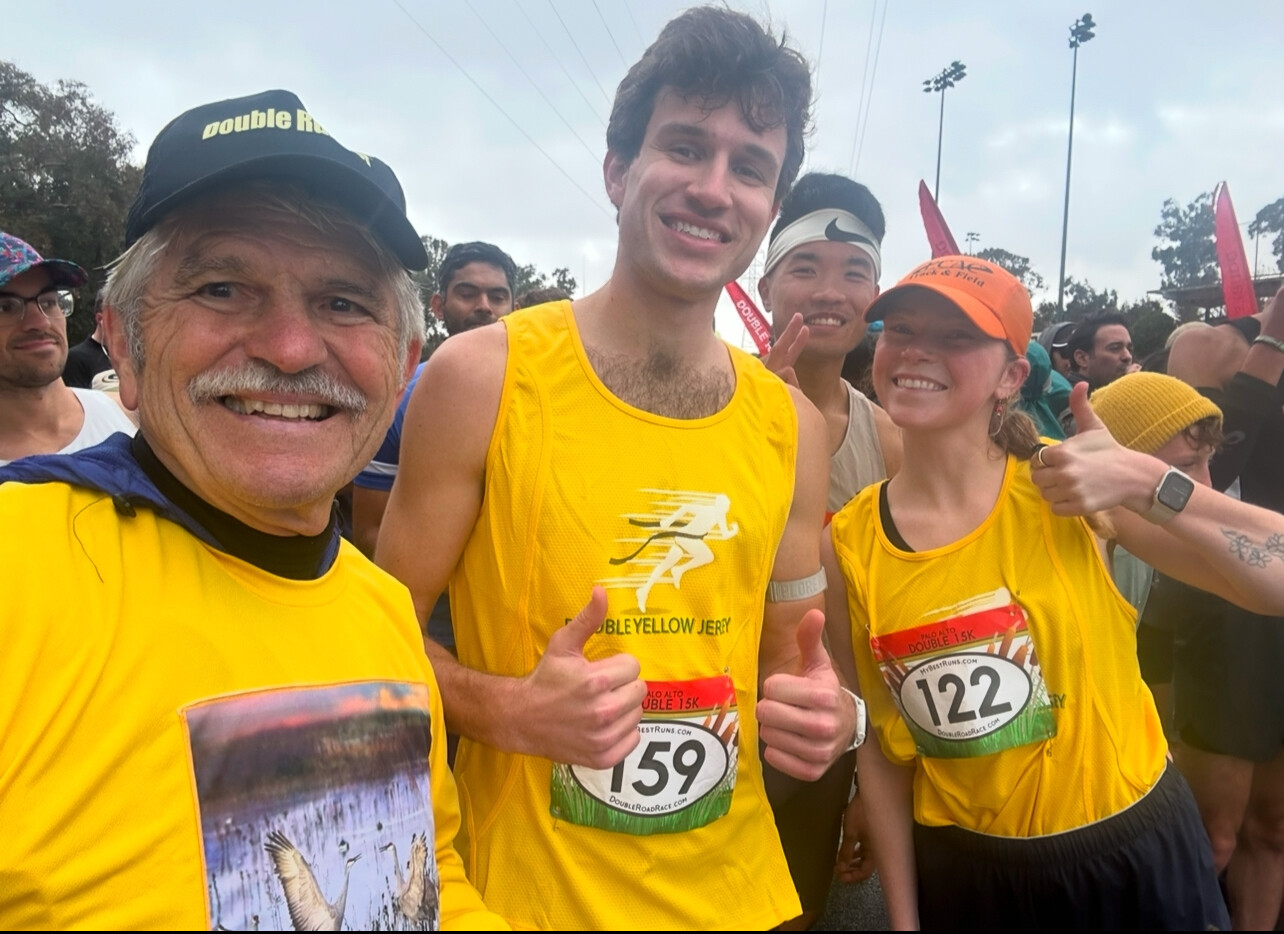
After selling Runner’s World to Rodale Press in 1984, Bob channeled his entrepreneurial spirit into founding Ujena Swimwear and Around Town Productions. In 2012, he introduced a groundbreaking new sport called Double Racing, a two-stage running event with a halftime recovery period. To promote this innovative concept, he established the Double Road Race Federation, further diversifying his contributions to the running community.
In 2014, Bob launched My Best Runs, a website dedicated to highlighting the world’s most intriguing and unique races. He also edits Running News Daily, a popular column that harkens back to his early days with Distance Running News.
Bob’s passion for running extends well beyond publishing and event organization. In 2012, to mark 50 years of running, he completed 50 races totaling 350.8 miles, achieving an average pace of 6:59 per mile. This extraordinary feat was captured in the film A Long Run.
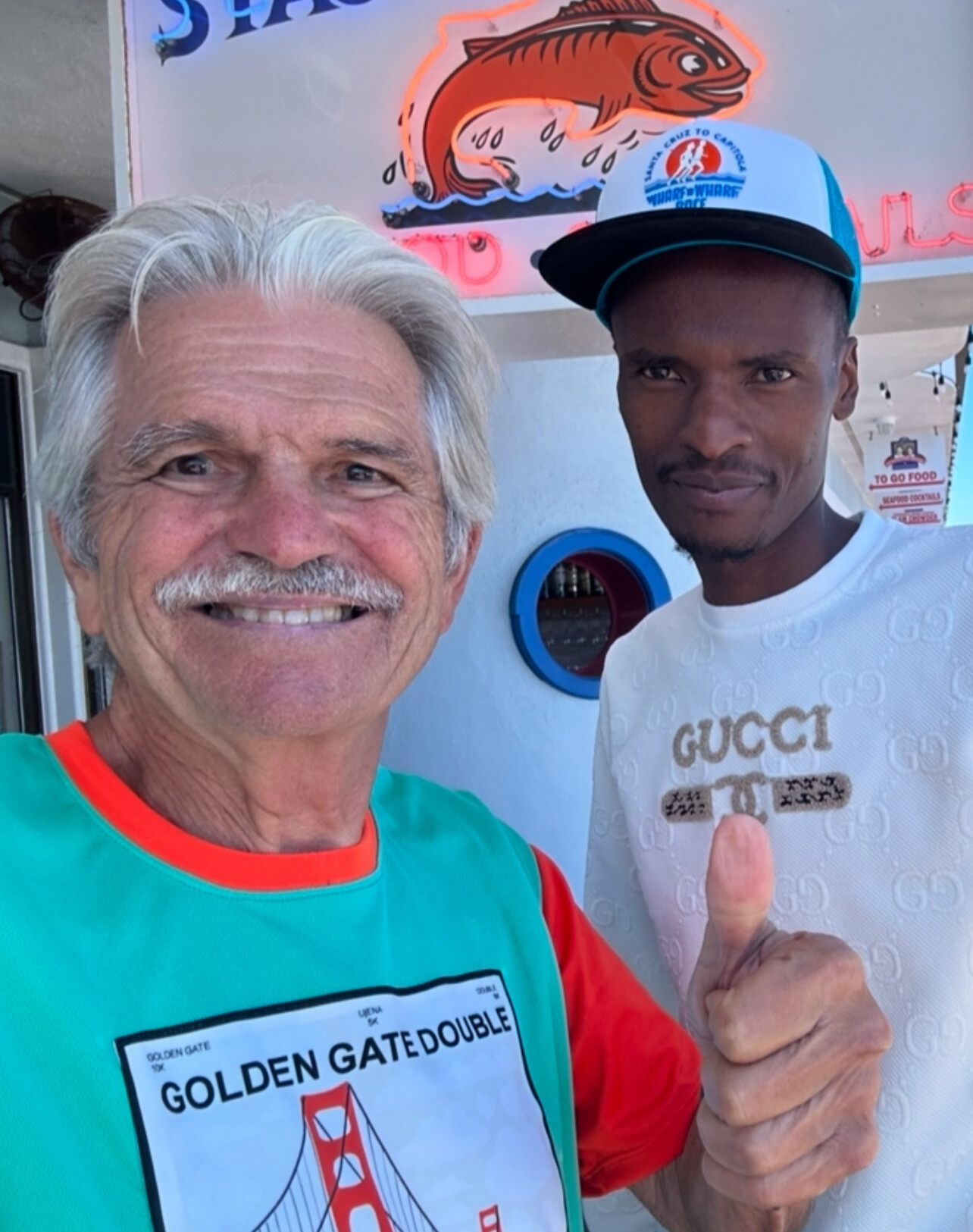
In recent years, Bob and his wife Catherine have focused on global running initiatives. Their efforts brought them to Kenya, where they produced Double Racing events and established the Kenyan Athletics Training Academy (KATA) in Thika. This facility provides a unique environment for athletes to live and train. In 2024, they expanded their vision by opening Anderson Manor in Monforte da Beira, Portugal, which also serves as the home for KATA Portugal. Both locations attract runners from around the world, offering training opportunities in inspiring environments.
As Bob celebrates his 77th birthday on December 28, 2024, his enduring dedication to running continues to inspire athletes worldwide. His lifelong contributions have left an indelible mark on the running community, fostering a global appreciation for the sport.
(12/27/2024) ⚡AMP
by Boris
'Now it is your turn' - Olympic champion Letsile Tebogo reveals how mother's last message prepared him mentally
Letsile Tebogo faced one of the most difficult moment in his life after the loss of his mother Seratiwa who was his biggest fan.
Paris Olympic 200m champion Letsile Tebogo has revealed how her mother's last message before she died made him accept the outcome.
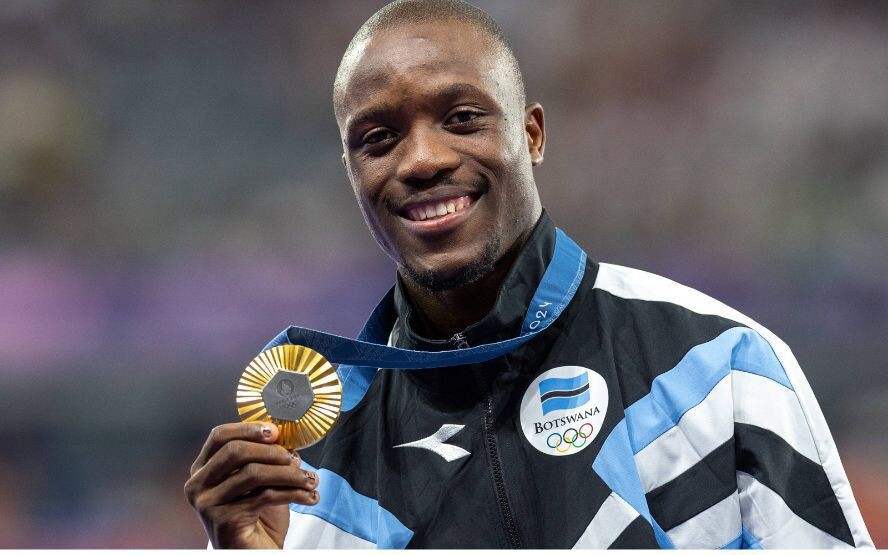
Seratiwa passed away from breast cancer in May 2024, two months before the Paris Games. Her death interrupted Tebogo's season and led him to consider quitting the sport.
The 2021 world U-20 100m champion said it was one of the toughest moments in his life to accept that his mother was no more and that meant added responsibility for the then 20-year-old.
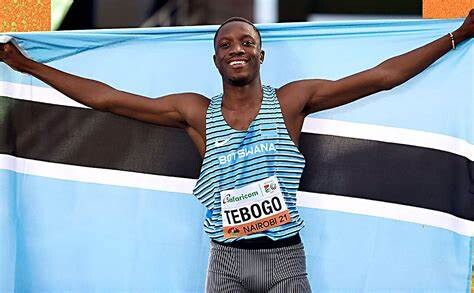
"I’m glad that when my mother saw that it was coming to an end, she told me: ‘I have tried to be strong my son, now it is your turn.’ So I think she was preparing me for what was going to happen," Tebogo told World Athletics.
Seratiwa was a huge influence on Tebogo's life and career. She advised him to switch from football to track and field, which was a move that paid off. Tebogo said that his mother was his greatest fan and that he carries her with him in every step he takes.
The 2022 200m African champion observed that he was left to take care of his little sister who is passionate about swimming. “It was not an easy journey and it was not an easy thing for me to overcome. I had to also be there for my little sister, be there for myself.
"My sister is 12. I don’t think she is going to follow in my footsteps because she is more into swimming, but she is proud of me,” he added.
In 2021, Tebogo became the first Botswana athlete to claim the 100m title at any World Championships level. He broke the 300m world record, running a time of 30.69 seconds on February 17, at altitude in Pretoria, South Africa.
(12/27/2024) ⚡AMPby Evans Ousuru
These kettlebell exercises could be the key to your next PB
Bored of your stale strength training routine? The kettlebell can be a runner’s best friend, and we have the perfect exercises to get you started. Kettlebells are a simple tool ideal for building strength where it matters most, and these exercises target your glutes, hamstrings, core and back—the same areas that take a beating from the repetitive impact of running.
Whether you’re aiming to prevent injuries or boost your speed and power, kettlebell training can deliver solid rewards in minimal time.
What makes kettlebells special? Unlike traditional strength moves, kettlebell exercises fire up multiple muscle groups at once, giving you a full-body workout that translates directly to better running performance on any terrain.
Kettlebell goblet squat

To do a kettlebell squat, hold the kettlebell close to your chest in the “goblet” position, keeping your elbows tucked.
Stand with your feet slightly wider than shoulder-width, toes pointed slightly out.
Lower your hips back and down like sitting in a chair, keeping your chest up and knees tracking over your toes.

Press through your heels to return to standing, squeezing your glutes at the top.
Kettlebell row
For a kettlebell row, place the kettlebell on the ground, hinge at your hips with a flat back, and rest one hand on a sturdy surface for support.
Grip the kettlebell with the opposite hand, keeping your shoulder away from your ear.
Pull the kettlebell toward your ribs by engaging your back, then lower it slowly with control. Keep your core tight and avoid twisting your torso.
Kettlebell swing
Stand with your feet shoulder-width apart and the kettlebell on the ground between your feet Hinge at your hips, keeping your back flat, and grab the kettlebell with both hands, squeezing your arms toward one another.
Hike the kettle back between your legs like a football snap, then thrust your hips forward to swing the kettlebell to chest height.
Let the kettlebell drop naturally, guiding it back between your legs as you hinge again—power comes from your hips, not your arms.
Kettlebell side lunge
Hold the kettlebell with both hands in front of your chest, gripping the handle securely.
Step out to the side, bending the stepping leg into a squat position while keeping the other leg straight.
Keep your chest lifted and shoulders pulled back as you lower yourself.
Push through the bent leg to return to your starting stance. This move strengthens lateral stability and mobility, key for runners navigating uneven terrain or sharp turns.
Stuck trying to figure out how heavy of a kettlebell you need? Experts suggest a weight range (for those new to kettlebell strength) of 12-16 kg (26-35 lbs) for men and 8-12 kg (18-26 lbs) for women, but everyone is unique. It’s important to adjust the size of your kettlebell so that you can maintain slow, controlled movements, focusing on form over weight or speed.
Do 10-12 repeats of each exercise and run through the circuit two or three times. As you get stronger, use heavier kettlebells or add reps.
(12/27/2024) ⚡AMPby Keeley Milne
'I like the excitement' - Decorated Dutch star Sifan Hassan reveals bold plans for 2025 after Olympic success
Marathon Olympic champion Sifan Hassan will concentrate in marathon in 2025 after a breakout year.
Paris Olympic marathon champion Sifan Hassan has revealed his excitement to fully major in marathons next year.
While she confirmed that she will combine both track and road races in 2025, She maintained that the marathon will be a priority for her.
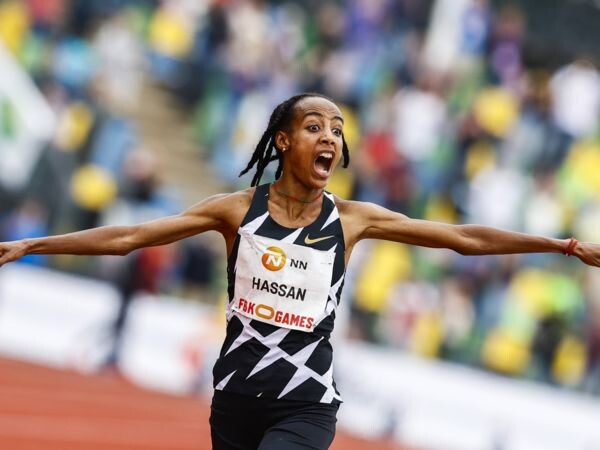
The double Paris bronze medalist in 5000m and 10000m told World Athletics: “I think I’m going to do the track and road again, because I just want to do those things, a combination of track and road close to each other. Because I am very curious. I really like it because I don’t know for sure if it is going to happen. I like the excitement."
Hassan, who grabbed the 5000m gold in the Tokyo version of the Games, said she faced a mental battle regarding her chances in the marathon until at some point during the race she contemplated quitting. The three-time Diamond League champion pursued a marathon in 2023 and won both the London and Chicago marathons the same year.
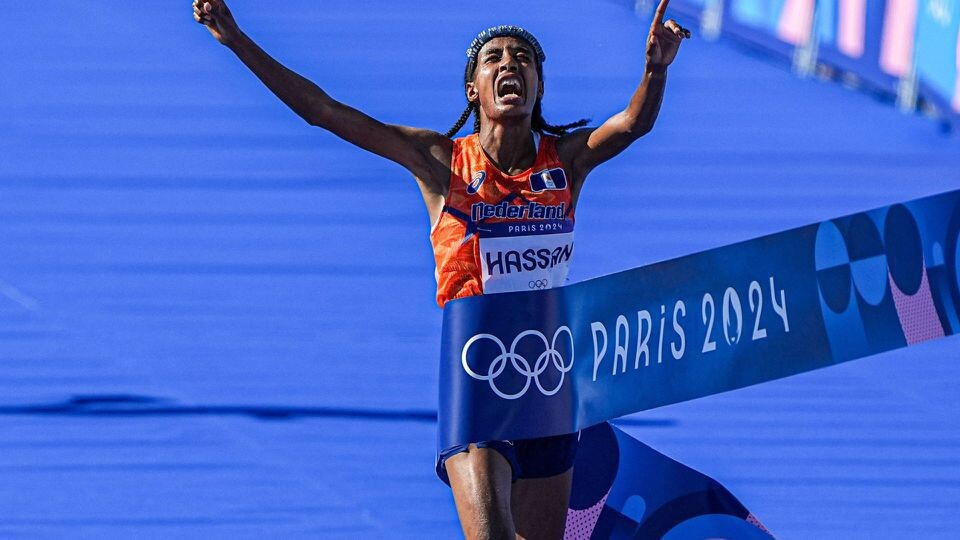
This year, she took the Tokyo marathon course as well as the gruesome Paris course. “My first three marathons were all different and for the Olympic marathon, I was really fighting myself. One side of me said: 'concentrate on the marathon', the other side said: 'better that you do the track'. I was really struggling with myself. I didn’t have confidence I was going to win after the track," she said.
A bold Hassan said she will take an unpopular decision of doing four marathons in the near future even though that has never happened to any athlete. “One time, I want to do four marathons in a year – from February to February. I want to see if it is possible.”
(12/27/2024) ⚡AMPby Evans Ousuru
'I’m trying to go and run a fast time'- Benson Kipruto eyes Tokyo Marathon title defense and record in 2025 after Olympic success
Benson Kipruto aims to defend his Tokyo Marathon title and achieve greater milestones in 2025 after winning bronze at Paris Olympic Games.
Olympic marathon bronze medallist Benson Kipruto has disclosed plans to defend his Tokyo Marathon title in 2025.
Next year’s edition of the event is scheduled for Sunday, March 2 and Kipruto is working around the clock to ensure he is ready for the challenge.
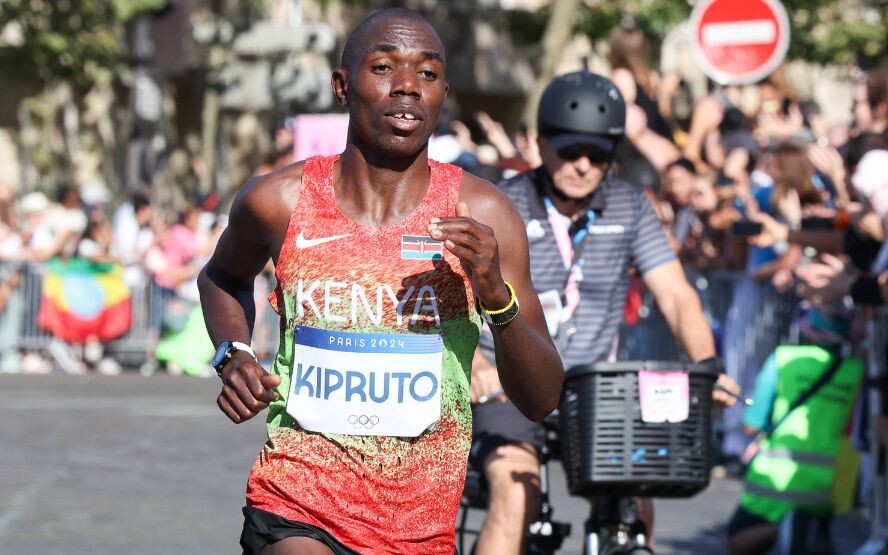
At this year’s edition of the Tokyo Marathon, Kipruto upset a strong field comprising former world marathon record holder Eliud Kipchoge among other stars to take the top prize.
Kipchoge, despite his familiarity of the event, ended up finishing distant 10th after winning the 2022 edition of the event.
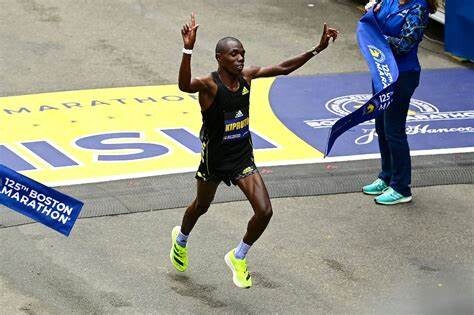
With such a confidence boost, Kipruto went to claim the bronze at the Paris Olympic Games and has not looked back since then.
The Kenyan road running sensation is not resting on his laurels as he sharpens his talons for the next assignment. He will not be enjoying the festive season like other people since he will be deep into training.
However, Kipruto revealed that if opportunity arises, he will be looking to spend more time with his family and relatives.
“I’m preparing for the marathon next year, the first marathon of the year, that is the Tokyo Marathon and I’m preparing to go and defend my title,” Kipruto said in an interview with CGTN Africa.
“I hold the course record for this year and next year I’m trying to go and run a fast time and break the course record again.
“This festive season, I’ll be in training and not celebrating that much but I will try and enjoy with my relatives and family.”
Remembering his experience at the Paris Olympic Games, Kipruto explained that it was a great experience and expressed interest in representing the country once again.
The 2022 Chicago Marathon champion revealed that he was aware of the tough course and hard worked hard in training with the intentions of properly tackling it.
“Paris was a good experience for me…it was my first time to represent my country and the course itself was tough but I knew it, and I prepared well for it,” Kipruto said.
“I prepared for the tough conditions and I knew what to expect. Despite the course being uphill and downhill, the conditions were also hot but we managed.”
(12/27/2024) ⚡AMPby Abigael Wafula
Tokyo Marathon
The Tokyo Marathon is a world-renowned annual marathon held in Tokyo, Japan. As one of the prestigious Abbott World Marathon Majors, it attracts elite and amateur runners from around the globe. The race holds World Athletics Platinum Label status, recognizing its high competitive standards, top-tier organization, and international appeal. Sponsored by Tokyo Metro, the Tokyo Marathon has grown into one...
more...Age is no barrier for Dwain Chambers
The 46-year-old sprinter explains why he still enjoys racing after being voted AW masters male athlete of 2024.
When Dwain Chambers settled into his blocks at the start of the 60m final in the M45 age group at the European Masters Championships in Poland this year, he felt as nervous as ever. At his peak, he won world and European indoor titles in 2009 and 2010 over the same distance, yet racing against fellow veteran sprinters in Poland, he was the big-name athlete whose scalp everyone wanted.
“I took it very seriously because I knew I could lose,” he says. “I was two or three metres ahead on paper but I still had to go in and prepare the same way. I knew I couldn’t slip up, as one of the other Brits would steal my glory. They were raising their level to compete with me, but I also had to raise my game.
“I was still just as nervous as always before the race. I still had to go to the toilet the same number of times before the race! It wasn’t easy.”
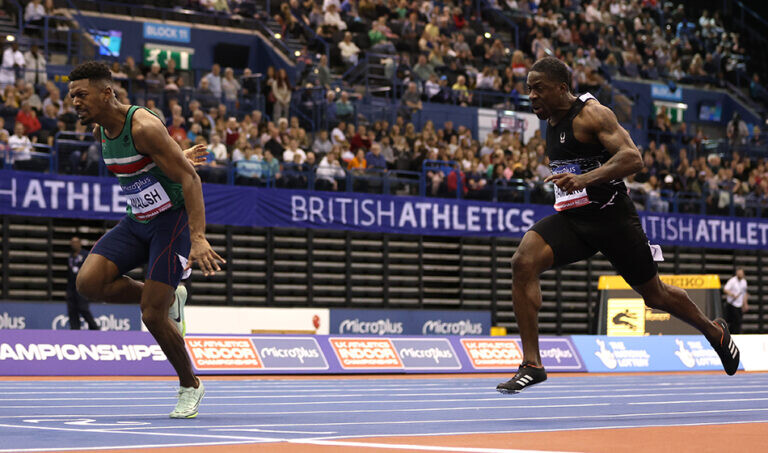
Chambers prevailed in 6.93. A few weeks earlier he had run even quicker, too, with a world indoor record for his age group of 6.81 at Lee Valley. The performances were enough to see him voted AW Readers’ Choice Male Masters Athlete of the Year.
He first shot to fame as a talented teenager in the 1990s with a couple of victories in the European Junior Championships over 100m. A rollercoaster career ensued with a much-publicised brush with the anti-doping authorities. In more recent years he has impressed onlookers with his ageless athleticism, often beating athletes half his age as he continues to streak to super-fast times in his forties.
How did he find the masters scene? “After years of big crowds as an international athlete, I thought ‘what’s it going to be like?’” he says. “I promised myself for years that I was going to do a masters event and I was overwhelmed with the support I got and also seeing all these older athletes still doing what they love.
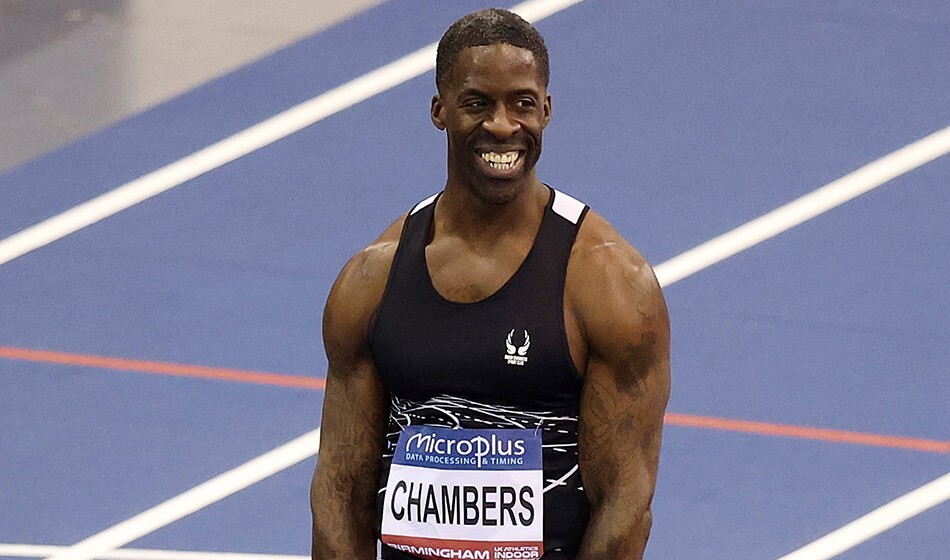
“Okay, they’re not running crazy fast times but they’re out there doing their best. They’re all having fun and enjoying it, which reminded me why I loved the sport so much as a younger athlete before it got to a point where it wasn’t so much fun for a while.”
Did he ever imagine as a young athlete that he’d one day do masters athletics? “Not at all,” he admits. “It didn’t cross my mind as a youngster. You just live in the moment. You move from race to race and if you have a short break then you have a holiday and you’re back on the ride again soon afterwards.”
Chambers believes more former elite athletes should give masters competitions a go, too. “I think masters competitions should be part of an athlete’s responsibility as it helps raise the profile of the sport and helps with longevity and keeps you going,” he says.
“It can help athletes who are close to retirement but maybe don’t know what they’re going to do during the rest of their lives. They can keep their foot in the door by doing masters athletics while figuring everything out. Once you go from being disciplined for 10-20 years to suddenly being undisciplined, it’s not a good thing. Masters allows athletes to do the sport for the pure enjoyment rather than worrying about agents and contracts and stuff like that.”
After testing positive for drugs in 2003, Chambers received a ban from the sport and was lambasted by the media. At the height of his infamy, Niels de Vos, chief executive of UK Athletics at the time, called for him to be banned from the GB team. Yet the sprinter always maintained a policy of fronting up to his mistakes and gradually, over time, began to win over fans and journalists with his affable personality. As this AW readers’ choice vote proves, the former pantomime villain of athletics is now a respected and admired figure.
Today he advises youngsters to stay on the right track and avoid drugs. It has struck a chord with athletes and parents, too, as his Dwain Chambers Performance Academy has now been going strong for several years with half a dozen coaches and a couple of admin staff helping him deliver sessions to children at Lee Valley in north London.
“We’re teaching kids life skills through sport,” he says. “None of them are guaranteed to become world, European or Commonwealth champions but we’re hoping they will become decent human beings. Once they find that they have an interest in athletics, we know we can help them through that process.”
Outside of coaching kids, Chambers offers his services to footballers and celebrities as well. “It’s cool to be able to bring athletics training into the fitness world,” he says.
In parallel with his own sprinting, he plays “Sellebrity Soccer” for charity as well. “During the first five minutes of the first game, I was absolutely destroyed as I was only ever used to running for 10 seconds or so,” he smiles. “So I keep it safe and play right back. I can’t risk twisting my ankle or anything.”
He turns 47 in April and can still mix it with some of Britain’s best sprinters as he reached the semi-final at the UK Indoor Championships earlier this year. Given this, what are the secrets of his longevity?
Eating a relatively clean diet and resting more between his harder sessions are high up on his list of priorities. “At first I still had the mindset of a 20-year-old but my body wasn’t the same as a 20-year-old’s,” Chambers explains. “So I would train hard for a few days and then it would take two or three weeks to recover.
“I can’t rest a lot between training sessions like younger athletes. I am coaching and looking after my own kids and have other responsibilities during the day which doesn’t allow me to just put my feet up.
“So I decided to work on my nutrition, which is something that I’d never worked on before earlier in my career. Those who pay attention to everything will always beat those who are only doing 85-90 per cent of the work.
“We probably have fish and chips once in a blue moon and takeaway every Friday but I don’t go beyond that. I just stay disciplined.
“I also run fast only about once every 10 days now. In between I will just do tempo runs or recovery runs. And this works for me much better than if I try to do speed, speed, speed the whole time.”
Chambers believes he can run faster in 2025 than he did in 2024 and has an ambition – albeit he admits it might simply be a deluded fantasy – to get back down to closer to the 6.42 for 60m and 9.97 for 100m that he ran a few years ago.
“There is naturally an element of me that thinks: ‘I’ve still got it’,” he says. “I sometimes ask myself if I’m the equivalent of being ‘punch drunk’!
“Yes, I ran 6.81 this year but it’s not 6.40 or 6.20. I think I can still run those times, but is it my imagination running wild or it is a reality? And that’s partly what still drives me.
“I look at what I did when I ran those times in the past and I wonder what steps I can make to get back to that point. Whether I can still run those times or not, or even get close, I’m not sure. But that’s my pursuit of happiness at the minute.”
One thing’s for sure, if he loses his ability to be competitive then he’s not sure he will continue. “I don’t know how many years I will have to go at a good level. Once that disappears I think I’ll be done. I love the thrill of racing and nervousness and everything that goes with it.”
If Chambers was the man to be shot at during the European Masters Champs this year, then the reverse will be true at the UK Indoor Championships in Birmingham in 2025. He is planning to target the event and is looking forward to giving the younger athletes a run for their money.
“I want to do the trials again this winter,” he says. “If I’m lucky and if I can find that spark again, I might get to the European Indoor Champs again!”
(12/26/2024) ⚡AMPby Jason Henderson
'It’s just going to be a movie'- Erriyon Knighton ready to spice up rivalry with Noah Lyles as he waits for right moment
Erriyon Knighton is focused on improving at his own pace, embracing future rivalries with top sprinters and promising it will be 'a movie' when the time is right.
World 200m silver medallist Erriyon Knighton is just awaiting the right time to make his rivalry with top sprinters like Noah Lyles, Kenny Bednarek and Letsile Tebogo spicy.
The 20-year-old is not under any form of pressure to deliver at the moment and in fact, he is taking his sweet time and enjoying himself.
He disclosed that speaking of the world record at this time would be unrealistic and he is just on the mission of chasing medals until the right opportunity presents itself.

In an interview with Reuters earlier this year, Knighton noted that he makes his own rules and works under his own terms, understanding that people will still want to talk and compare him with other stars.
"Until I get old ... there's still going to be comments like, 'the young phenom' or 'I did this at this age'," Knighton told Reuters.
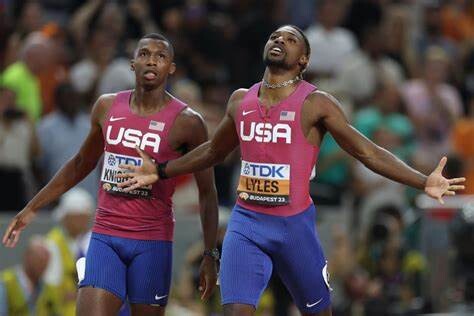
"They were expecting me to break the world record when I was like 19, 20 years old. But in reality it's just not like that."
Speaking of Noah Lyles, Knighton insisted that people should stop with the comparisons since athletes are very different.
The former world 200m bronze medallist insisted that when the right time comes, he will achieve what he has always been working hard for but now they should give him time.
"He's doing his thing right now. Everybody has their time and place in a rivalry. And I feel like just going on in the years once I get older, you know, it's just going to be a movie every time we step on the track,” Knighton asserted.
"I'm just not at the point where I'm like at my best, but I'm getting better," said Knighton. "When I reach my best, then we can talk about the world records."
Knighton has faced a few setbacks including being suspended by the Athletics Integrity Unit before being cleared to compete at the US Olympic trials where he finished third and secured a slot to the Paris Olympic Games.
In Paris, the American youngster narrowly missed out on the podium bracket with his fourth-place finish. Letsile Tebogo won the race as Kenny Bednarek and Noah Lyles came in second and third respectively.
(12/26/2024) ⚡AMPby Abigael Wafula
Ruth Chepngetich leads the female participation in the San Silvestre Vallecana
The Nationale-Nederlanden San Silvestre Vallecana is once again dreaming of breaking records. Like the historic 2018, the end-of-year classic features a superlative squad, with great athletes who arrive in Vallecas with ambition and in excellent physical condition, the perfect mix that can lead athletics fans to experience a day for the history books on December 31.
In 2018, Kenyan Brigid Kosgei became the first athlete to break the 30-minute barrier at the Vallecana. Since then, the mark obtained remains unchanged as the top of the Nationale-Nederlanden San Silvestre Vallecana. But this year, an old acquaintance of the race, Kenyan Ruth Chepngetich, has decided to put the finishing touch to a 2024 to remember, and leave a mark of her quality on the streets of Madrid.
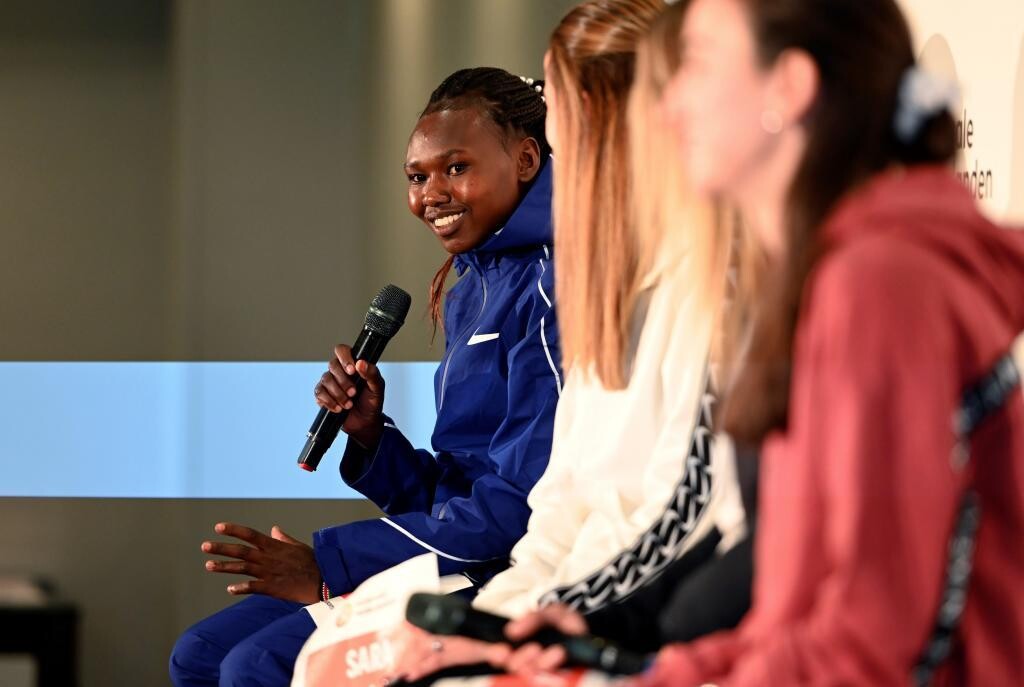
At the Chicago Marathon, Ruth Chepngetich lowered the world marathon record by almost 2 minutes (2:09:56), in a feat that left the athletics world speechless. After this heroic feat, Chepngetich arrives as the great female star of this Nationale-Nederlanden San Silvestre Vallecana, with the desire to achieve the victory that eluded her in her previous presence in the event (in 2020, when she was defeated by Yalemzerf Yehualaw) and challenge Kosgei's record.
In addition to her stratospheric marathon record, Chepngetich has a golden record with a world marathon title, and a triple of victories in the emblematic Chicago Marathon, as well as a best time in 10 kilometers on the road of 30:29, which she hopes to blow up in the Vallecana.

Alongside her, Ethiopian Adawork Aberta, from the always competitive NN Running Team, will seek to follow in the footsteps of other compatriots and team members who have triumphed in Vallecana, such as Yalemzerf Yehualaw herself. The 28-year-old athlete's best result was a seventh place in the Seville Marathon with 2:23:39 and has a personal best in 10K of 32:27. Meanwhile, the Mexican of Kenyan origin, Risper Besabwa, sixth in the 2023 Pan American Games in the marathon, will seek her personal best in 10K, which she has with 31:43, achieved in New Orleans (United States).
(12/26/2024) ⚡AMPby As.com
Saint Sylvester Road Race
The Saint Silvester Road Race (Portuguese: Corrida Internacional de São Silvestre) is a long-distance running event, the oldest and most prestigious street race in Brazil. Regarded as the main international event in Latin American athletics, the Brazilian competition is held yearly in the city of São Paulo on December 31. São Paulo's race was originally known as a "marathon", although...
more...Festive fuel: transform holiday treats into long-run power
Embrace the season's flavors in these delicious and simple pre- or post-run snacks.
The holidays bring an abundance of delicious foods, many of which can double as excellent fuel for your winter runs. With a bit of creativity, you can turn seasonal staples into energy-packed snacks that are both festive and functional. Here are some fun ways to keep your energy levels up and your taste buds happy while making the most of holiday flavors.
Leftover love: re-imagine your holiday table
Stuffing muffins: Got extra stuffing from your big feast? Transform it into portable muffins. Mix your leftover stuffing with an egg or two and a bit of shredded cheese, then bake in a muffin tin until firm. These savory bites provide a mix of carbs and fats to fuel your next run. Bonus: the comforting flavors of sage and thyme might just boost your mood during those cold miles.

Mashed potato pancakes: Whip your leftover mashed potatoes into energy-packed patties. Add an egg and a tablespoon of flour, form into small cakes, and pan-fry in some olive oil until golden. These pancakes offer slow-digesting carbs that’ll keep you steady on long runs.
Festive fueling recipes
Cranberry Ginger Energy Bites
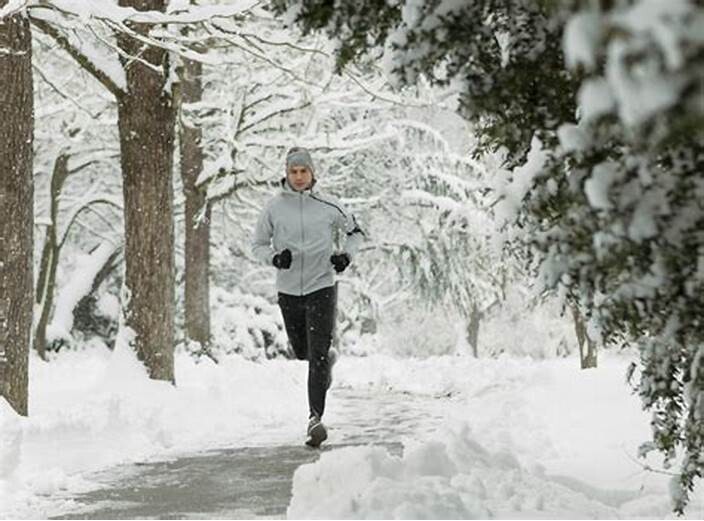
Ingredients:1 cup rolled oats1/2 cup almond butter1/4 cup honey or maple syrup1/4 cup dried cranberries1/4 teaspoon ground ginger
Directions: Combine all ingredients in a bowl, roll into bite-sized balls, and refrigerate until firm.
Why it works: These no-bake bites are quick to make and easy to pack. The oats provide lasting energy, while the cranberries and ginger add a festive zing, along with antioxidants.
Peppermint Cocoa Recovery Smoothie
Ingredients:1 frozen banana1 cup unsweetened almond milk1 tablespoon cocoa powder1/4 teaspoon peppermint extractA handful of spinach (optional)
Directions: Blend all ingredients until smooth, and enjoy it chilled.
Why it works: This smoothie delivers quick-digesting carbs from the banana and a touch of protein, while the peppermint flavor keeps it festive and refreshing post-run.
(12/26/2024) ⚡AMP
by Keeley Milne
'It's a bundle of joy'- Great Britain's fastest man Zharnel Hughes shares his dream for life after track
The world 100m bronze medalist has revealed what he would love to venture in after hanging his spikes.
Great Britain’s fastest man Zharnel Hughes has revealed what he would venture into one he hangs up his spikes.
The reigning world 100m bronze medalist pointed out that he grew interest in the activity while in high school since his family had a friend who worked as a pilot and he would accompany him there more often.
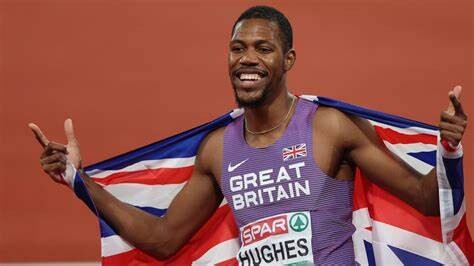
At the age of 21, he enrolled for a piloting class and he was already way ahead of the other students since he had learnt a lot of the basics on his frequent visits to the airport and only needed some notes to polish his skills.
“I started in high school, my friend’s family were pilot’s so we always used to go to the airport together and I always wanted to fly with him. As soon as I turned 21 I told my mum I was going to make the move to sign myself up for flight school. I got accepted and started,” Zharnel Hughes said in an interview with Athletics Weekly.
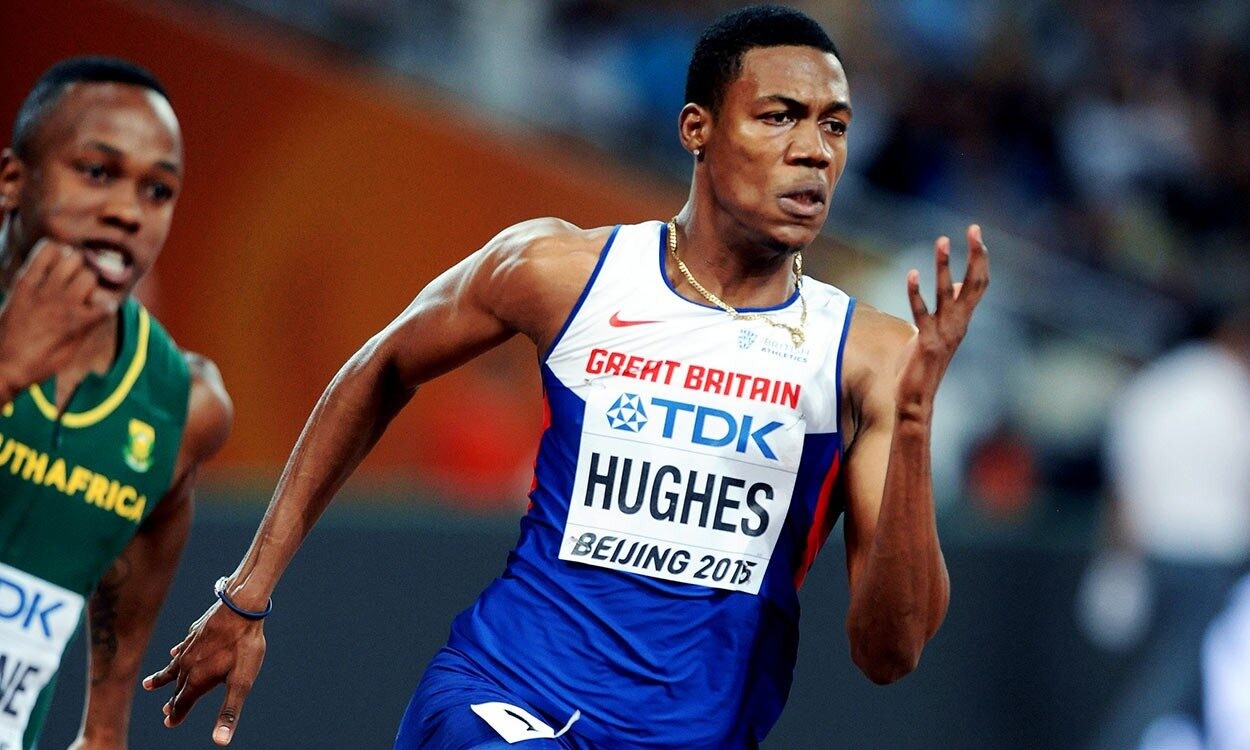
“Because of my simulator, which I had at home, I was much more advanced than some of the students in the classroom because I had already learned so much, I just needed the books.”
The reigning Olympic 4x100m bronze medallist further noted that after hanging his spikes, he would definitely venture into piloting since it gives him some form of relaxation and joy out of this world.
He added that after his track career, he wants to explore aviation and get to travel round the world with his friends and family.
“It’s a different realm of relaxation for me, it’s a bundle of joy. Once I hang up my spikes I would definitely love to continue it, if it’s not commercial flying then I would definitely like to do private flying,” Zharnel Hughes said.
“I would love to just hop on a plane with family or friends and go flying somewhere. That’s the lifestyle I want to have after I’m finished track and field because aviation never stops. I’m a bit of a geek when it comes to aviation, but it’s just passion.”
(12/23/2024) ⚡AMPby Abigael Wafula
Build strength and confidence by mastering the progression run
Progression runs are a straightforward yet powerful way to boost race-day performance. Unlike steady-state runs, they begin at an easy, comfortable pace and gradually pick up speed. This gradual buildup trains your body to finish strong, improving mental resilience, building endurance and preparing you for the challenges of race-day pacing.
Renowned coach and author Greg McMillan explains that progression runs are a fun way to boost fitness without any lasting fatigue. “And, the benefits are the same no matter if you’re a 2:15 or a 4:15 marathoner,” he adds.
Why progression runs work
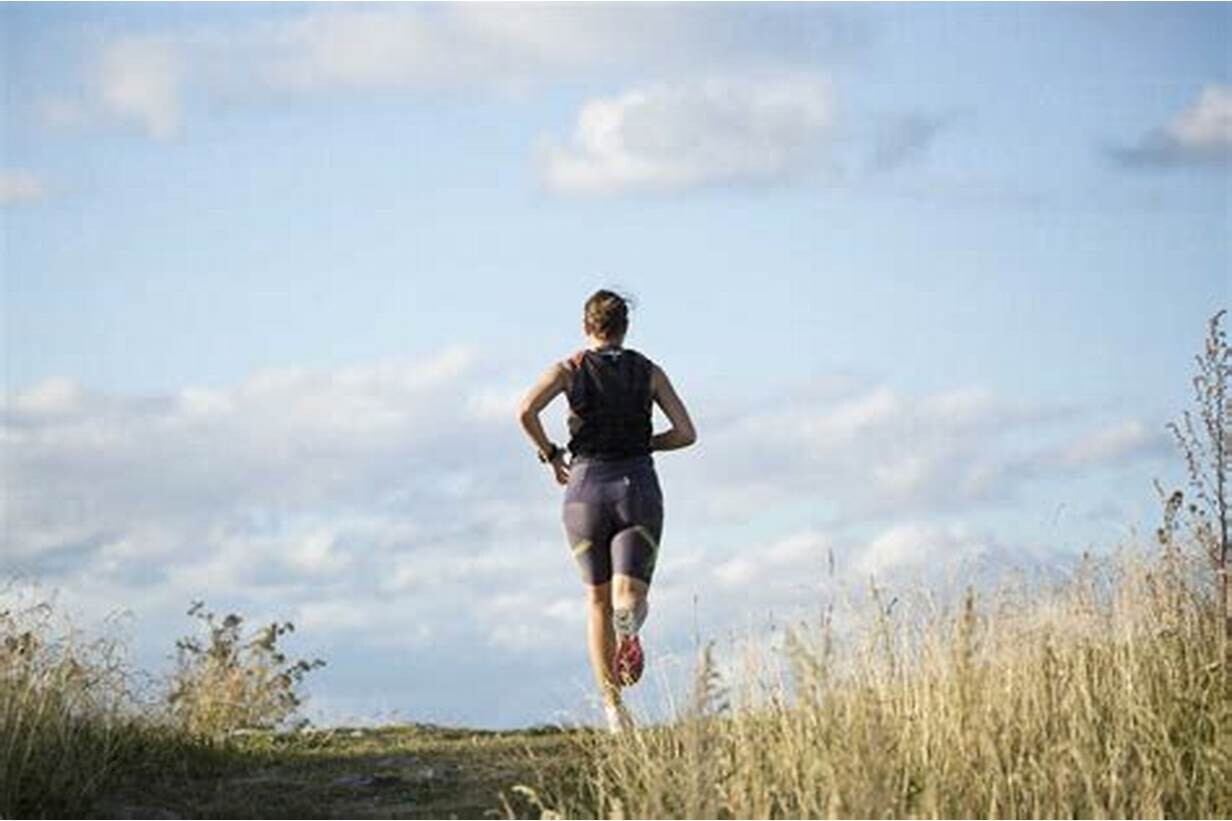
Think of a progression run as a workout that keeps your body guessing. Starting slow warms up your muscles and prevents early fatigue, while the gradual increase in pace trains you to handle discomfort and fatigue later in the run. This approach helps improve your aerobic capacity, develop speed endurance and sharpen your mental focus. “Progression runs allow you to insert fast running into your training runs (feeding your need for speed) but in a way from which you can easily recover,” McMillan explains.
For runners hoping to set a PB, progression runs also mimic a negative-split strategy—starting slower and finishing faster—a proven way to perform better on race day.

How to structure your progression run workout
A good progression run has three parts: warm-up, build-up and strong finish. Begin with an easy, conversational pace to loosen up. As the run progresses, pick up the intensity in controlled increments. The goal isn’t to sprint at the end, but rather finish feeling strong and accomplished.
Get started with these workouts
Beginner-friendly progression
First segment: Warm up with 10 minutes of easy running. For these workouts, the warmup doubles as the first segment of the three-part workout.
Second segment: Run 10 minutes at a steady pace (slightly faster than warmup).
Third segment: Run 10 minutes at your 10K race pace.
Cool down with 5-10 minutes of easy running.
Advanced progression for race-day preparation
First segment: Warm up with 3-5K at an easy pace.
Build: Run 5K at marathon pace, then 3K at half-marathon pace.
Finish: Run 2K at 10K race pace.
Cool down with 5-10 minutes of easy running.
Incorporate one of these sessions into your routine every week or two, and make sure to follow it with an easy running or rest day.
(12/23/2024) ⚡AMPby Keeley Milne
Kiplimo and Aregawi, stellar duel in the Nationale-Nederlanden San Silvestre Vallecana
Jacob Kiplimo, Olympic and world bronze medalist in 10,000 meters, is reunited six years later with the San Silvestre Vallecana, a race in which he triumphed and set a dizzying record that still stands (26:41) in 2018.
Opposite, Aregawi, Olympic silver medalist in 10,000 meters at the Paris Olympic Games and second in the all-time ranking in 10K, will challenge Kiplimo to revalidate last year's triumph (with a time of 27:16) in the main duel of the race to be held on December 31.
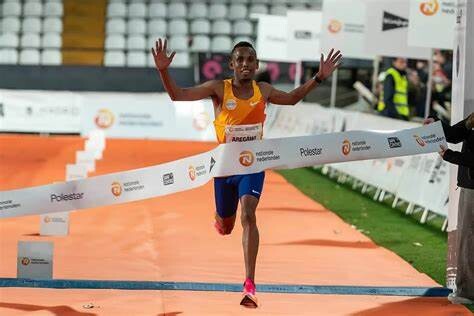
Berihu Aregawi will defend the throne with the credit provided by the silver won at the Paris Games this summer, his double runner-up in the world in cross-country, and his mark in the 10K on the road, the second best in history after Rhonex Kipruto -26:33, achieved in Laredo in 2023.
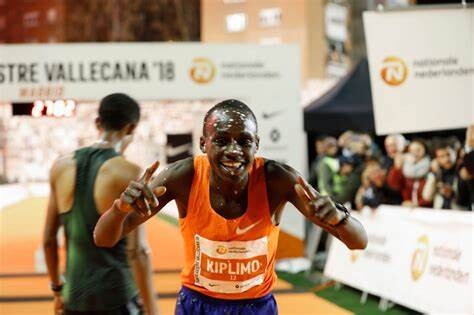
In addition, the Spaniards will have a lot to say in the race, with Adel Mechaal, the Spaniard who has run the fastest in history in a 10K, Yago Rojo, Olympian in Paris 2024 in marathon and national silver in 10K in 2023, or Jesús Ramos, double national champion in 10K in 2022 and 2023, in the lead.
(12/23/2024) ⚡AMPby Europa Press
Saint Sylvester Road Race
The Saint Silvester Road Race (Portuguese: Corrida Internacional de São Silvestre) is a long-distance running event, the oldest and most prestigious street race in Brazil. Regarded as the main international event in Latin American athletics, the Brazilian competition is held yearly in the city of São Paulo on December 31. São Paulo's race was originally known as a "marathon", although...
more...Usain Bolt reveals meal plan that helped him smash 100m world record at 2008 Beijing Olympics
Usain Bolt broke world records in all his three specialties but the 2008 Olympics diet change was the beginning of his dominance on track.
Three-time Olympic 100m champion Usain Bolt has revealed how a change in diet at the 2008 Olympics in Beijing played a crucial role in him setting a world record in his specialty.
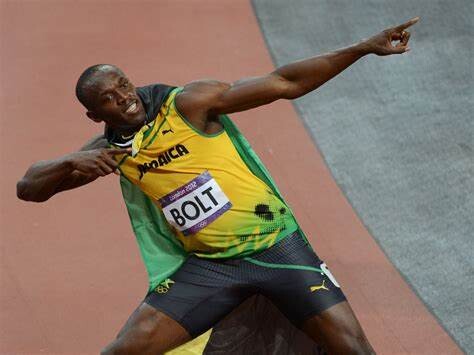
The legendry Jamaican sprinter who also managed three Olympic 200m gold titles, was fueled by chicken nuggets because he thought Chinese food tasted odd.
In his autobiography, Faster than Lightning, Bolt wrote: “At first I ate a box of 20 for lunch, then another for dinner. The next day I had two boxes for breakfast, one for lunch and then another couple in the evening. I even grabbed some fries and an apple pie to go with it,” the 11-time world champion told TalkSport.

Bolt estimated he ate 1,000 of McDonald’s chicken nuggets during the Beijing Olympics. It was an even more impressive feat considering he did it with his shoelaces untied! Bolt finished so clear of his competitors that he pumped his chest while crossing the finishing line and had he not done that, a better final time would have been recorded.
The 38-year-old made history a year later when he set another record in the men’s 100m with a time of 9.58 seconds at the 2009 World Championships. He also won two 4x100m relay golds and holds the world record in all three disciplines.
Bolt retired from athletics after the 2017 World Championships, where he won bronze in his final solo 100m race but then pulled up in his last ever contest in the 4x100m relay final.
After refusing a wheelchair, he hobbled across the finish line alongside his teammates - but, despite his legendary career ending in heartbreak, Bolt will go down as one of the track's greatest ever competitors.
(12/23/2024) ⚡AMPby Evans Ousuru
This Plant-Based Protein is a Great Addition to Any Runner's Diet
Should shake up your diet with this plant protein? A sports dietitian gives us the scoop.
As a runner, chances are you’re concerned about getting enough protein—and that’s a good thing, since it is a vital macronutrient for muscle building and recovery, not to mention maintaining strong bones and connective tissues.
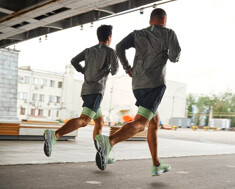
As the popularity of plant-based eating continues to rise, protein sources from the plant kingdom have flooded the food market. From hemp to soy to rice, there are almost too many to keep track of for protein-hungry athletes.
There’s one source of vegan protein, however, that seems to have taken the lion’s share of popularity: pea protein. Sure enough, it’s making its way inside a ton of products including protein powders, dairy-free milks, ice cream and yogurt, cheese puffs, energy bars, crackers, and veggie burgers as companies look to ramp up protein numbers to meet consumer demand for the macronutrient.
If you're curious about this pea protein benefits and why it’s showing up everywhere, we’ve put together everything you need to know. Read on to learn more about pea protein and if you should blend more of it in your diet for a performance and health edge.
What is pea protein, exactly?
A bag of frozen green peas contains a surprising amount of protein, but it is even higher in split yellow peas, which is the core ingredient most often used to make pea protein powder. A 1-cup serving of cooked split peas delivers about 16 grams of plant-based protein.
The dried peas are ground into flour after which it is further processed so the protein can be separated from the starches. Isolates go through an additional filtration step, creating a product with roughly 90 percent of protein by weight, meaning fewer carbs. Depending on the brand, a pea protein powder can have 15 to 25 grams of protein in a serving. Companies have worked out ways to make sure it has a fairly neutral flavor profile and less grittiness. That makes pea protein an attractive choice for companies that want to hike up the protein levels in
What are the pros and cons of pea protein?
Yes, you can build bigger, stronger muscles with pea protein. A study published in the Journal of the International Society of Sports Nutrition showed a significantly great effect on muscle thickness in those who consumed pea protein vs. whey protein or a placebo. (There were no notable differences in strength and muscle size between the pea and whey groups.)
Another investigation discovered that people who consumed the same amount of whey or pea protein during a two-month high-intensity training program benefited equally concerning improvements in body composition, muscle thickness and strength, and overall performance.
According to Marni Sumbal, M.S., R.D., author of Essential Sports Nutrition, these outcomes make sense when you consider that tests show pea protein has high essential amino acid content as a percentage of its total protein. In contrast to non-essential amino acids that can be produced within the body, essential amino acids are the ones you must get from your diet daily. FYI, amino acids are the building blocks of muscle protein, cells and connective tissues.
“This includes significant amounts of leucine, an essential amino acid that plays a critical role in repairing and
One concern is that it’s not quite a complete protein, since Sumbal says that it is low in the amino acids methionine and cysteine. But she stresses that assuming you eat a varied diet with other foods that provide these amino acids (such as chicken, turkey, yogurt, cheese, eggs, sunflower seeds, and legumes), it is not necessary to consume complete proteins at each meal. Sumbal also points out that many protein powder brands will blend pea protein with other plant-based options, like brown rice, to create a complete protein with an optimal amino acid profile.
We still need to see what impact consuming pea protein could have on muscle repair, muscle-building, and performance metrics in endurance athletes, since most of the research out there has studied its impact on resistance training. But since runners typically have higher protein requirements than sedentary individuals, pea protein can help meet daily needs.
Just keep in mind that pea protein does not provide the levels of fiber, vitamins, minerals, and antioxidants that you would get from whole peas, according to Sumbal. However, pea protein powders you buy often do contain iron—up to 30 percent of the daily value of this important
If you’re going more plant-based and concerned about your protein intake to support training needs, you can look for the types of packaged foods you normally consume that are beefed up with pea protein. Pea-based milk can have up to 8 grams of protein per 1-cup serving (compared to 1 gram of protein in almond milk), while an energy bar made with pea protein can have more than 10 grams of protein. You can even try using brands of oatmeal that include pea protein to add a little more of this macro to your daybreak meal.
Pea protein powder, which is now available in most supplement aisles, is versatile enough that it can be used to boost protein numbers in more than your postrun smoothies. Stir it into oatmeal or yogurt or use it to replace some of the flour in pancake and muffin recipes. Plain flavored versions can also be blended into dips.
The bottom line
Pea protein powder is a high-quality protein that is an easy and effective way to boost your protein intake. Just remember that you should ideally consume protein-enriched packaged foods and protein powders as a small part of a whole-foods based balanced diet. Think of it as a little extra boost to your day.
(12/22/2024) ⚡AMPSinger Charles Costa Needed a Reset, So He Ran the Entire Pacific Crest Trail
Charles Costa spent three months running along the Pacific Crest Trail this summer and fall as an act of holistic rejuvenation.
The 39-year-old from London, England, set out with a bold goal of averaging 90 marathons in 90 days as a means to help reset his life-both to revive his stalled music career and to find a more balanced state of mind-but the multi-genre electronic British folk artist with 1 million streams and more than 120,000 monthly Spotify listeners says it turned out to be so much more than that.
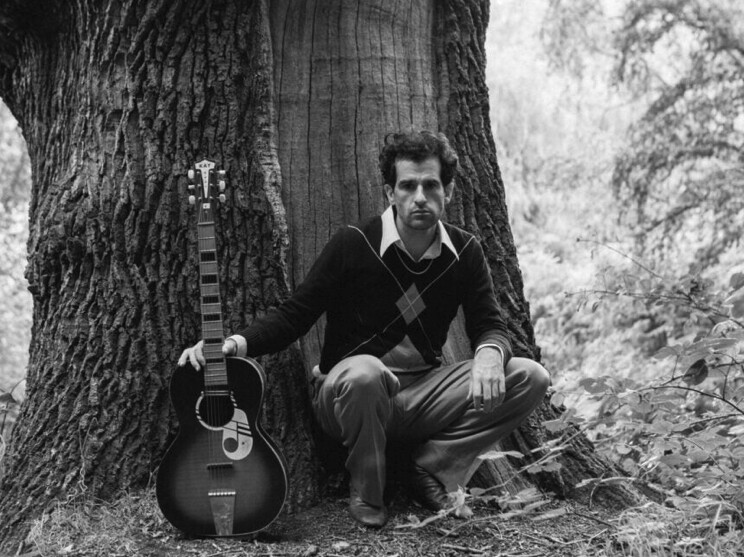
Because of lingering physical and psychological challenges from a brain injury suffered in a catastrophic skiing accident in Austria in 2010, Costa found himself in a delicate position that forced him at times to pause his music career while managing his mental health. Until he found trail running, he routinely battled a variety of mental, emotional and logistical ailments, ranging from uncontrollable anxiety to comprehensive darkness.
After averaging close to 30 challenging miles of running on the PCT per day starting on July 20, Costa admitted he was ready to finish the route, get off the trail, and get back to living a more stabilized
Recovering a Sense of Charles Costa
After the ski accident, Costa had been through numerous types of therapy and was taking what he characterized as "mind-monitoring, mind-maintaining drugs" that wound up consuming his life. In his long rehabilitative process, he eventually discovered that running-and specifically ultra-distance trail running-offered more of a physical, mental, and emotional panacea from lingering pain and mental discontinuity than anything else, and it also gave him a space to process what was going on in his life. It allowed him to get away from it all while being more connected to himself.
Costa said the more he immersed himself in running, the more he wanted to do something special to reinvigorate his life, relaunch his music career while also giving back. He's run numerous trail races in Europe in recent years, including the Montreux Trail Festival 70K last summer and the Swiss Canyon Trail 81K in Switzerland in June. (He placed 54th out of 225 runners in 11 hours, 23 minutes and 7 seconds.) He's also run the 813-mile length of Great Britain from the northern tip of Scotland down to the southwestern tip of England.
Seeking to challenge himself on a long and very difficult task that he hoped would be a transformative life experience, he settled on running the length of the PCT- a three-month, 2,650-mile trail running journey with 489,000 feet of elevation change. But he hasn't been doing it just for himself. Along the way, he's been raising money (about $170,000 so far) and stirring up attention for The Jed Foundation, a nonprofit that protects emotional health and prevents suicide for our nation's teens and young adults, and James' Place, a UK-based charity that provides free therapy and is dedicated to suicide prevention for men.
At the completion of the route, which has taken him from the U.S.-Canadian border and through parts of Washington, Oregon, and California, the British singer-songwriter officially released his first new song in several years and the first under his own name. (He originally performed and recorded under the moniker of "King Charles," a false front of a stage persona that he never really liked and that also contributed to his inability to fully express himself the way he wanted.)
The song is called "Nothing at the Most" and will be included on
Costa, who plays piano, guitar, and cello, has found his run to be a curing activity that has helped untangle his heart and mind and put him back in position to work as a professional musician.
"One thing I love about running is the rhythm of it," he said. "It's the effect that rhythm has on your mind. Days like I'm doing at the moment, it's dawn to dusk. It's up to 12 hours of just pounding the ground. And there are so many different rhythms that you get into. And I think once you're in a rhythm, your mind gets into a different place. You start thinking less. You let more in, especially when you're in beautiful places. You let more in in terms of inspiration. So, I find running very inspiring, especially in the wilderness and in some of these incredibly beautiful places."
The song "Nothing at the Most" is part of a collection of songs filled with the sounds and lyrics he says are meant to represent his journey between longing and lament. It's an intimate, cello-infused chamber-pop ballad with his soulful voice. Costa recorded several songs in the spring with producer Jesse Quin at
Enduring the Trail
As he was nearing the end of the route last week, Costa said his body was tired and a bit broken down but his soul felt re-energized. While he's remained injury-free, he's battled fatigue, blisters, muscle strains, all sorts of weather conditions, and insomnia-all common maladies to multi-day running adventures. He's worn through several pairs of On and La Sportiva trail running shoes and has relied heavily on his lightweight trekking poles, as well as his small but diligent crew that's managed his meals, gear, logistics and more.
Costa says he's listened to a lot of music out on the trail and has occasionally sang out loud to help the miles go by, but he's also made it a point to soak in the peaceful aura of the wilderness. He says it's been a devilishly hard endeavor and is amazed how "there isn't a single flat section" in the entire route.
"I'm holding it together. My muscles and limbs are all still working as they should, but I guess what starts falling apart is the mind," Costa said. "Even though I've been looking forward to the last 20 days and the last 10
(12/22/2024) ⚡AMPHow to Clean, Waterproof, and Care for Your Technical Apparel
it’s time to ensure your expensive gear performs like newHave you ever bundled yourself up in the early winter, trudged outside to shovel your walk or clear off your car from the first storm of the season, and found yourself soaking wet? Your waterproof-breathable shells, sleeping bags, gloves, boots, insulation, and soft shells all need regular cleaning and maintenance to keep protecting you from cold, wet conditions. Retreating your gear may sound intimidating, but it’s actually really easy to do and will extend the life of your expensive equipment. Let me walk you through the process of maintaining your gear, item by item.How to Clean and Re-Waterproof Technical Shells
Think of your rain jacket or ski shell like a sandwich. The face fabric, or the outermost layer, is like the bread. It’s coated with a durable water repellent (DWR) treatment that helps bead water and stop it from penetrating the outer layer. The waterproof-breathable layer is the good stuff: the veggies, meats, and condiments in the middle.

The waterproof-breathable membrane features tiny pores that keep water out and let your sweat evaporate from within at the same time, keeping you dry. The DWR and membrane work together to form an effective barrier against the elements, so long as you don’t let them wear out. Dirt, oil, smoke, and other contaminants can clog the pores and prevent the material from breathing. Overtime, the DWR coatings on those face fabrics can wear off. When they do, precipitation and sweat will saturate the fabric.Soft shells—wind-and water-resistant garments that go without the aid of a membrane—rely entirely on that DWR to protect you from precipitation. Allowing it to wear off, or become compromised by dirt, smoke, sweat or other contaminants will eliminate a soft shell’s ability to shed weather.
You should be cleaning and reapplying DWR to your technical shells regularly.
“The best rule of thumb is, if your jacket or item looks dirty or is no longer repelling water, clean it,” explains Heidi Dale Allen, the vice president of marketing for Nikwax, which makes a variety of detergents and treatments for all varieties of outdoor gear. “If after cleaning, the item is still not repelling water, it is time to re-waterproof.”
Allen says you can also test your technical shells for function. Simply run them under a tap, and if the water soaks into the material rather than beading up and running off, then it’s time to clean and take care of them. You may also notice a lack of water beading while wearing your gear outdoors.The first step is to take note of any item’s unique care instructions. The care label sewn into any piece of clothing will tell you if it needs to be be hand or machine washed, what temperature water to use, and if you should hang or tumble dry it. Depending on the fabrics and technologies used in each garment, the instructions will vay—even for articles made by a single brand.
Should I Be Afraid of Damaging My Garments in the Laundry?
“If you follow the care instructions from the brand and use the proper types of cleaners and waterproofers, then you absolutely will not ruin it,” reassures Allen.
But she does caution that you can only reapply DWR to clean shells, saying, “You wouldn’t wax a dirty car, so do not try to waterproof a dirty piece of gear.”
Once you’ve assessed each item’s care instructions, you can then wash them using a detergent designed specifically for technical apparel.Don’t use a regular household detergent. These can leave behind residues that attract moisture and clog porous membranes, ruining the item’s ability to keep you dry. Allen recommends Nikwax Tech Wash. I’ve been using this detergent for years; I can tell you it works. Tech Wash does not contain UV brighteners, so you can safely apply it to hunting gear without turning yourself into something animals will perceive as an illuminated billboard.
Once clean, you can choose to reapply a DWR coating. Allen says to do this if the item has lost the ability to bead water, or once every three to five wash cycles.
Nikwax uses a DWR that’s free from harmful PFAs. Because it’s water-based, it needs to be applied while the garment is wet. If machine washing, simply add a treatment like Nikwax TX.Direct Wash-In to the detergent dispenser, and start a new cycle. If you’re hand washing, hang up or spread out the still-wet item, and evenly coat it in a spray-on waterproof treatment like Nikwax TX.Direct Spray-On. Then hang or machine dry according to the care instructions. Unlike older treatments that use PFAs, these detergents don’t require heat to activateHow To Clean And Re-Waterproof Down Insulation And Sleeping Bags
The reason so many outdoorspeople love down is for its ability to create a ton of heat-trapping loft while being light and efficient to pack. Sweat, body oils, smoke, and dirt can cling to down clusters, reducing that loft. Today, most down insulation is treated with a DWR to enable it to dry faster. DWR increases the insulation’s reliability and safety in extreme conditions, because wet down won’t loft. But DWR can wear off down just like it does on a shell fabric.“We like to say that cleaning and waterproofing at least once a season is a best practice,” says Allen.
Caring for down insulation is similar to maintaining a technical shell, but you need to use a detergent that won’t strip away down’s natural oils. I use Nikwax Down Wash Direct for an initial wash cycle. Then, I’ll reapply DWR to both the down and its shell fabric using Down Proof. Just add Down Proof to the detergent dispenser for the second cycle.
Note that you shouldn’t wash down items in a top-loading machine fitted with an agitator. The central column can tear the fragile face fabrics used on ultralight down items and can even break apart the down clusters themselves. If you have one, consult its instructions to see if the agitator can be removed, or plan on visiting a laundromat.
The tricky thing with down isn’t washing or treating it, it’s drying. Down clumps when soaked, becoming time consuming to fully dry (which you absolutely must do before storing it). Any clumps need be fully broken up to evenly distribute the down.
Consult the care label before proceeding, but most down garments and bags can be tumble driedHow to Clean and Re-Waterproof Gloves and Boots
Gloves and boots are often made from a mix of materials, including various types of natural and synthetic leathers, shell fabrics, and waterproof-breathable membranes. They’re a challenge to clean and care for, which can be frustrating, because gloves and boots are often exposed to mud, snot, salt, and other contaminants much more frequently than other items.Allen recommends to start by keeping gloves and boots clean. Caked on mud and dirt can draw moisture out of leather and abrade fabrics. Nikwax Footwear Cleaning Gel can help; it preserves DWR coatings and won’t harm leather or synthetic fabrics. Nikwax also makes a product called Fabric and Leather Proof, which applies a DWR to both types of material with an easy spray-on application.
For all or mostly-leather items, Allen recommends applying a leather conditioner if the material looks dry, then a waterproofing wax as is necessary.
For suede or rough-out leather footwear, I also swear by Nikwax’s Suede Proof spray. Now I tromp through puddles and snow without worrying about your my suede shoes’ appearance and texture. To apply that, I just start by brushing boots clean, then saturating them with the spray. The suede boots I’ve protected with Suede Proof are many years old and have experienced the worst of winter weather in big cities, but still look like new.
(12/22/2024) ⚡AMPHow Much Mileage Should You Run?
Less is not more. More is almost always more—within reason, and with a plan.People complicate it, but running is like almost every other activity. Want to be a good pianist? Practice a lot. Want to be a great surgeon? Cut a lot of people open.In both activities, it is important that your practice has some direction. Mindlessly slamming the piano keys or taking a knife to grandma during her afternoon nap will not make you an expert (nor popular with the neighbors). But in all cases, the common denominator of expertise is time invested.
It took me way too many years to learn this lesson. In summer 2010, I had just graduated college after gradually getting into running over the previous four years. I was running 20 to 30 mostly hard miles per week (along with some biking), thinking I was doing things right. Then, I found a dog-eared copy of the cult-classic novel Once a Runner, and everything changed.

Once a Runner tells the fictional story of Quenton Cassidy, who goes to the woods, trains his butt off, and ends up winning an Olympic medal. It wasn’t the melodramatic prose or poignant narrative that struck me—it was the mileage. Cassidy was running as much in a day as I was running in a week.
After adding a few more dog ears to the book and returning it to the library, I gobbled up every resource on running training I couldAs Cassidy said, “The only true way is to marshal the ferocity of your ambition over the course of many days, weeks, months, and (if you could finally come to accept it) years. The Trial of Miles; Miles of Trials.”What makes running different than activities like the piano is that doing it too much or too hard will result in injury. The injury conundrum makes running unique, and, in my opinion, is the main reason coaches exist. How can we keep you healthy and avoid burnout while maximizing your volume? That question is running training distilled down to its essence.
I’ve written about how to stay healthy before. Cliff notes version: run easy most of the time, practice injury prevention, and eat as hard as you train. But I haven’t confronted the other piece: How much running should you be doing?
How much mileage you should run depends on whether your goal is to finish strong (defined here as being confident that you have done enough training to reach the finish line smiling, even on a bad day) or perform optimally (being confident that you are doing the most you possibly can to reach your running potential). Both are great goals, and both come with different types of sacrifices and planning.To Finish Strong
The general guidelines for finishing strong (and smiling) are below. These mileage totals give you the volume needed to be sure your legs are prepared for racing the distance, with enough training to do the necessary long runs and avoid the race-day trauma that results from running on unprepared legs. (Endurance-based cross training, like biking or Elliptigo, does not count toward total mileage, but can be a valuable addition to a training program.)5K: 10 miles per week (over at least 2 runs)
10K: 15 miles per week (over at least 3 runs)
Half-marathon: 25 miles per week (over at least 3 runs)
Marathon: 30 miles per week (over at least 4 runs)
50 miles: 40 miles per week (over at least 4 runs)
100 miles: 40 miles per week (over at least 4 runs)
Longer races require more volume, and more volume requires more runs per week; concentrating too much mileage in too few runs increases injury risk.
At this level, 100 miles requires the same volume as 50 miles, because in those races, you will be stepping into the deep, dark abyss of the unknown no matter what. So if you are just aiming to finish strong, it is more important to focus on key long efforts (and pray to the ultra-gods profusely for their favor).
To Perform OptimallyPerformance is a tricky, deceiving monster. Much of elite performance is dictated by choosing the right parents. Therefore, we aren’t talking about absolute race performance here, but personal performance relative to genetic capabilities.
The numbers below represent peak sustained volume, or the highest volume you will achieve and sustain for at least a month during hard training.
This formulation is overly simple—you should work up to this volume slowly over time, building a base then adding workouts and modifying total volume based on periodization principles. Remember, volume comes with diminishing returns and is highly individual, so be careful not to run too much for you.
5K to 10K: 6 to 12 hours per week
Half-marathon to 50K: 7 to 15 hours per week
50 to 100 miles: 8 to 16 hoursThat is quite the range, but gives you an idea of the numbers you want to work toward over time. The lower end is for injury-prone or time-crunched runners, especially those who have not run high mileage previously.
These numbers are in time (rather than distance) to account for variances in terrain—steeper, more technical trails are slower, but have a similar aerobic stimulus. Finally, these numbers go out the window for older runners—injuries are more likely for runners in their 50s, 60s and 70s.
A less accurate but clearer way to picture it is in optimal miles per week, assuming non-technical terrain and a consistently durable runner:
5K to 10K: 50-70 miles per week (women), 70-90 (men)
Half-marathon to 50K: 60-90 (women), 70-110 (men)
50 to 100 miles: 60-110 (women), 80-120 (men)If you’re anything like me when I first started learning about training, you may be saying, “That is a lot of mileage!” Good. That is the point of this article—being an expert takes a lot of time, and it’s essential to acknowledge it whether you are a runner or a pianist.
Still, these numbers are not hard-and-fast rules, just guidelines. Just because you can’t reach these numbers doesn’t mean you won’t be amazing at running.
Remember, never increase mileage by more than 10 percent in a week (and 3 to 5 percent if you’ve never run higher mileage before). It took me two years to go from 20 to 30 miles per week to 90 miles per week.
No matter what, always be extremely attentive to injury. Staying healthy is the most important part of running, and durability is a talent in its own right.
There may be shortcuts to good (or even great) performance, but there are no shortcuts to your best performance. Plan for the long term, methodically increase volume and do smart workouts once or twice a week after you have a solid running base.
To put it another way, it’s all about the
(12/22/2024) ⚡AMP




